

Tokyo Gaijins
Mt. fuji hike daily tour.
Climb the highest and most iconic mountain of Japan, hassle free!
We sell and run Mt. Fuji 2-day/1-night hike tours (via popular Fujiyoshida route) everyday from 2024 July 1 until September 10 (Sep 11 return).
All departure is guaranteed so once you are booked, you are going (unless we have to cancel the tour due to a typhoon or very strong wind hitting the area on the day or the night before the tour)!
Package includes round-trip bus transportation, Mt. Fuji 8th station mountain hut shared accommodation, onsen (after the long hike), and optional support (hike guide, gear rentals, etc.) you need for this challenging adventure.
Tours are operated in Japanese but considerable amount of foreigners join. You will also receive a ‘Hike pamphlet’ (in English) with trail map and other important information about the hike. English support (via email ) is also available during the tour if needed.
*English speaking tour staff is only available at the 5th station
Conquer Mt. Fuji and tick it off your bucket list!
TOUR PRICE CALENDAR
Fuji hike - tour price calendar, price includes:.
- Private bus transportation (Shinjuku - Fujiyoshida 5th station - Onsen - Shinjuku)
- 8th station mountain hut accommodation (shared - dorm style)
- Simple dinner and onigiri bento breakfast
- Rest and changing area at the Fujiyoshida 5th station
- Mt. Fuji climbing/admission fee (2,000yen)
- Onsen/spa entry
- Booking fee
- Consumption tax
- Mt. Fuji Summit Cetificate (you will only receive if joining the guided hike)
Extras/Optional:
- Guided group hike (in English) with a Certified Mt. Fuji hike guide * A code departure (21,000yen/person) * Sunday-Thursday departure (19,000yen/person) * Friday departure (20,000yen/person) * Saturday or national holiday departure (21,000yen/person)
- Fullset rental (11,000yen) *Rain jacket/pants, gaiters, trekking shoes, backpack (30L), backpack rain cover, trekking poles and headlight
- Special set rental (16,000yen) *Full set (item list above), fleece, waterproof hat/gloves, emergency blanket, knee supporter and socks
- Rainwear set rental (3,800yen) *Jacket, pants and gaiters
- Waterproof trekking shoes rental (4,000yen)
- Backpack 30L rental (3,700yen)
- Backpack rain cover rental (1,200yen)
- Headlight rental (1,500yen)
- Trekking pole rental (2,200yen) *Single
- Trekking poles rental (3,200yen) *Double
- Waterproof mountain hat rental (2,000yen)
- Fleece (3,100yen) *Buy not rent
- Waterproof gloves (2,000yen) *Buy not rent
- Knee supporter (2,300yen) *Buy not rent
- Socks (3,200yen) *Buy not rent
Tour Fee Notes:
- No refund on any part of the service you choose not to use
- 1,000yen discount for kids 11yo and below
- Price shown is for the 2 days you are on the tour
Departure Everyday
- Meet tour staff at Shinjuku station west exit (in-front of Shinjuku Post Office ) at 7:10am
- Bus departs at 7:30am
- Arrive at the Kawaguchiko (Fuji Yoshida trail) 5th station around 11am
- Have lunch (not provided)
- Change into your gear/put stuff in the lockers
- Start the hike when you are ready (if not joining the guided group hike)
- Follow the hike guide’s instruction (if joining the guided group hike)
- Arrive at the reserved mountain hut at the 8th station
- Have dinner and rest/sleep
- Wake up/get ready around 1:30am
- Leave the mountain hut around 2am
- Reach the summit around 5am
- See the breathtaking sunrise (if the weather permits)
- Do the crater walk (option for strong and experienced hikers only)
- Start the descend around 6am
- Arrive back at Kawaguchiko (Yoshida trail) 5th station before 11am
- Bus departs at 11:30am
- Arrive at Kawaguchiko or Yamanakako onsen/spa
- Relax in the onsen (or nap in the rest area if you don’t like onsen)
- Have lunch at the onsen’s restaurant (not provided)
- Bus departs at 2pm
- Arrive back in Shinjuku just before or after 5pm
- For cancellation, please refer to our cancellation policy .
- You must join the tour from Shinjuku to Mt. Fuji 5th station. You cannot board the bus from anywhere else.
- You can opt not to take the bus back to Shinjuku after the hike.
- Your return bus departure time is subject to change. Please double check the voucher given on the day.
- The arrival time for the return bus on Sundays is likely to get delayed due to expected traffic.
- 2,000 yen Mt. Fuji climbing fee (for the preservation of the environment, and maintenance of the trails and facilities for climber safety) is included in the tour package.
- Itinerary may vary due to the weather, traffic conditions, and other unavoidable circumstances on the day.
- The mountain huts are co-ed and your space maybe small if crowded.
- In case of bad weather and/or you’re suffering from altitude sickness and/or fatigue and you may not reach your booked/assigned mountain hut, you will unfortunately need to pay extra if you stay at a different mountain hut. No refund is possible if you don’t make it up to your booked/assigned mountain hut.
- Persons with heart ailment and/or serious knee problems are not allowed to participate.
- Appropriate age for joining the hike is between 6 years old to 70 years old.
- If you decide to leave the guided group and hike on your own, you MUST inform the guide.
- The tour is on rain or shine. However, the mountain hike guide reserves the right to cancel the hike on the day in case of intolerable weather. Cancellations under this circumstance is not eligible for a refund.
- The guide may notify you of the cancellation by phone so please put in a phone number or contact information that works in Japan.
- This tour is operated by Heisei Enterprise [ https://busde.com ].
- Before booking, please understand that this hike involves danger as it’s the nature of an overnight hiking. Heisei Enterprise does it’s best to minimize the danger for the participants. However, your safety is not guaranteed. If there happens to be an accident, it is the participant’s responsibility and the tour operator (Heisei Enterprise) won’t cover any damage of the accident. Participants are responsible for all the costs associated with the accident (helicopter search, transportation and hospitalization).
- Rain jacket and pants (Gore-Tex highly recommended)
- Fleece (inner thermal jacket)
- Quick-dry (polyester) thermal long sleeve t-shirt
- Quick-dry (polyester) thermal pants
- Spare clothes
- Hiking shoes or trainers w/ ankle protection
- Soft/thick socks
- Trekking poles (you can also use/buy Mt. Fuji wooden stick at the 5th station)
- Backpack with rain cover
- Hat or beanie
- Trekking gloves
- Mineral water or sports drinks (2~3L recommended)
- Small thermos (filled with soup, coffee or tea)
- 100 yen coins
- Q: What do I receive once my booking is confirmed?
- A: You will receive a confirmation email. Vouchers for your mountain hut, return bus and the onsen will be distributed upon arriving at the meeting point or on the bus.
- Q: What happens if it rains?
- A: The tour is on rain or shine. However, if heavy rain or typhoon is forecasted, cancellation will be made by 8pm the night before the departure. It will be notified by email or phone call so please provide active phone number or contact information available in Japan. Although it’s rare, there is a possibility that the tour gets canceled after 8pm the night before due to sudden change in the weather.
- Q: I want to change the name of the participant(s).
- A: You can do so for free of charge 7 days before the departure day, after that is possible for a fee.
- Q: Can I not take the bus on the way and meet the group at the Yoshida trail 5th station?
- A: No you cannot. Anyone joins this tour will take the bus to the Yoshida trail 5th station. You can choose not to take the return bus from the Yoshida trail 5th station or the onsen.
- Q: I choose to get off the bus at Shinjuku but I want to change to Tokyo.
- A: You can change your pick-up/drop-off place 3 days before the departure.
- Q: Does the bus have toilet?
- A: No toilet on the bus.
- Q: Are the seats assigned?
- Q: Will the bus stop for a break before we arrive the 5th station?
- A: Yes. Normally there is one stop at a relatively big service station. However, depending on the traffic there could be extra stops as the bus requires a stop every 2~3hours.
- Q: Can I leave my luggage on the bus while I hike?
- A: No. Please use the locker at the 5th station.
- Q: What’s in the 5th station?
- A: At the Yoshida trail 5th station, there are 4 rest houses where you can eat, rest, shop, and leave your luggage at the coin lockers. If the coin lockers are full or too small, you can ask the information desk to store your luggage.
- Q: Where shall I go among the 4 rest houses?
- A: Our group is prioritized at Miharashi rest house where you can purchase the hiking sticks for discounted price. Just show the tour badge to receive the discount!
- Q: What time is the sunrise?
- A: 4:20-4:40am in July, 4:40-5am in August.
- Q: Are there bathrooms along the trail?
- A: Yes, you will use the huts’ bathrooms for a fee (200yen) each time. The guide has scheduled breaks during the hike. Please let the guide know if you want to use the bathroom outside of those breaks.
- Q: How cold is it?
- A: At the 5th station is about 15~20 Celsius (60~68 Fahrenheit) and the top is 4C (40F).
- Q: Can I join alone?
- A: Of course! If it’s your first time and you are not a regular hiker, guided tour is recommended.
- Q: I’m joining the tour with my friends. How can we be on the same bus and hut?
- A: Upon booking please let us know of your friend’s name or group leader’s name to make sure you will be on the same bus and hut. Arrangement cannot be made on the day.
- Q: What’s the crater walk like?
- A: It is a 2.5km walk around the crater with some ups and downs. This is the only way to reach the true highest point of Japan and the post office. If you are joining guided tour, you can join a guided crater walk for extra 500yen. If you are hiking on your own, please decide carefully if you are capable of completing the crater hike in addition to 4h descend. Don’t do it if 1.you are already feeling tired, 2.the wind is too strong, 3.the sun hasn’t risen, and 4.still snowy and slippery.
- Q: I’ve heard of a post office at the top.
- A: The post office is only accessible if you do the crater walk, and it is open between the 3rd week of July till the 3rd week of August. Please prepare postcard in advance.
- Q: How long is the hike?
- A: About 4~5 hours from the 5th to 8th station, and 2~4 hours from the 8th station to the top. Descend is about 4~5 hours.
- Q: Will I get lost during the hike?
- A: Our guided hikes will make sure that you are attended all the time throughout the hike. If you are on your own, make sure to have the map on the descend as there is one fork road where a lot of people take the wrong way.
- Q: What are the huts like?
- A: The huts are very basic accommodation with a small shop, toilet, a eating space and a sleeping space. During busy season, you may sleep very close to another person.
- Q: What if I cannot continue the hike and give up before reaching the reserved hut?
- A: You will have to arrange any accommodation or transportation needed for you to safely join back to the tour. It is recommended that you stay at one of the lower huts for the night, and make it down to the 5th station on your own the next day. You are responsible for all the costs and there’s no refund for the service you didn’t receive as a result.
- Q: What’s the food at the huts like?
- A: They normally serve curry and rice or beef and rice bowl for dinner and a bento box for breakfast. Vegetarian option is available upon request.
- Q: What is the sleeping situation?
- A: Each person will receive a sleeping bag or a blanket and a pillow on a bunkbed.
- Q: Can I take a shower, or at least wash my face? How about brushing teeth?
- A: Unfortunately no shower is available. Washing the faces and brushing the teeth is not allowed in the bathroom. Please buy bottled water and do these things outside if needed.
- Q: Can I get a private room?
- A: No, there’s no private room.
SOME MORE NOTES FOR YOUR COMFORTABLE STAY
- Please be quiet!
- Please don’t shine your flash light to another person, especially in the sleeping area.
- On a rainy day, dry yourself before getting inside the hut.
- Drinking is ok but moderate the amount.
- There is no trash bin in the hut. Whatever you brought, please take back with you.
WHAT HAPPENS AT THE HUT
- Once you check-in at the hut, put your luggage by the assigned area for your sleep and get changed if needed. Take out what you need from the bag now, so that you won’t make much noise later when everyone else is asleep. After you enjoy hot meal and socialize with the people, it’s time to get some rest before the early morning hike! The guide will decide departure time according to the congestion and the weather, normally between 1-2am. The hut will wake you up around the same time if you’re on your own. You can either eat the bento box breakfast now or bring it to the top. Items like towel, ear plugs, and eye mask is highly recommended.
- Q: What’s at the summit?
- A: There are some huts and a shrine. Otherwise there is a area where you can sit down and wait for the sunrise but nothing to block the wind. Depending how fast you hike, but normally you will wait for the sunrise for 30min~1.5hours. Prepare to be exposed in cold and strong wind by bring extra layers. You can use the huts to rest but only for 30-45 minutes maximum and one order of drink or food is required per person.
- Q: Are there bathrooms on the descend?
- A: There are two bathrooms but no huts with shops so buy what you need before descending.
- Q: Can I choose not to take the return bus? Or, what is I miss it?
- A: If for whatever reasons you ended up not taking the bus, you will take the public transportation. If you choose not to take the return bus, please notify Miharashi rest house staff about it. You are responsible for the associated costs and there’s no refund on the service you don’t receive.
- Q: Can I take the same route as ascend?
- A: No. Descending uses a different way that is safer and easier. If you are on your own, please have the map handy so not to take the wrong way at one fork road.
- Q: What should I bring?
- A: Soap, shampoo, conditioner and towels are provided so nothing to bring special really.
- Q: I have a tattoo. Can I still use the facility?
- A1: No, if you have a large tattoo. Sorry 🙁
- A2: Yes, if you have a small tatoo that can be covered by tape (Bring your own tape).
Photo Gallery
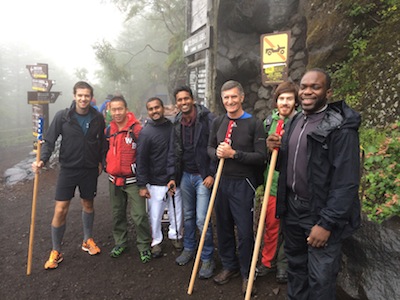
Mt. Fuji Image 1
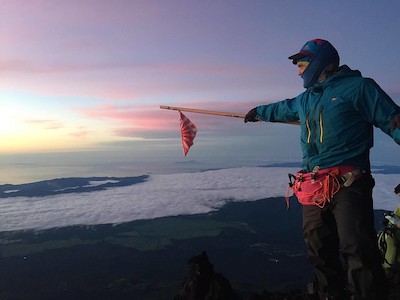
Mt. Fuji Image 2
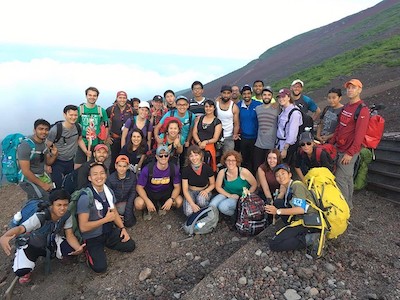
Mt. Fuji Image 3
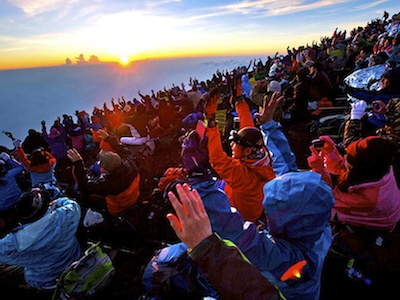
Mt. Fuji Image 4
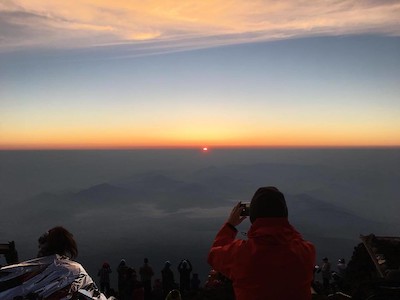
Mt. Fuji Image 5
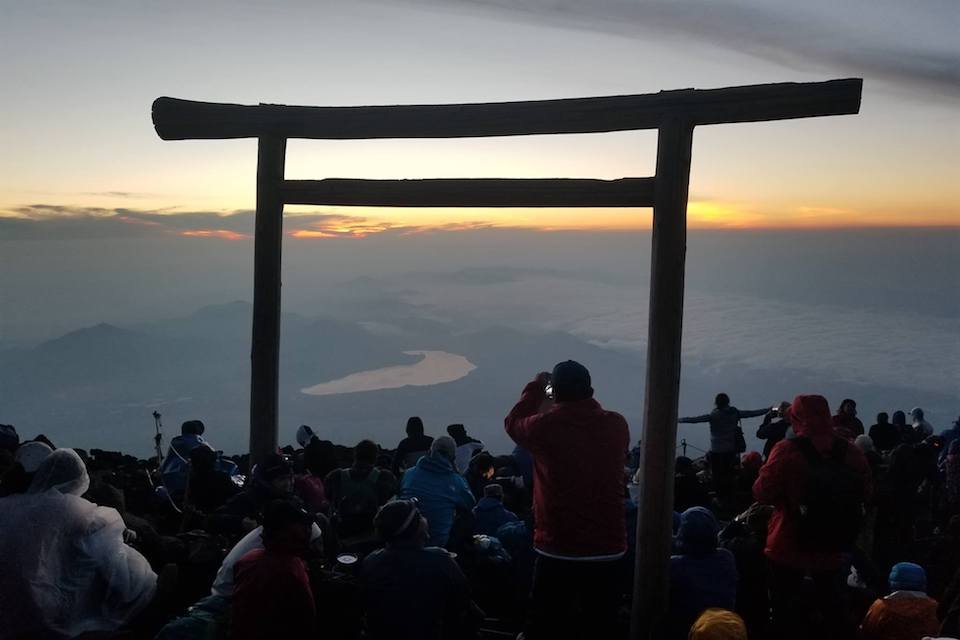
Mt. Fuji Image 6
Featured video.

ABOUT TOKYO GAIJINS OR 'TG'
We are an outdoor/sports event and travel company that regularly organize a wide variety of fun and exciting activities all over Japan. From the casual outdoor lovers to adrenaline junkies. For people who just wanted to break a sweat and for sports addicts. For those who just wanted to socialize, meet people and make new friends.
Whatever your nationality is YOU ARE MORE THAN WELCOME TO JOIN!
LET’S KEEP IN TOUCH!
We’d love to keep you updated with our latest news and offers.
Travel Agency License No. 2-6815
© Copyright 2024 • Tokyo Gaijins. All Rights Reserved.
Hike + BIKE J A P AN

CULTURAL IMMERSION through ACTIVE EXCURSIONS

Ultimate mt. fuji
Climb from sea to summit on the murayama trail, june & september.
.png)
2 days / 1 night

Mt. Fuji Area

¥70,000 (¥35,000/Day)
ACTIVITY DATA

Approximately
47 kilometers

HIGH POINT
3,776 meters

4,000 meters
TOUR DESCRIPTION
This incredible, one-of-a-kind adventure is a Hike and Bike Japan exclusive. We take you from the ocean (0 meters) all the way up to the summit of Mt. Fuji (3,776 meters) in two days. While doing the sea-to-summit has gained traction in recent years, most routes follow the roads, which turns the exercise into a a long, unforgiving and joyless slog. We instead utilize a little-known and lesser-used ancient pilgrimage trail snaking through the verdant green forest that flanks the mountain, and is surprisingly pleasant when you consider the monumental effort needed to complete this epic hike.
Mt. Fuji is not only Japan's tallest mountain (by a long shot), but it's fear-inspiring power and breathtaking symmetry have made it a spiritual and cultural icon synonymous with Japan itself. Fuji towers majestically over the surrounding landscape, and it is impossible not to be awed by its enormous scale and raw beauty. In ancient times it was the inspiration for countless legends, poems and paintings, and nowadays climbing to the top ranks as a must-do bucket-list item for most Japanese and international tourists alike.
In-Season vs. Off-Season
The official climbing season begins in early July and ends in mid-September, which corresponds to the period of warmest summer temperatures and ensures snow-free trails. It is also when the mountain huts, toilets and shops are open for business. Each year during that small 10-week window of time, upwards of 250,000 people scale Fuji's barren volcanic slopes for a chance to stand atop the iconic pinnacle of Japan. That amounts to an astounding daily average of no less than 3,500 people. Though this has become the standard period to summit Fuji, in our opinion it is not necessarily the most rewarding. Climbing during this time can feel like a mindless, touristic exercise when you're battling the crowds up the narrow trails, then sharing the summit with thousands and thousands of others. Of course you still earn an amazing feeling of accomplishment, can check the Mt. Fuji box and post about it all on instagram, but the experience itself may be less than ideal.
Though more challenging, we feel that the most enjoyable and impactful climbs of Mt. Fuji can be had in the off-season, specifically during the months of June and September . Though slightly colder than July or August, average temperatures in the shoulder season still fall within a manageable range. The most significant and satisfying difference however is the total lack of crowds; there are far fewer climbers, meaning that the mountain feels more like an actual mountain than an amusement park. This relative quiet does come with a big trade-off, as no facilities on the mountain are open and upper portions of the trail in June will likely still be covered in snow - requiring the use of crampons. Climbers must be entirely self-sufficient, and carry all necessary food, water and gear from start to finish.
From the Sea vs. From the 5th Station
Nearly every one who sets out to climb Mt. Fuji does so in-season, and travels by bus two-thirds of the way up the mountain to what is known as the "5th Station" (between 2,000m and 2,500m of elevation, depending on which trail is used), beginning their hike from there. This is a demanding climb from start to finish that steepens the further you ascend, and one that takes place entirely on rocky, red volcanic slopes with little vegetation or other distractions. It gives you the chance to experience the mountain above tree-line , but bypasses a lot of the other unique and beautiful features of Fuji.
Though it is far more physically demanding and time consuming, starting at the ocean is an incredibly rewarding, once-in-a-lifetime achievement that takes hikers on a multi-layered journey from the ocean to the barren volcanic summit crater of Mt. Fuji, passing through cities, picturesque tea fields, and lush mossy forests along the way. It is definitely the route less traveled, and a rare chance to see a completely different side of one of the world's most climbed peaks.
Japan has numerous ancient footpaths, trade and pilgrimage routes crisscrossing the country, some of which have exploded in popularity in recent years amongst both domestic and international tourists. Most notably the Nakasendo and the Kumano Kodo are now a part of many tourist's Japan itineraries . These wonderful trails combine the perfect mix of hiking through both splendid scenery and culture, and it is easy to see why they have gained such prominence and recognition. The Murayama Trail is basically Mt. Fuji's version, but is almost completely unused by even the Japanese, and wholly unknown to those outside of Japan. In the last few years, Fuji city has began promoting a sea-to-summit route called the "Mt. Fuji Tourism Climbing Route 3776", but it uses a different trail. In fact, little information or maps are available in Japanese for the Murayama Trail, and no information is available in English as far as we can tell. Furthermore, the trail can be confusing through the populated areas at lower elevations and completely unmarked and very hard to follow through the forested section. Combine that with the remoteness, challenging terrain, and lack of facilities - and this is one of those routes where going with an experienced guide is a must.
This is the hardest trip Hike + Bike Japan currently offers, and the level of physical fitness to complete this this one-of-a-kind challenge should not be underestimated. On this hike, we will cover a distance of roughly 47km, with approximately 4,000 meters of total elevation gain, and we should expect to be on the trail for around 8 hours on day one, and as many as 13 hours on day two. This intense level of activity is best suited to runners, hikers or trail runners who train regularly and have experience completing long distances with large elevation gains in a single day. Please contact us for the full itinerary, or to see whether this trip is right for you.

IMAGE GALLERY (June, 2018)

RELATED VIDEO (June, 2018)
This is one of our locally organized and locally guided tours, where pricing is based on a flat guiding fee of ¥35,000 per day. All other expenses during the course of the tour are to be paid by the customers as they are incurred. Contact us for a detailed estimate of those expenses before booking.
PICK-UP & DROP-OFF
Complimentary pick-up and drop-off can be provided from/to Fuji Station (local train hub) or Shin-Fuji Station (bullet train hub), whichever is most convenient for you.
There is no minimum number of participants for this tour
Group size will be limited to a maximum of 4 persons .
WHAT TO BRING
Click on the button below for a comprehensive, downloadable list (PDF) of required and recommended gear specific to this adventure.
IMPORTANT NOTICE
Please note that this tour is scheduled to take place outside of the normal Mt. Fuji climbing season, in the months of June and September, when there is more variability in temperatures and climbing conditions than in the standard climbing season of July and August. Because of this, and due to the extended duration and intensity level of this tour, it may be necessary for our safety and yours to cancel or reschedule on short notice due to incoming weather systems, unfavorable snow conditions, extreme temperatures and/or other factors that would could possibly become a danger. In such case, we will gladly provide full refunds of the entire tour amount, including the deposit if alternately proposed dates do not work with your schedule.
BOOKING & PAYMENT
For your convenience and ours, bookings are made through our online booking platform by clicking on the 'BOOK' button below and following the steps presented: (1) Choose a start time/date (2) Fill out the required information (3) Enter a coupon code (if applicable) (4) Complete your booking by clicking on the 'Book It' button.
Upon confirmation of your booking, we will reach out to you through the contact information you provided to confirm or customize your itinerary and to follow up with any further questions or instructions. In general, payments are accepted in cash on the day of the tour.
Ultimate mt. Fuji
From sea to summit on the murayama trail, ¥70 ,000 guiding fee, contact us.
If you would like to contact us to ask questions, receive more information, or inquire about booking this trip, please either connect with us directly using the chat feature located on the bottom right of your screen, or submit an inquiry through the contact form below. We are looking forward to hearing from you!
- Tokyo Attractions
- Fuji Q Highland
- Fuji Five Lakes
- Fujinomiya 5th Station
- Arakura Sengen Shrine
- Trails & Routes
- Mount Fuji Tours
- Plan Your Visit
- Restaurants
- Climbing Mt. Fuji
- TeamLab Planets Tokyo
- Tokyo Skytree
- Tokyo Tower Tickets
- Madame Tussauds
- FujiQ Highland
- LEGOLAND Discovery Center Tokyo
- Tokyo Sanrio Puroland
- Moomin Valley Park
- Edo Wonderland
- Roppongi Hills
- Tokyo Dome City
- Hop-On Hop-Off Tours
- Sightseeing Cruises
Explore Mt. Fuji with the Best Guided Tours & Activities from Tokyo
Why take a mt. fuji tour.

- Expert insights: Gain in-depth knowledge about Mt. Fuji, Fuji Five Lakes, the volcanic valley and other hotspots from a local guide proficient in English, Japanese, and Chinese.
- End-to-end curated itineraries: Nature lover, onsen enthusiast or retail therapy, we’ve got a guided tour for every traveler. Maximize your time and get the most out of your Mt. Fuji visit with our curated itineraries.
- Convenient transfers: Benefit from hassle-free pick-up and drop-off from Tokyo without the stress of navigating transportation logistics.
- Celebrate culture: Dip your toes into traditional Japanese culture on your guided tour. Be it soaking in an onsen to seeing Shinto rituals at shrines, and even trying traditional regional Japanese dishes — we’ve got you covered.
Which Mt. Fuji Tour is Best for You?

Guided nature tours
Duration: 10 hours Best for: Nature lovers Ticket: ¥ 7,800 onwards
Why go for this tour?
- Get to Japan’s top-rated UNESCO world heritage site with hassle-free round-trip transfers from Tokyo
- Connect with nature and see the Fuji Five Lakes, Arakura-yama Sengen Park, Fugaku Wind Cave, and Narusawa Ice Cave.
- Depending on your choice of tour, you can also visit Oshino Hakkai and see 8 natural hot springs.
- Get expert local insights into the region’s geology and lore from your Chinese/Japanese-speaking guide.
- Should you choose a tour with lunch, you’ll get to try hot pot and traditional Yamanashi soup.
Recommended Tours
- From Tokyo — Mt. Fuji, Lake Kawaguchi & Lake Yamanaka Guided Tour
- From Tokyo — Mt. Fuji, Lake Kawaguchi, Oshino Hakkai, Ice & Wind Caves Guided Tour with Lunch

Guided tours with onsens
Duration: 10 hours 30 minutes Best for: Onsen enthusiasts & relaxation retreats Ticket: ¥10,000
- Get convenient pick-ups and drop-offs from Tokyo to Mt. Fuji with this expert-led guided tour.
- Capture stunning views of Japan’s tallest peak at the 4,000-year-old volcanic valley: Owaku-dani. Don’t miss Lake Ashi while you’re here.
- Enjoy a therapeutic and traditional Japanese onsen at Konohananoyu or opt for retail therapy at Gotemba Premium Outlets. Unwind your way!
- Get up close with the legendary Hakone Shrine dating back to the samurai ages.
- From Tokyo — From Tokyo — Mt Fuji, Lake Ashi, Owakudani Valley & Onsen Guided Day Tour

Private guided tours
Duration: 10 hours Suited for: Travelers wanting an exclusive experience Ticket: ¥67,014 onwards
- Kickstart your Tokyo to Mt. Fuji adventure with a curated private tour, complete with luxury private transportation (5 seaters to 13 seaters), and a personal English-speaking guide.
- Get hassle-free hotel transfers from Tokyo to Mt. Fuji.
- Watch Mt. Fuji reflected in the crystal clear waters of Lake Kawaguchi before stopping by Oshino Hakkai, a traditional village with 8 volcanic ponds.
- Learn about Japanese culture at the Kitaguchi Hongu Fuji Sengen Jinja Shrine.
- Stop at the Gotemba Premium Outlets to get souvenirs and local goods to take home.
- From Tokyo — Private Tour of Mt. Fuji, Lake Kawaguchi & Oshino Hakkai with Hotel Transfers

Guided tours with shopping stops
Duration: 11 hours Suited for: Culture & shopping lovers Ticket: From ¥7,900
- Get round trip Tokyo to Mt. Fuji transfers in air conditioned vehicles, complete with English, Chinese, and Japanese-speaking local expert guide. You’ll return knowing Mt. Fuji like the back of your hand.
- See Mt. Fuji from the iconic 5th Station, offering a close encounter with the majestic peak.
- Learn the lore behind Oshino Hakkai's sacred ponds, fed by the crystal-clear water from Mt. Fuji's melting snow.
- Explore the charming village of Oshino Hakkai, the historic Kitaguchi Hongu shrine and see Lake Kawaguch.
- Choose your post-Fuji adventure—indulge in the traditional Japanese Onsen for a healing retreat, enjoy the therapeutic benefits of the hot spring, or opt for a shopping spree at a bustling outlet mall.
- From Tokyo — Mt. Fuji, Oshino Hakkai, Onsen Hot Springs or Outlets Guided Day Tour
Highlights of a Mt. Fuji Tour

Mt. Fuji or Fuji San, standing at 3,776 meters, is Japan's highest and most iconic peak, revered for its symmetrical beauty and cultural significance. Did you know this Mt. Fuji is an active volcano is made of 3 distinct volcanoes.

Oshino Hakkai
Oshino Hakkai is a traditional Japanese village near Mt. Fuji, famous for its eight crystal-clear springs fed by the melted snow of the iconic mountain. These sacred ponds, surrounded by traditional thatched-roof houses, offer a culturally rich and delightful experience for you.

Owakudani Valley
The 4,000-year-old Owakudani Valley, nestled near Mt. Fuji, is a geothermal wonder renowned for its sulfuric hot springs and volcanic activity. You can observe billowing steam vents and indulge in Owakudani's famed black eggs, believed to add seven years to one's life when consumed.

Chureito Pagoda
The Chureito Pagoda, perched atop Arakurayama Sengen Park, offers unobstructed views of Mt. Fuji. This stunning five-story pagoda is a popular spot for photographers, especially during cherry blossom season, providing a rich contrast against the majestic beauty of Japan's highest peak.

Hakone Shrine
Hakone Shrine, nestled near Lake Ashi in the Hakone region, is a sacred Shinto sanctuary renowned for its picturesque torii gate standing in the tranquil waters. Surrounded by lush greenery, it offers views of Mt. Fuji and the surrounding landscapes.

Lake Yamanaka
Lake Yamanaka, one of the Fuji Five Lakes, graces the northern foothills of Mt. Fuji. The lake provides you with opportunities for boating, lakeside strolls, and reflections of the iconic mountain.

Fugaku Wind Cave
Fugaku Wind Cave, carved by nature's forces, reveals an ancient geological tale with its intricate tunnels and dramatic rock formations. Step into the cool abyss, where time seems to echo through the rugged, darkened corridors.
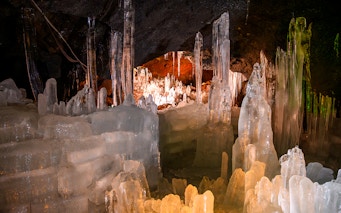
Narusawa Ice Cave
Narusawa Ice Cave, a subterranean marvel near Mt. Fuji, unveils a frozen underworld of ancient lava formations and towering ice pillars, offering a unique glimpse into the region's geological history. The cave's chilly passages provide an intriguing contrast to the fiery origins of nearby volcanic activity.

Arakurayama Sengen Park
Arakurayama Sengen Park offers a commanding view of Mt. Fuji, with the Chureito Pagoda providing a dramatic foreground. The 397-step climb unveils an expansive landscape, making it a notable spot for both nature and photography enthusiasts.

Lake Kawaguchi
Lake Kawaguchi, nestled at the base of Mt. Fuji, mirrors the peak.. Its expansive waters quietly embrace the essence of the Fuji Five Lakes region. The lakei has a resident population of over 1,000 swans!

Konohananoyu hot springs
Konohananoyu hot springs offer a rejuvenating escape, where the soothing thermal waters provide a therapeutic retreat. The mineral-rich baths at Konohananoyu promise a revitalizing experience, complemented by the tranquil surroundings of Mt. Fuji.
Frequently asked questions about Mt. Fuji tours
The cost of a Mt. Fuji guided tour varies based on the type of tour and inclusions. Prices can range from affordable (starting from ¥7,900) to premium for private tours.
The best Mt. Fuji tour depends on your preferences. Consider factors like duration, inclusions, and reviews. Explore the options available in our collection to find the one that suits your interests before booking your Mt. Fuji trip.
Opting for a guided tour ensures expert insights, efficient exploration, and cultural immersion. Tours typically include transportation, an English-speaking guide, and visits to key attractions like Arakurayama Sengen Park, Lake Kawaguchi, and Oshino Hakkai.
Mt. Fuji guided tours vary in duration. Full-day tours are common, lasting approximately 10 hours to 11 hours 30 minutes. Check the specific itinerary and duration details of the Mt. Fuji Tours before purchasing your Fuji tour ticket to make the best choice.
Mt. Fuji Tours provides guides fluent in English, Japanese, and sometimes Chinese.
Guided tours typically cover key attractions like Arakurayama Sengen Park, Hikawa Clock Shop Street, Oshino Hakkai, and Lake Kawaguchi. You may find specific details on the Mt. Fuji Tours page for each experience.
Generally, you can cancel Mt. Fuji tours up to 24 hours in advance for a full refund. Nevertheless, checking the cancellation policy for each Mt. Fuji tour available on the site is advisable.
Many Mt. Fuji tours are family-friendly and suitable for children.
Yes, food is included on some Mt. Fuji tours, though not all of them. However, you are free to partake in the local cuisine served at nearby eateries.
How to Climb Mount Fuji: The Complete Guide
:max_bytes(150000):strip_icc():format(webp)/jessicaesaprofile-7bb1d24acee44aa5839ac875cb2e0bff.jpg)
PRASIT CHANSAREEKORN / Getty Images
- Trails to Climb
How to Reach the Trails
The best time to climb mount fuji, night climbing and mountain huts.
- Permits & Fees
- What You Should Bring
Safety Tips
Mount Fuji has been a place of fascination for centuries with its distinctive cone shape and snow-capped peak. As the tallest mountain in Japan (the summit reaches 12,388 feet), it has been portrayed endlessly in Japanese art, music, and literature perhaps, most famously by artist Katsushika Hokusai who created the 36 views of Mount Fuji.
The views from the top are transformative, and reaching the summit yields a feeling of complete euphoria. Named a UNESCO World Heritage Site in 2013, there is no trip in Japan that comes close to the hike up Mount Fuji, making it a truly unique experience and an item on many a traveler's bucket lists.
Mount Fuji is an active stratovolcano (last erupting in 1707) with three volcanoes on top of each other: the Komitake volcano, the Kofuji volcano, then Fuji at the top. This means that a trek to the summit is is makes for a dynamic climb with four trails available, depending on how much of a challenge you’re after, and the opportunity to slide down the volcanic rocks on your descent.
Due to the adverse weather conditions, Mount Fuji can only be climbed during the climbing season, and while it’s possible to climb off-season (by following certain protocol) it’s not advised. This means, ticking that this incredible bucket-list experience off your list will come with a certain amount of planning. While it is possible to climb Fuji on a day trip from Tokyo , many people choose to stay overnight by booking a mountain hut in advance or by starting the climb late and hiking until dawn to see the sunrise. With all that said, here’s everything you need to know about planning your Mount Fuji climb.
Trails to Climb Mount Fuji
There are four trails, each with ten stages, that you can take to the summit of Mount Fuji though most hikers typically start from the fifth station. Each of these trails is color-coded for convenience:
- Yoshida (Yellow Trail): This is the most popular trail to climb Mount Fuji and starts at the Fuji-Subaru Line 5th Station leading to the summit from the north side of the mountain. It’s perfect for people wanting to stay overnight before finishing the hike at dawn as there are mountain cabins and other facilities scattered on the way up. Conversely, there is a separate trail to descend with far fewer accommodation options. This trail diverges from the Subashiri route at the eighth station so pay attention to the signs once you get there. The route typically takes six hours to ascend and four hours to descend and is considered a beginners trail.
- Subashiri (Red Trail): The Subashiri trail shares the Yoshida trail until the eighth station where it diverges to become a climb more suited to experienced hikers. This is because the forest zone extends up into high altitudes and night hikers have to be particularly careful and bring a headlamp. Hikers are rewarded with more varied views on this trail. During descent, you will walk down a trail of volcanic gravels making for a more exciting and intense experience. The route typically takes six hours to ascend and three hours to descend.
- Fujinomiya (Blue Trail): This is the second most popular route to the top of Mount Fuji as it’s the quickest providing a steep and rocky incline to the top taking just five hours. This trail approaches Fuji from the south side starting at Fujinomiya Trail 5th Station and ascends and descends via the same route so there’s less confusion. The descent takes three hours.
- Gotemba (Green Trail): This is the most challenging climb up to Mount Fuji. The route is a gentle slope with a steady incline to the top; it’s suited to experienced hikers who can handle the large altitude difference otherwise it can quickly become exhausting. You will see far fewer people attempting this route so your hike will be quieter and you will always have a clear view of Fuji as you climb. This route also allows offers a fun descent sliding down volcanic gravel. Note that there are no huts or toilets on this route until the seventh station. The route typically takes seven hours to ascend and three hours to descend.
During the climbing season, which lasts the summer period, shuttle buses run regularly from 6:30 a.m. to 8:30 p.m. to and from nearby train stations for 1,500 yen (around $13.75) each way. You can also catch the bus directly from Tokyo, Shizuoka, and Gotemba which will take you directly to the Fuji Subaru Line 5th station. You can also take the Fuji Excursion Limited Express train from Shinjuku Station directly to Kawaguchiko Station (about 2 hours one way).
The trails are well sign-posted and maps are available at tourist information centers.
Contrary, to popular belief you can hike Mount Fuji outside of the peak season but there are things you will need to take into account. Typically you should aim to hike Mount Fuji over the summer to have the full experience. Here's what you need to know about climbing peak season, off-season, and night climbing.
- Peak season: The climbing season falls between July to early September and there is no need for a guide or permits to climb. Public transport and all trails and facilities like lodges, shops, and toilets are open to the public.
- Off-season : Outside of these months the trails and facilities are closed and climbing isn’t advised due to adverse weather conditions. It’s also much more difficult to reach the mountain with public transport.
While some people do still attempt the climb outside of these months, particularly from April until early June, it can be dangerous, particularly in winter, due to snow and shouldn’t be attempted by inexperienced climbers. Many hikers also opt to ski or sled back down Mount Fuji. Many hikers also opt to ski or sled back down Mount Fuji.
It’s very common to climb Mount Fuji just before dawn or overnight so you won’t find yourself alone making this climb. Most people opt to start hiking late afternoon and stopover at a mountain hut , which can also help you get used to the altitude. An early start will have you at the peak for sunrise, just make sure to bring a head torch. The mountain houses are simple places to rest, don't have shower facilities, and can be crowded; they are simply to rest in. Toilets and simple meals or snacks are available.
Note: Camping on Fuji is prohibited so there's no need to bring a tent.
Permits & Fees
Permits are not required to hike Mount Fuji at any time of year, however, if you hike during the off-season the prefecture police department requests people to complete a climbing form in case of an emergency.
There are no fees involved with hiking Mount Fuji but facilities including toilets, refreshments, lodges, and transport all cost money. Make sure to bring cash and coins with you.
What You Should Bring to Hike Mount Fuji
While it’s important to pack lightly, here are some things that you should bring to make your hike easier"
- Make sure to bring cash for refreshments and transport as well as change as toilets cost 200 - 300 yen
- The weather changes quickly on Fuji so always bring rain gear, gloves, and extra warm layers for when you get closer to the top
- While you can purchase food and drink at each station, this can get expensive and it’s good to have your own with you in case you’re thirsty in between stations
If you don’t want to use climbing poles, you can buy a wooden pilgrim staff which you can then have branded at the stations making for a wonderful souvenir of your climb. Make sure to bring cash as each stamp cost a few hundred yen. This is only available during climbing season.
Climbing Mount Fuji within peak season is considered a safe activity with well-marked trails and facilities but there are always some safety tips to bear in mind:
- It’s common to experience altitude sickness while climbing Mount Fuji. It’s advised that you take some time to adjust to the altitude once you reach the fifth station before continuing. If you do notice symptoms of altitude sickness such as headaches and nausea then don’t over-exert yourself and return to a lower elevation.
- Yoshida is the easiest of the four trails but still requires some hiking experience and frequent breaks are recommended. The other trails are best suited to those who climb regularly.
- Try to walk along the inner edges of the climbing tracks instead of the outer edge as it causes rocks to slip.
- Make sure you wear good hiking boots with suitable ankle support.
- If you’re hiking off-season then wearing crampons is advised and you may also need hiking poles or ice axes depending on conditions.
- Bring a headtorch if you’re likely to be walking while it’s still dark.
- As there are few trees on the climb, you need to protect yourself from UV rays with sunscreen and a hat.
18 Best Things to Do in Japan in Summer
The 10 Best Hikes in Hokkaido
Mount Fuji: the Most Famous Mountain in Japan
Yosemite National Park: The Complete Guide
The 15 Best Hiking Destinations in Asia
How to Climb Mount Kilimanjaro: The Complete Guide
The Complete Guide to Climbing Morocco's Mount Toubkal
The 15 Best Day Trips from Tokyo
Mount Sinai, Egypt: The Complete Guide
What I Learned From Climbing Mount Kilimanjaro
Mount Hood National Forest: The Complete Guide
The 8 Best Hikes in Yellowstone National Park
The Top 25 Things to Do in Japan
The 10 Best Hikes in Colorado
The Complete Guide to Visiting Pikes Peak in Colorado
The 16 Best Hiking Destinations in Europe
Climbing Mount Fuji
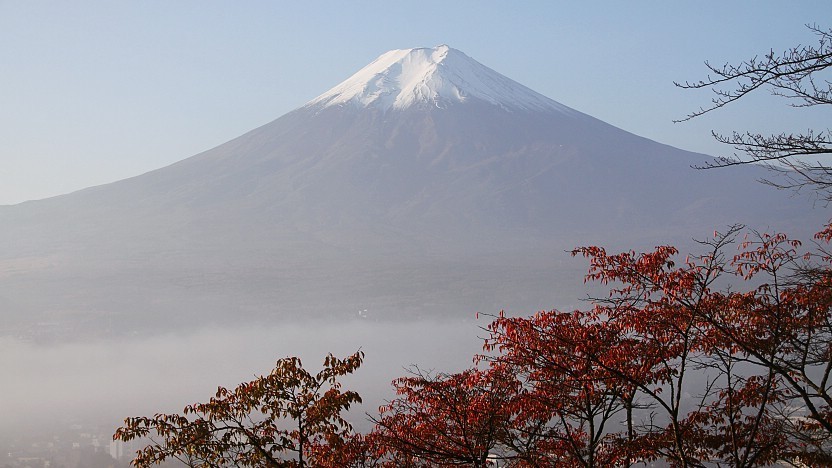
Climbing Mount Fuji (3776 meters), Japan's highest and most prominent mountain, can make for lifelong memories. The mountain itself may look more attractive from afar than from close up, but the views on clear days and the experience of climbing through the early morning hours among hundreds of equally minded hikers from across the world are very rewarding.
When to climb?
Official climbing season.
Early July to mid September is the official climbing season when the trails and mountain facilities are open. During this period the mountain is usually free of snow, the weather is relatively mild, access by public transportation is easy, and the mountain huts are operating. Anyone without much hiking experience is advised to tackle the mountain during the official climbing season. The specific dates depend on the year and trail. In recent years they have been set as follows:
- Yoshida Trail: July 1 to September 10
- Subashiri, Gotemba and Fujinomiya Trails: July 10 to September 10
Climbing Mount Fuji is very popular not only among Japanese but also foreign tourists, who seem to make up more than a third of all hikers. The peak season for climbing Mount Fuji is during the school vacations which last from around July 20 to the end of August. The peak of the peak is reached during the Obon Week in mid August, when climbers literally have to stand in queues at some passages.
While you may want to avoid the Obon Week, we believe that by avoiding the crowds in general, you would miss out one of the most interesting aspects of climbing Mount Fuji , which is the camaraderie and unique experience of ascending the mountain among hundreds of equally minded people from across the world.
In order to encounter neither too large nor too small crowds, we recommend to climb Mount Fuji on a weekday in the first half of July before the start of the school vacations. The downside of a climb in early July is the weather, which tends to be more unstable than later in the season.
Some mountain huts open a few days before the start of the official climbing season and/or remain open until around mid September. Public transportation, is considerably less frequent or non-existent outside of the official climbing season.
While there is usually no snow on Mount Fuji from late June until October, temperatures at the summit can drop to far below zero in the shoulder seasons. Only experienced hikers should consider the ascent in late June or September. If there is snow on the mountain, appropriate mountaineering equipment and experience is required.
From October to around mid June, climbing to the summit is highly perilous due to extreme wind and weather conditions, snow, ice and a risk of avalanches.
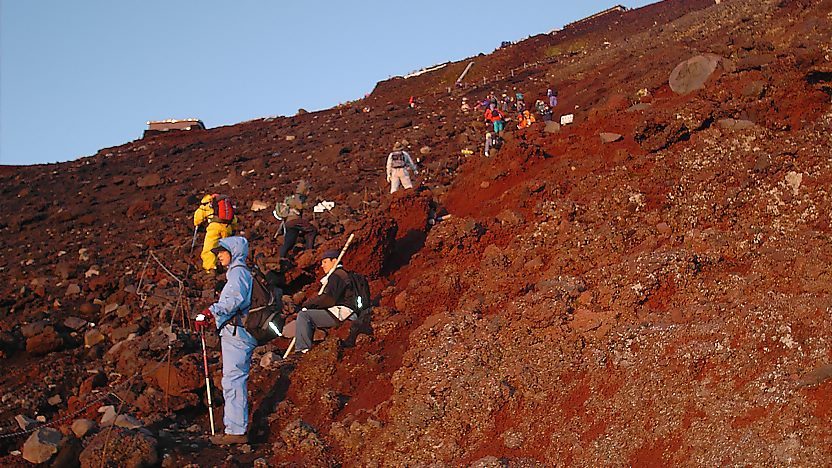
Mount Fuji is divided into ten stations with the first station at the foot of the mountain and the tenth station being the summit. Paved roads go as far as the fifth station halfway up the mountain. There are four 5th stations on different sides of the mountain, from where most people start their ascent:
- Fuji Subaru Line 5th Station (Yamanashi Prefecture) Yoshida Trail Altitude: about 2300 meters Ascent: 5-7 hours Descent: 3-5 hours This is the most popular base for the climb to the summit, and the most easily accessible 5th station from the Fuji Five Lake region and central Tokyo . Lots of mountain huts line the trail around the 7th and 8th stations, and there are separate trails for the ascent and descent. The sunrise takes place on this side of the mountain. More details...
- Subashiri 5th Station (Shizuoka Prefecture) Subashiri Trail Altitude: about 2000 meters Ascent: 5-8 hours Descent: 3-5 hours This 5th station at only 2000 meters above sea is the base of the Subashiri Trail, which meets the Yoshida Trail around the 8th station. More details...
- Gotemba 5th Station (Shizuoka Prefecture) Gotemba Trail Altitude: about 1400 meters Ascent: 7-10 hours Descent: 3-6 hours This is by far the lowest 5th station, and the ascent to the summit is accordingly much longer than from the other 5th stations. There are about four huts around the 7th and 8th stations. More details...
- Fujinomiya 5th Station (Shizuoka Prefecture) Fujinomiya Trail Altitude: about 2400 meters Ascent: 4-7 hours Descent: 2-4 hours The closest 5th station to the summit, the Fujinomiya 5th Station is the base for the southern approach via the Fujinomiya Trail. It is easily accessible from stations along the Tokaido Shinkansen . There are half a dozen mountain huts along this trail. More details...
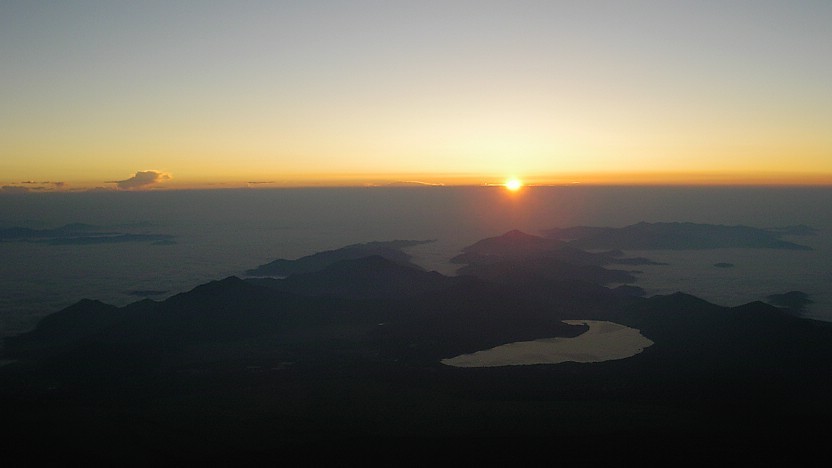
How to climb?
Is it difficult.
The ascent to the summit does not pose any major difficulties regarding climbing skills. Only at some points the terrain is rather steep and rocky. Abundant signs along the trail warn the hikers of other minor problems such as sudden wind gusts and falling rocks. However, the main challenge of the climb is the fact that it is very long and strenuous and the air gets notably thinner as you gain altitude.
Is it recommended to hire a guide?
Because the hike is not technically difficult, and there are many other hikers during the climbing season, the average person will not need a guide. However, inexperienced hikers or people who prefer to leave all the planning to somebody else may want to consider hiring a guide. There are several companies offering group or private tours, such as Klook and Willer .
Most people try to time their ascent in order to witness the sunrise from the summit. Also, the chances of the mountain being free of clouds are highest during the early morning hours.
The recommended way of doing this, is to climb to a mountain hut around the 7th or 8th station on the first day and spend some hours sleeping there before continuing to the summit early on the second day. Sunrise in summer is as early as 4:30am to 5:00am.
Another way is to start climbing the mountain in the late evening from the 5th Station and hike through the night to reach the summit around sunrise. This is a more tiring way of climbing the mountain and is strongly discouraged by the local authorities , because it brings an increased risk of altitude sickness , injury and nuisance.
Ascending and descending the mountain in a single day during daytime is also possible, but again it is not recommended for the same reasons as above. Furthermore, the mountain provides very little shelter, leaving climbers fully exposed to the sun. Visibility also tends to be worse during daytime when the mountain is frequently wrapped in clouds.
A walk around the crater of Mount Fuji takes about one hour. The mountain's and Japan's highest point is located immediately next to the weather station on the opposite side from where the Yoshida Trail reaches the peak.
Mountain huts
The Yoshida Trail is lined by more than a dozen mountain huts between the 7th and 8th stations. Other trails have fewer mountain huts. An overnight stay typically costs around 9,000 to 14,000 yen per person with two meals. Expect the huts to be extremely crowded during the peak. Reservations should be made in advance; however, getting information about individual mountain huts and making reservations is very challenging in English. Check the external links below for lists of mountain huts.
Some mountain huts also allow non-staying climbers to take a rest inside at a cost of typically 1000-3000 yen. Most also offer paid toilets (typically 200-300 yen) and sell food, water and other climbing provisions such as canned oxygen. In addition, most of the huts have special branding irons they use to brand the wooden hiking sticks (for a small fee) that many hikers purchase when climbing the mountain.
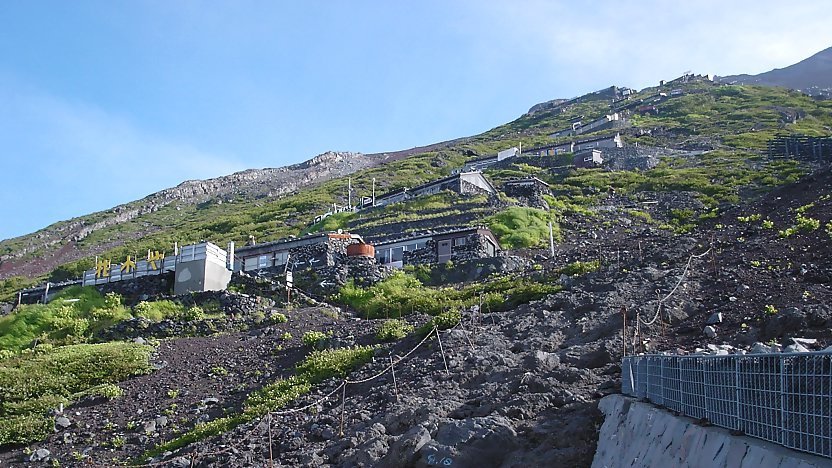
Climbing equipment
In order to enjoy a safe hike to the summit of Mount Fuji, it is crucial to bring the proper equipment. Some of the most important things to bring are listed below:
- Proper shoes The rocky, steep terrain in some sections and the potential of sudden, strong wind gusts are reasons to bring proper hiking shoes which protect your ankles.
- Proper clothes Bring proper protection against low temperatures and strong winds. It can be below zero at the summit, and strong winds often make it even colder. Bring rain gear, as weather conditions can change very quickly on the mountain. Gloves are recommended both against the coldness and for hiking the steep, rocky passages.
- Flashlight If you hike at night, a flash light is highly recommended in any season and essential outside of the peak season when the trail is not illuminated by other hikers. Most people choose head lamps, as they leave both of your hands free.
- Food It is important to bring enough water and food, particularly on the trails where there are few mountain huts along the way. Mountain huts offer various meals and drinks; however, note that prices increase with the altitude. Also, be prepared to carry home all your garbage as there are no public garbage bins on the mountain.
- Money Cash is necessary to buy provisions on the mountain like water or canned oxygen and to use the toilets along the way. It is also important to carry should you need to seek emergency shelter in one of the mountain huts.
- Hiking stick (optional) While not crucial, many hikers purchase wooden hiking sticks at the 5th Station to aid in their climb up the mountain. Hiking sticks cost about 1500-2000 yen and are sold at the 5th stations. In addition, for a few hundred yen you can get your hiking stick branded at the mountain huts along the way, turning it into a much cherished souvenir of your journey.
- Do not pick plants!
- Do not bring home any stones!
- Do not camp on the mountain!
Admission fee
During the climbing season, climbers of Mount Fuji are asked to contribute 1000 yen per person at collection stations at each trailhead. The money will be used to cover some of the expenditures arising from the huge number of climbers that visit the mountain each summer, especially regarding the protection of the environment and measures to guarantee the safety of climbers.
Altitude sickness
The human body requires some time to adjust to a sudden increase of altitude, otherwise there is a risk of headache, dizziness and nausea. Quite a few people who climb Mount Fuji , suffer from altitude sickness.
To avoid altitude sickness, you are advised to tackle the mountain at a slow pace, stay hydrated and make frequent breaks. An overnight stay at a hut around the 7th or 8th station is recommended as opposed to a straight climb to the top. Small bottles of oxygen, available at the 5th stations and mountain huts, can be an effective tool in preventing and fighting altitude sickness; however, the only reliable treatment is to descend the mountain.
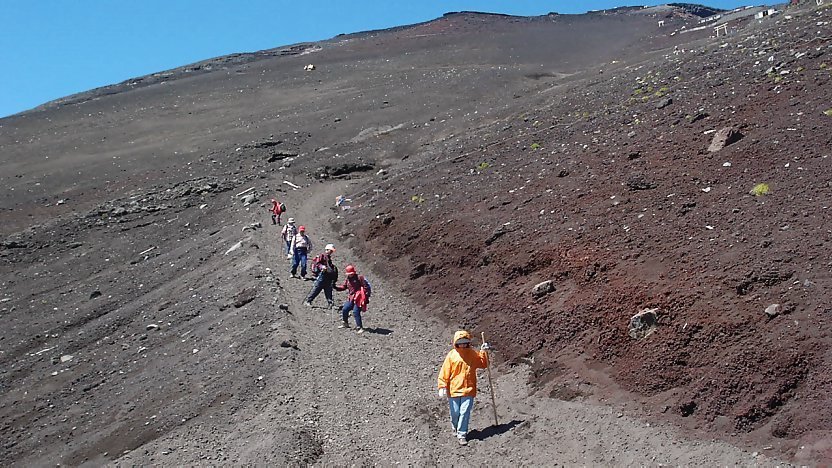
Getting there and around
Buses to fuji subaru line 5th station.
From Fujisan/Kawaguchiko Station: 1780 yen (one way), 2800 yen (round trip), 50 minutes Hourly buses during the 2023 climbing season. 4 round trips per day during the 2023 off-season. Bus Timetable (climbing season) Bus Timetable (off-season) How to get to Kawaguchiko Station
From Shinjuku Station (Tokyo): 3800 yen (one way), 150 minutes Hourly buses during the 2023 climbing season. 2-3 round trips per day during the 2023 off-season. Bus Timetable (climbing season) Bus Timetable (off-season)
Buses to Subashiri 5th Station
From Gotemba Station: 1570 yen (one way), 2700 yen (round trip), 60 minutes Every 1-2 hours during the 2023 climbing season. No off-season service in 2023. Bus Timetable (climbing season)
Buses to Gotemba 5th Station
From Gotemba Station: 1130 yen (one way), 1900 yen (round trip), 30 minutes Every 2-3 hours during the 2023 climbing season. 2 round trips in the 2023 autumn off-season. Bus Timetable (climbing season)
Buses to Fujinomiya 5th Station
From Shin-Fuji and Fujinomiya Stations: 2740 yen (one way), 3700 yen (round trip), 150 minutes from Shin-Fuji Station 2330 yen (one way), 3700 yen (round trip), 110 minutes from Fujinomiya Station 6 round trips per day during the 2023 climbing season. 1 round trip in the 2023 autumn off-season. Bus Timetable (climbing season) How to get to Fujinomiya
Access by car
The access roads to the Fuji Subaru Line 5th Station , the Subashiri 5th Station and the Fujinomiya 5th Station are closed to regular cars for certain periods during the climbing season. Please see the respective pages for more details.
Questions? Ask in our forum .
Links and Resources
Official website for mt. fuji climbing, hotels around mount fuji.
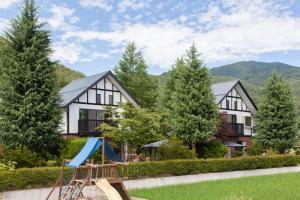
Experiences around Mount Fuji
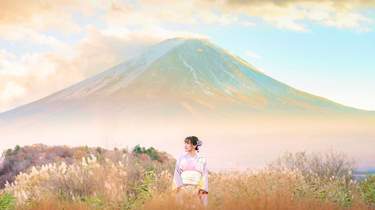

- Best Hikes In The World
- Appalachian Trail
- European Hikes
- Nepal Hikes
- Patagonia Hikes
- See All Hikes
- Mount Kenya
- Mount Kilimanjaro
- Mount Toubkal
- See All Mountains
- South Africa
- New Zealand
- Switzerland
- United Kingdom
- Packing Lists
Hiking Mount Fuji – 11 Top Tips And FAQs About Japan’s Mt Fuji Hike
In the Fuji-Hakone-Izu National Park sits Japan’s highest peak, Mount Fuji. It is a dormant stratovolcano that reaches 3 776m above sea level and has not erupted since the year 1707. Mount Fuji has been deemed a UNESCO World Cultural Heritage Site and is considered sacred by the people of Japan. It is a spectacle that can be seen for miles! Trekking Mount Fuji is considered as one of the best hikes in Asia . Below is a complete guide to hiking Mount Fuji, one of the most beautiful mountains in the world . I've included information on the different routes to the summit, the costs and preparation involved, as well as information on where to stay and what to bring. This article contains affiliate links. It won't cost you extra, but if you buy something using our links, it might help us keep the site alive!
Mount Fuji Hiking (11 FAQs)
What are the different hiking trails to summit mount fuji.
There are four routes to the summit of Mount Fuji, the most popular of which is the Yoshida Trail. We’ve listed the trails below beginning with the most popular route. Each trail begins at a designated 5th Station. Trekking Mount Fuji is popular amongst locals and tourists. It can be quite the social experience. However, if you are looking for some solitude, there are trails quieter than others.
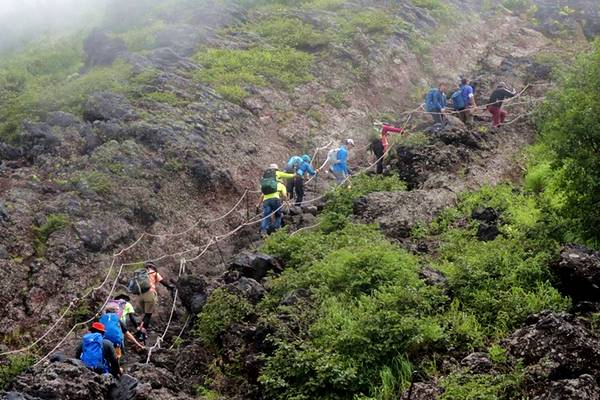
1. The Yoshida Trail
- Altitude: 2 300m
- Distance: 13 kms
- Ascent Time: 6 hours
- Decent Time: 4 hours
The Yoshida Trail is by far the most popular trail to summit Mount Fuji and is very crowded throughout the hiking season. Beginning at the Fuji-Subaru Line 5 th Station, the path zigzags up the mountain on the north side giving you some epic views. The trail is relatively flat and it’s a well-established path, making it the easiest trail to the summit There are shops, information offices and public toilets available and this route has the largest number of mountain huts available. You will be using a different trail to descend and there are no mountain huts on the way down, so keep this in mind when planning your trek.
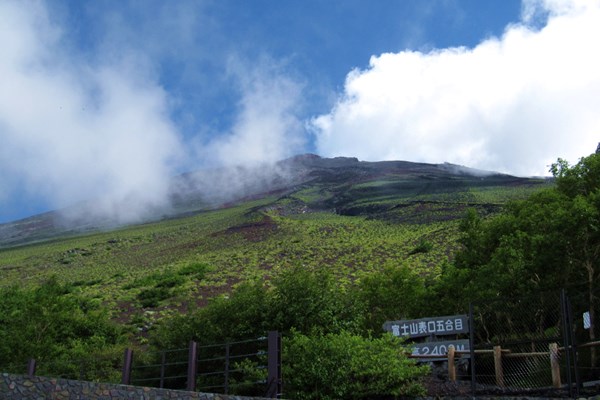
Photo by jenterri
2. The Fujinomiya Trail
- Altitude: 2 400m
- Distance: 7.6 kms
- Ascent Time: 5 hours
- Decent Time: 3 hours
This trail is the second most popular on the mountain. It begins at the Fujinomiya Trail 5th Station and leads to the summit from the south side of the mountain. It can become crowded due to the popularity of being closer to the summit than the other routes. There is only one shop, an information office and public toilets available on this route. The Fujinomiya Trail is rocky and steep, so if you decide to hike this path, make sure you are well prepared, have good experience and are fit to hike in this terrain. This trail has mountain huts available at every station and the same path is used to descent.
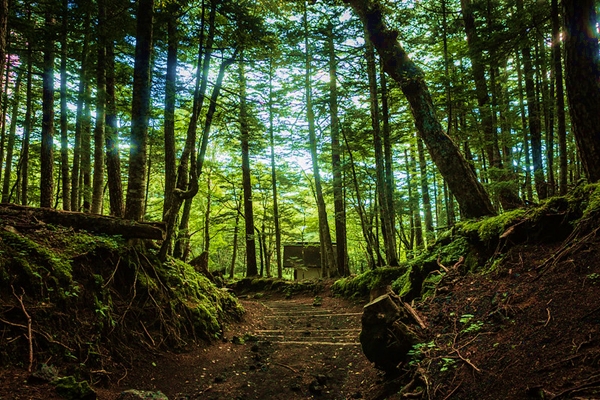
3. The Subashiri Trail
- Altitude: 2 000m
- Distance: 12 kms
- Ascent Time: 6 hours
- Decent Time: 4 hours
You’ll get some of the best sunrise views on this route! The Subashiri Trails starts at the Subashiri Trail 5th Station and leads to the top of the mountain from the east side. The path slopes gently towards the summit and it’s more forested than the other three trails meaning you’ll have more shade cover on this route. Bring a headlamp or flashlight if you’ll be hiking later in the day because it can be difficult to navigate the forest in the dark. The path meets with the Yoshida Trail from the 8th Station to the summit, so be aware that at this point it will become crowded.
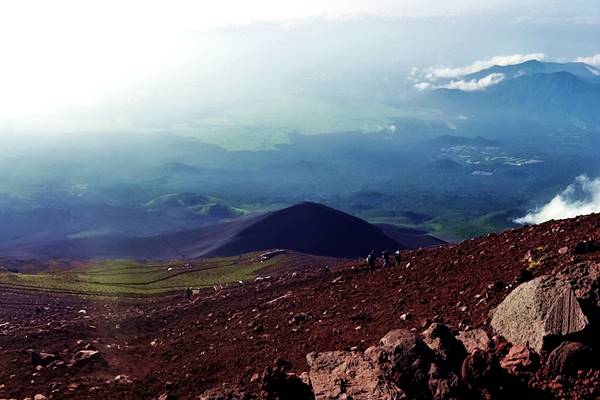
Photo by WorldContributor
4. The Gotemba Trail
- Altitude: 1 450m
- Distance : 19.5 kms
- Ascent Time: 8 hours
Important Note on the descent : The descent on the Subashiri Trail and the Gotemba Trail is a fun experience because you get to go straight down on a trail of volcanic gravel. It’s like sand and that you can coast down the mountainside like riding a dune. In Japanese this ‘Sand run’ is called ‘Sunabashiri’. It’s a good idea to pack some goggles and gaiters to keep the sand out of your shoes and pebbles and eyes.
This is the least crowded trail to the summit of Mount Fuji. This hike is the longest and most strenuous route of the three. The Gotemba Trail takes you up the southeast side of the mountain and gives you a fantastic view of Lake Yamanaka. There are fewer mountain huts available on this route which is something to consider when planning your trek.
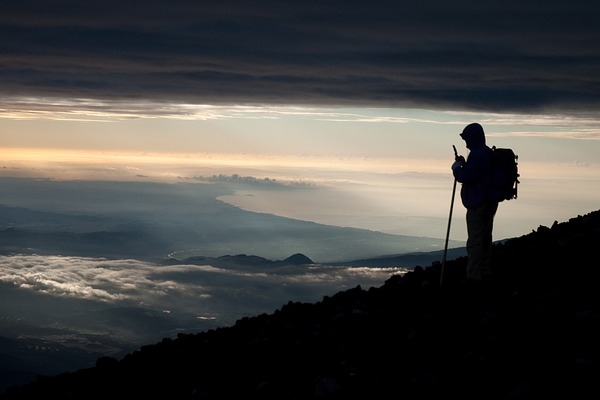
How difficult is it to Hike Mount Fuji?
Mount Fuji’s summit sits at 3 776m above sea level. There are areas with harsh elevation, steep inclines and the weather can be extremely unpredictable. Thunderstorms, downpours, snow storms and hail can happen at any time and so it is necessary to be prepared for all weather conditions. At the same time, preparing yourself for hiking at high altitudes and educating yourself on the signs and symptoms of altitude sickness will go a long way to prepare. While it may sound daunting, with the proper gear, training and planning, you will be able to reach the summit. Bullet climbing or climbing without taking a rest overnight is not recommended. Altitude sickness and injury are frequent in hikers who attempt the hike in one day. Pace yourself and spend the night sleeping on the mountain side!
You may also like : Best hikes in Japan
When is the best time to trek Mount Fuji?
The official hiking season for Mount Fuji is from July to September. The trails are clear of snow, the weather is mild, and all hiking facilities are open and available. While this is the busiest time on the mountain, I highly recommend hiking during this peak period if you have no previous hiking experience. Late July to early august will give you the best clear skies and warm temperatures that you can get.
Quick Tip: If you want to avoid the big crowds during the peak hiking season, consider trekking Mount Fuji on a weekday during the first two weeks of July. This is before the school holidays begin in Japan.
If you’re hiking from the end of July to the end of August, the mountain will be packed with tourists and locals on holiday. Saturdays are the most crowded on the mountain and no matter what day you summit, there is always a crowd during sunrise!
During the off season, it is still possible to summit Mount Fuji; however it is not a good idea to attempt this if you have no prior experience trekking at high altitudes. Rescue personnel will not be readily available during this time, most mountain huts are closed, and transport is limited. These are things to keep in mind before attempting an off-season hike to Mount Fuji. It is assumed that if you hike during this time, you will be climbing at your own risk. From late November to March/April is winter time in Japan. It is not recommended to hike Mount Fuji during this time as it will be extremely dangerous to summit in the snowy and unpredictable weather conditions.
Do I need to train for the Mount Fuji Trek?
Over 500 000 people summited Mount Fuji in one year. This makes it the most summited mountain in the world. However, some prior training is expected when hiking at a high altitude. Hike a few times a week and add some elevation to your path if possible. Regularly running or jogging will help to prepare you for this trek. Get some cardio in to your routine and work on your leg strength. Some sections are steep and rocky and require stamina and strength to persist to the top. While you don’t need to become a marathon runner or a body builder to consider hiking Mount Fuji, having a good physical condition will go a long way to helping you summit this mountain.
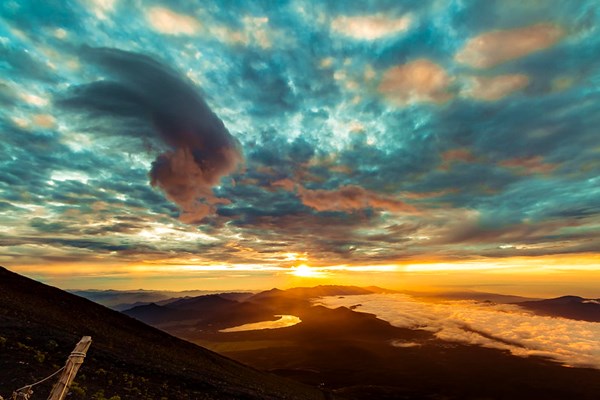
What accommodation is available on Mount Fuji?
There are no camping sites on Mount Fuji and camping is not permitted on the mountain. Mountain huts are available on all trails, and it is a good idea to book ahead of time to ensure you do not miss out. The huts will get full very quickly during peak seasons, and many will not be open during the off seasons. There is also free WIFI available in all the huts on the mountain. Mountain huts do not have handwashing or bath facilities and they may not accept payment with cards. The mountain huts are not considered luxury accommodations and you will be staying in close proximity to the other hikers, so be sure that this is something you are comfortable with.
What other costs do I need to consider for Hiking Mount Fuji?
There are several costs you need to consider when planning a hike up Mount Fuji.
Admission Fees: Admission fees are paid at each trailhead and cost about 1000 Yen per person. This fee covers conservation of the environment, safety precautions on the trails and cover any expenses that may arise from the number of hikers that summit Mount Fuji every season. Toilets: All toilets are eco-friendly and use oyster shells, sawdust and other eco-friendly biodegradable products to treat waste. This initiative is further supported by a small fee to utilize the toilet facilities, so be sure to bring your Yen coins for this reason. The average price for entry is 100 – 200 Yen. Mountain Huts: The huts are available overnight for around 7000 – 9000 Yen. Some Mountain Huts will provide two meals which would be included in the price, so check this when you make your booking. Some huts also have a rest option where you do not need to stay overnight, this costs around 1000 – 2000 Yen per hour. Food / Water / Hiking Accessories: Some stations and mountain huts have stores which sell food supplies, water and hiking provisions such as oxygen. If you require stocking up along the trail, then be sure to bring some cash for your shopping needs. A bottle of water can cost up to 500 Yen. Other costs: Meals at the mountain huts (if not included in accommodation price), souvenirs, offerings at shrines and collecting branding iron-stamps on your wooden hiking stick.
Important Note : Purchase your necessities when you are lower on the mountain, the prices get higher the higher you get on the mountain.
Do I need a permit for hiking Mount Fuji?
Summiting Mount Fuji does not require a permit; however, every person has to complete and submit a Climbing Plan. This is so that emergency responses have an idea of what route you have planned to take, your schedule, and what equipment you have with you in the case of an accident or disappearance. This helps the emergency response teams reach you as soon as possible.
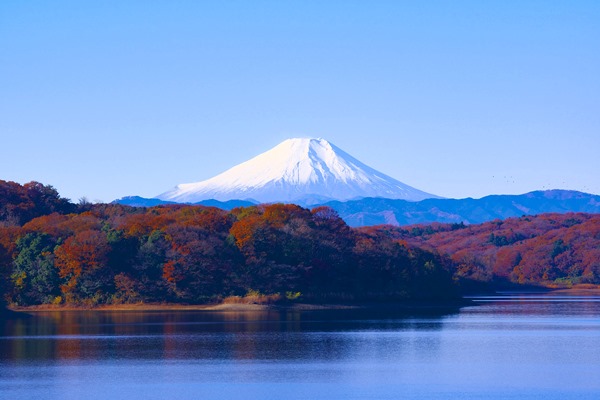
Are there any rules or regulations to be aware of before climbing Mount Fuji?
The Fuji-Hakome-Izu National Park is a designated as a Special Place of Scenic Beauty and is a World Heritage site, meaning there are a few rules and regulations in place to protect the mountain. These acts are punishable by law.
- Defacing Mount Fuji
- Disturbance of plants and animals
- Taking lava from the area
- Camping or fires
- Releasing pets or animals into the area
- Planting seeds or seedlings in the area
There is a general ‘Country Code’ that includes the above as well as littering, straying off trails, and just general respect for the mountain and local people. Please always respect your environment so that gems like these can be preserved for future generations to experience.
How do you get from Tokyo to Mount Fuji?
You’ll find Mount Fuji about 100 kilometres from Tokyo . The easiest way to get to Mount Fuji is to take the bus from Shinjuku Highway Bus Terminal which will take you to the Subaru 5th Station, the beginning of the Yoshida Trail. The bus takes about 2.5 hours to get there, and tickets can be booked online in advance.
For a more scenic route to the mountain, consider taking the train which will take you through beautiful landscapes and takes about 4 hours to reach the station.
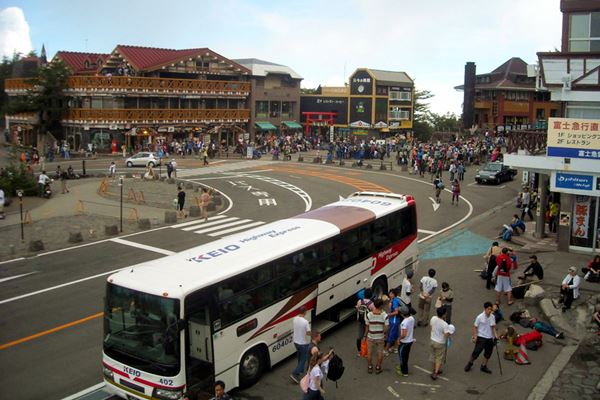
What do I need to pack to hike Mount Fuji?
One of the most important items to pack for your Mount Fuji trek is warm clothing, regardless of the season. Temperatures at the summit can reach below 6 degrees Celsius. Having rainproof clothing is also essential due to the unpredictable weather conditions. Some important considerations when packing for your trek:
- Check your gear before you leave to ensure it is all in good condition
- Take unpredictable weather conditions into account
- Take unexpected delays due to these changes in weather into account
While you can stock up on water during your hike at the mountain huts and stores, there is nowhere available to purchase water on your descent and so you will need to keep this in mind. Bring 1L of water for your climb and stock up at the mountain huts. You’ll need around 3 -4 Litres for your entire hike. Make sure to keep hydrated as needed, dehydration can lead to altitude sickness. You might want to use a hydration bladder for this hike. We recommend the HydraPak Shape-Shift Reservoir .
What gear, clothing and accessories do I need to Hike Mount Fuji?
Below are our recommendations for gear, clothing and accessories you'll need to hike Mount Fuji.
- 30L backpack with hip strap
- Collapsible Hiking Poles
- Backpack rain cover
- Antibacterial hand gel
- Insect spray
- Sunscreen (apply frequently)
- 1 – 2 liters water
Clothing
- Zip off hiking trousers
- Thermal leggings
- Rainproof hiking pants
- Hiking Shirt
- Fleece Jacket
- Waterproof Jacket
- Fleece Gloves
- Good hiking boots
- Hiking socks
Accessories
- Wallet (cash)
- Phone and charger
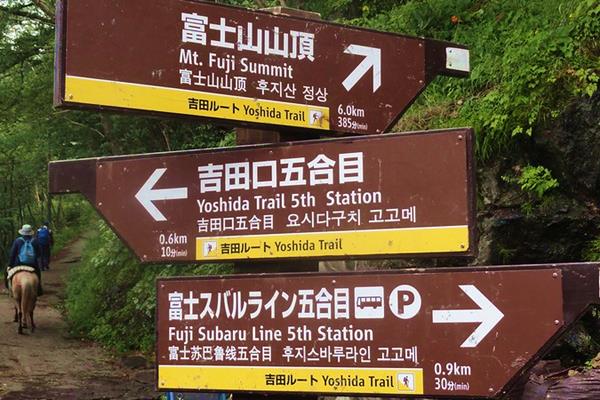
Is it safe to hike Mount Fuji?
There are precautions to take when hiking any mountain trail and Mount Fuji is no exception. Unpredictable weather is common on the mountain and should be well prepared for. When descending, take care to not rush down the mountainside. While it may seem easy, there are many instances of falling and injury on the descent. Don’t underestimate your journey back down the mountain. During the climbing season, there is cell phone reception on the mountain. In the event of an emergency, there are emergency contact numbers below that can be used to reach help:
- For the Yoshida Trail: Dial 0555-72-1477 (Mt Fuji 5th Station)
- For the other three trails: Contact 110 (Police) / 119 (Fire/Ambulance)
Please be aware that if you choose to hike outside of the hiking season, emergency services will not be on hand and will take longer to assist you during this time. Despite this, hiking is always done at your own risk. Most accidents and injuries are caused by underestimating the cold temperatures leading to hypothermia, a lack of hiking experience at high altitudes and insufficient gear.
Continue browsing
See more information on Asia . Or check out these other Asian Hiking articles:
- Ultimate Guide to the Himalayas Mountain Range
- Trekking in Nepal
- Epic Treks in India
- Hiking Kota Kinabalu
- Is Japan or South Korea better for adventure travellers
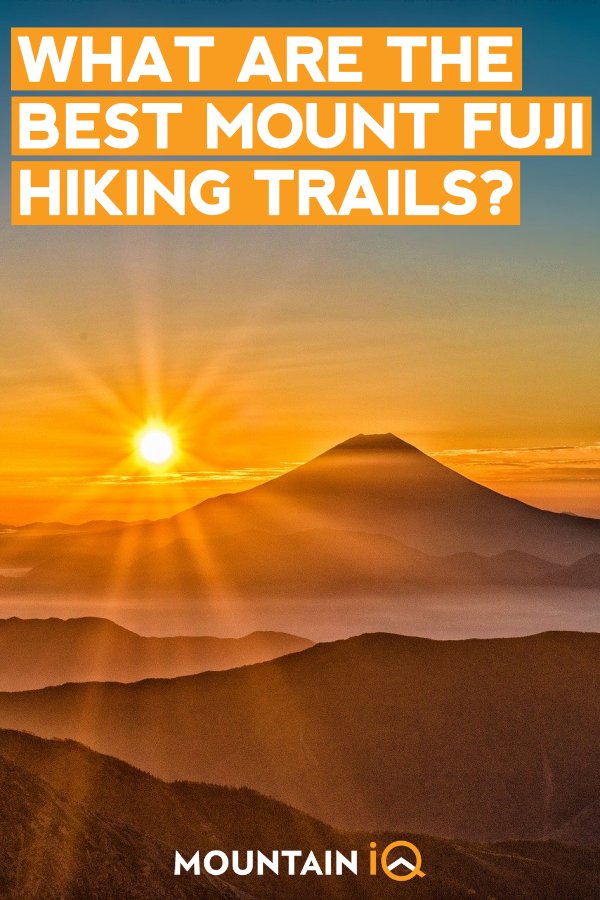
About the author
Kayla Gallocher
Kayla lives in sunny Cape Town, South Africa. She loves wildlife and being in the mountains! Anything to get away from the city and relax in the peace and quiet of nature.
Leave a Reply
Your email address will not be published. Required fields are marked
Very informative. Thank you! Since train or bus is required to get to the 5th station, what time of day is best to begin the Yoshida Trail?
H Diana, it’s best to start as early as possible. The hike up from the 5th station takes about 4-5 hours (including crater rim), and 3-4 hours decent. The 5th station closes at 19:00pm. Some people take 10-12 hours to complete the hike, so an early start is better. If you want to make sunrise, you should start around 12:00-01:00am.
Thank you very much for sharing this information with us. It is clear and well written. I have a question that would like to confirm it with you. In your article, the altitudes in all 4 trails indicate the altitude of each trailhead not the Elevation Gain (EG), am I right?
That’s correct, the values are altitude not EB.
We work with local guides to offer great value adventures at unbeatable prices.

Mt. Fuji tour from Tokyo: 9 best tours and tips (2024 guide)
By: Author Sylvia
Posted on Last updated: March 25, 2024
What is the best Mt. Fuji tour for you?
There are so many Mt. Fuji Tours from Tokyo to choose from that it is kind of hard to choose the best one.
That’s why we made this overview to help you choose the best Mount Fuji Tour from Tokyo.
We list the highlights and the pros and cons of each tour so you can pick the one that suits you most based on your interests and preferences.
There’s a Mount Fuji tour for everybody. Whether you just want to spend a full day seeing Mount Fuji, combine some activities that are certain to entertain your kids, or want to end your fun Mount Fuji tour with some bargain hunting at the outlet shops (with a view of the mountain!). It’s all covered in this overview.
We hope that our overview will help you to pick the best tour and have an amazing day near Mt. Fuji.
There is a really good chance that this post contains affiliate links. If you click one of them, we may receive a small commission (for which we are deeply grateful) at no extra cost to you.
In a hurry? These are the most popular Mt. Fuji tours:
Tour 1: Mount Fuji and Hakone tour with sightseeing cruise.
Lake Kawaguchiko:
Tour 8: Lake Kawaguchi and Chureito Pagoda.
Table of Contents

Let’s start this list of the best Fuji tours with a quick guide that makes it easy for you to compare the different tours.
Which Mt Fuji Day trip is for you – Quick Guide
To start, here’s a quick overview of the various tours. At the end of the article is a brief description of the various sightseeing spots .

What to know when booking a bus tour to Mt. Fuji
Tour hours are approximate.
Note that the tour hours and tour schedule are approximate since the weather and road traffic can affect the tour schedule.
Road traffic to and from Mount Fuji, especially during public holidays, can be very busy.
A day trip to Mt. Fuji can be a long and tiring day. 2 tours therefore provide the option to return with the Shinkansen at the end of the excursion. This may get you back to your hotel 2 hours faster.
The tours where you can book the bullet train are: Tour 1 (only on weekends and public holidays from April to November) and Tour 2
Itineraries may change without prior notice
We do our best to keep this overview accurate, but the itineraries of these tours are regularly updated. Our overview may therefore not always be completely correct.
Sometimes the tours are also adjusted on the day itself due to weather conditions, temporary closures, or other matters.
It is not guaranteed that you will see Fuji-San
Keep in mind that Mount Fuji is often in the clouds and therefore a clear view is never guaranteed.
Read more about the best period to see Mt. Fuj in our FAQ.
Do a private tour and save!
If your party is 5 or more you may want to consider a private tour. These private tours are often cheaper than the standard group tours for groups of 5 people or more.
In addition, private tours are highly customizable and you will be able to fit more stops in.
We included one tour in this overview and compared 7 other private guided Mt. Fuji tours in this article.

Detailed overview of the different Mt Fuji tours
Here you can find our detailed overview of the different Mount Fuji day trips from Tokyo that exist.
1. Mount Fuji and Hakone Tour with Sightseeing Cruise
This Mount Fuji tour includes a scenic cruise at Lake Ashi, the must-do ropeway to Owakudani Valley, the iconic floating torii gate at Hakone Shrine, and a visit to Fuji Subaru Line 5th station.
Along the way, you get the chance to taste the famous Kuro Tamago black eggs that are boiled in the hot volcanic spring water in the Owakudani Valey.
The tour starts and ends in Shinjuku except during weekends and holidays from April to November when the bus will drop you off at Odowara station at the end of the tour. On these days you can purchase a bullet train ticket with the tour. If you have a JR pass (national or JR-east) there’s no need to pay extra, you can use these passes on the trains between Odawara & Tokyo. (the Shinkansen is only covered by the national pass)
- Lots of possibilities to see and take pictures of Mount Fuji, weather permitting.
- English live tour guide + audio guide in 6 other languages
- Cancel up to 24 hours in advance for a full refund.
- Free WiFi on tour bus
- Lunch is not included (can be added)
- From April to November the tour ends at Odawara station on public holiday & weekends.
Guests who took this tour say they loved the guide that explained everything very well. Since you make a pirate cruise and ride the hakone ropeway it is also a great tour for families with kids.
This is a really varied tour with a cruise on a pirate ship, several opportunities to see Fuji-San and a ride on the ropeway. It offers lots of photo opportunities and the whole family will absolutely love it!
From 16.000 JPY (approx. 98€ or $107 depending on the exchange rate).
Check prices and availability: Mount Fuji and Hakone tour
2. Mount Fuji and Hakone 1 Day Tour with optional return by bullet train
This 11-hour tour found on Viator will take you to Mount Fuji highlights such as Mount Fuji Subaru Line 5th Station , Lake Ashi, and the Hakone Ropeway. All places from where you can enjoy beautiful views of Mount Fuji.
At the end of the tour, you have the possibility to be dropped off at Odawara station where you can board the Shinkansen which will take you back to Shinjuku station in just 40 minutes.
A great opportunity to experience the famous bullet train. If you don’t want to ride the bullet train you can also just return by coach.
Lunch is optional. You can opt to include lunch in the package or bring your own food.
- English speaking guide.
- Stroller accessible. (no wheelchairs)
- Cancel up to 24hours in advance for a full refund.
- Option to ride the bullet train for a faster return
This is a good family tour that offers lots of possibilities to see Mount Fuji. Children will love the pirate cruise and there is also the possibilty to return by the fast shinkansen to Tokyo.
From 15.000 JPY(approx. €91 or $100 depending on the exchange rate).
Check prices and availability: Mount Fuji Tour

3. Mt Fuji Full-Day Sightseeing Trip
This 10-hour tour that can be booked on GetYourGuide will take you to some of the most famous sightseeing spots near Mount Fuji such as Lake Kawaguchiko and the touristy Oshino Hakkai village .
The tour also stops at the Fuji Subaru Line 5th station. In winter you will visit Yamanakako Hananomiyako Park instead.
- English and Chinese speaking guide.
- No lunch included.
We like this Mt. Fuji day tour because it gives you lots of opportunities to take amazing pictures of Fujisan.
From 12.250 JPY( approx. €75 or $82 depending on the exchange rate).


4. Mount Fuji Classic Tour: Oshino Hakkai, Gotemba Premium Outlets & Matcha Experience
This 11-hour tour found on Klook visits some classic Mt. Fuji sites and includes some time for shopping.
Depending on the time of the year and the weather you will first head to Mt. Fuji Subaru Line 5th station or the Fujisan World Heritage Center.
You then continue to Lake Kawaguchiko and the 8 picturesque ponds in the village of Oshino Hakkai.
At Lake Kawaguchiko you also attend a matcha tea-making experience where you will learn more about this quintessial Japanese tea-making process.
The last stop of the tour is at the Gotemba premium outlets. Here you can go on a shopping spree but weather permitting you will also have the opportunity to take some great pictures of Mount Fuji.
- Chinese and English speaking guide
- Matcha experience at Lake Kawaguchiko
- A cheap tour with good reviews
- 72-hrs notice for full refund
- Lunch not included.
The guide of this tour gets good reviews and some reviewers also metion that this tour is also fun in bad weather because of the included matcha tea-making experience and the stop at the Gotemba Outlets.
This tour takes you to many breathtaking viewpoints of Mount Fuji. This is an excellent Mt. Fuji day tour if you’re also looking to attend a matcha tea making activity or want to look for some bargains at the outlet shops.
From 7.580 JPY(approx. €46 or $50 depending on the exchange rate).

5. Mt Fuji Day Tour from Tokyo
This 11-hour tour found on Klook will first take you to one of the Mount Fuji 5th stations from where you can enjoy beautiful views of the mountain. When the road to the station is closed (eg. in case of bad weather), you will instead go to the Fujiyoshida Sengen Shrine, an attractive shrine in a beautiful wooded area.
From there you will continue to Lake Kawaguchiko. The lake is particularly beautiful during the autumn foliage and the Sakura season. Fuji-San is in the background of the lake and on a clear day Mt. Fuji towers majestically above the lake and you can see its reflection in the water.
This is also where you’ll have lunch. You can provide this yourself or book it with the tour.
The next stop is Oshino Hakkai a world cultural heritage site famous for its 8 ponds with crystal clear water. The water is so clear that it seems you’re looking at an aquarium.
At the end of the tour, during the last stop, you will have time to go shopping at the Gotemba premium outlets.
- English, Chinese and Japanese speaking guide.
- Stroller & wheelchair accessible tour
- This is one of the cheapest Mt. Fuji tours
- For a full refund the cancellation must be made at least 11 days before the selected activity date.
This is another highly-rated tour that combines stops at several scenic Mt. Fuji viewpoints with some time for shopping at the Gotemba Outlets.
From 9.600 JPY (approx. €58 or $64 depending on the exchange rate).
Check prices and availability: Mount Fuji Day Tour from Tokyo

6. Mt Fuji & Hakone Day Tour: Lake Ashi & Ropeway Day Trip from Tokyo
This 10-hour tour found on Klook will take you to Mount Fuji 5th station.
You will then cruise Lake Ashi and ride the Komagatake Ropeway in Hakone from where you can enjoy great views of Mount Fuji ( weather permitting ).
- English speaking guide + audio guide in 6 other languages (if you want to use the audio guides you have to specify this when making your booking)
- Full refunds will be issued for cancellations made at least 24 hours prior to the activity.
- Only tour that includes the Mt. Komagatake Ropeway
- Optional Japanese style lunch. If you do not order lunch, you must bring your own food because there are no other restaurants nearby.
This is a great family tour and the only tour that includes a ride to the top of Mount Komagatake.
From 15.000 yen (approx. €101.65 or $102.35 depending on the exchange rate).
Check prices and availability: Mount Fuji Day Tour

7. Mount Fuji and Hakone Day Trip from Tokyo: 5 th station, Hakone Pirate ship, and Gotemba outlets
This 11-hour tour found exclusively on Klook will take you to Mount Fuji 5th station. If you travel from December to March, Mt Fuji’s 5th station is replaced by Mt Fuji’s second station where you will have the opportunity to play in the snow.
The tour will then continue to the Gotemba outlets where you can go shopping and have lunch. A lunch box is included.
Next, you will head to Hakone where you will cruise Lake Ashi and take the Hakone Ropeway to the Owakudani valley which is famous for its black eggs.
- English and Chinese speaking guide + video translation. (+ travel brochure)
- Lunch box included
- Wheelchair accessible (must be accompanied by paying adult)
- For a full refund the cancellation must be made at least 5 days before the selected activity date.
This tour offers a well-filled day with several stops at places where you can enjoy a beautiful view of Mt. Fuji and a good amount of time for shopping.
From 12.980 JPY (approx. €80 or $87 depending on the exchange rate).
Check prices and availability: Mount Fuji and Hakone Day Tour

8. Scenic Spots Day Trip to Mt Fuji and Lake Kawaguchiko
This 10 hour tour found on Klook will first stop at the impressive Chureito Pagoda at the Arakurayama Sengen Park.
Next you head to Lake Kawaguchiko where you will have lunch. After lunch, you stop at Oishi Park, one of the most picturesque spots at the lakeshore with impressive views of Mt. Fuji.
The last stop of this tour is at Iyashi no Sato, a traditional Japanese Village at Lake Saiko. This open-air museum consists of more than 20 reconstructed houses where you learn more about the traditional culture and can participate in workshops to make various traditional products such as washi paper or soba noodles.
- English/Chinese speaking guide.
- Visit of the Chureito Pagoda
- The stop at Iyashi no Sato adds a pinch of culture to this trip
- Cancellations must be made 14 days in advance for a full refund.
Thanks to the visit to Iyashi no Sato, this tour combines the beautiful nature and breathtaking vistas with some time to immerse yourself in traditional culture.
From 9.800 JPY (approx. €60 or $65 depending on the exchange rate).
9. Private Tour of Hakone and Lake Kawaguchiko
With this private tour you can explore the Lake Kawaguchiko and Hakone region at your own pace. The guide has a recommended itinerary but as it is a private tour, you are free to customize this itinerary any way you want.
This is a more comfortable way to visit this region. Some of the group tours may feel rushed, with a private tour you can take as much time as you want at each of the stops.
- English guide
- Pick-up/drop off in Tokyo included
- Fully customizable
- Infant seats available
- Wheelchair and stroller accessible
- Free cancellations up to 24 hrs before the activity date
- No entrance fees included
- Lunch not included
With a private tour you can explore the region in comfort and at your own pace. From a group of 5 it is also cheaper than some of the group tours.
From 74.000 JPY (approx. €460 or $500 depending on the exchange rate).
Check prices and availability: Private Mount Fuji Day Tour
Discover 7 more private guided Mt. Fuji tours in this article.

Going independent
Were you unable to find a tour and would you like to visit the region independently?
To help you plan your trip we created the following guides with more information on the Lake Kawaguchiko and Hakone region:
The Tokyo to Mt Fuji Day Trip article contains more information on Lake Kawaguchiko.
In the Hakone day trip guide we describe the famous Hakone loop and more sights in the Hakone region.
Points of interest around the Mt. Fuji area
To help you make your choice, we have a little more information about the different points of interest that are included in these tours.

Mt. Fuji 5th station
A Mt. Fuji 5th station is as close to Mt. Fuji as you can get without climbing the mountain. There are four different so-called 5th stations. These stations contain shops where those who will climb to the top can buy their supplies.
The stations are excellent places for beautiful views of Mount Fuji, the Japanese Alps, and the greater Fifth Lake area.
The Mount Fuji Subaru Line 5th station is the most accessible of the 4 stations and therefore most tours will make a stop here.
Keep in mind that visiting a Mount Fuji 5th station is not always possible. The roads are closed in winter and outside that period the road may also be closed at short notice because of heavy snowfall or rain. In those cases, the itineraries of these tours will be changed.
Kawaguchiko Lake
Lake Kawaguchiko is the largest of the 5 Mt. Fuji lakes.
Weather permitting, it’s a great place to catch amazing views of Mt. Fuji.
Besides splendid views of Mount Fuji, it offers plenty of other great activities such as onsen, museums, cable cars, hiking trails, an amusement park, and much more.
Below we share the places that are most often visited with a tour.
Arakura Sengen Shrine and Chureito Pagoda
The Chureito Pagoda is part of the Arakura Sengen Shrine.
This is an iconic Mount Fuji viewing spot. We took this picture in February, if you visit the shrine a few weeks later, during the Sakura season, the view is even more beautiful.
A stop at this famous shrine is included in tour 3 and tour 8 .
Oshino Hakkai Village
Oshino Hakkai is recognized as a world cultural heritage site since 2013.
It is famous for its eight sacred ponds with crystal water.
Here you can also find Hannoki Bayashi Shiryokan, an open-air museum that showcases old traditional farmhouses along with traditional farming tools, samurai armors, and various weapons from that time.
The traditional houses, with the perfectly shaped volcano in the background, make for a perfect picture that could have been made in the old days of Japan.
It is visited with tour 3 , tour 4 , and tour 5 .
Oshino Shinobi no Sato
Oshino Shinobi no Sato also called the Ninja Village, is a place where you can rent Ninja costumes, watch a Ninja show and solve the mystery of the Karakuri house which is full of traps and secret doors.
From the garden, you can enjoy great views of Mt. Fuji.
It’s a great place to visit if you are traveling with children.
Saiko Iyashi no Sato Nemba
This is an open-air museum on the Western shores of Lake Saiko.
Take a stroll through the village and marvel at the houses with thatched roofs which will give you a glimpse into life in Japan in the olden days.
Here you can also participate in craft workshops and rent Japanese costumes to take a picture.
It is visited with tour 8 .

Hakone is a lush green and picturesque region not too far from Mt. Fuji. It is renowned for its stunning natural landscapes and hot springs, and even more so for the views of iconic Mount Fuji.
Below are the activities that these tours do in the Hakone region.
Lake Ashi is a peaceful lake surrounded by mountains. It’s a busy destination in Hakone as it is part of the Hakone Loop , a popular loop that takes you past many of Hakone’s highlights.
Lake Ashi is a great place for hiking. Trails follow the shoreline or lead to viewpoints up into the mountains.
Another popular activity is a cruise. If weather permits the cruise will offer good views of Mt. Fuji.
The following tours include a cruise on the lake: tour 1 , tour 2 , tour 6 , and tour 7 .

Hakone ropeway
On a clear day, you’ll be able to spot a scenic view of Mount Fuji as you ride the ropeway. In addition, the cable car also offers a beautiful view of the volcanic Owakudani valley.
This ropeway is included in tour 1 , tour 2 , tour 6 , and tour 7 .
Owakudani Valley, also known as “Hell Valley”, is an amazing place. It is one of the few places in the region where you can see the volcanic activity so clearly.
You smell the sulfur smell and see the boiling mud pools.
You can also eat black eggs here, eggs that were boiled in the mud puddles. Eating 1 egg would give you 7 extra years of life. At least that’s how the myth goes…
A visit to the valley is included in tour 1 , tour 2, tour 6 and tour 7 .

Gotemba Premium Outlets
The Gotemba Premium Outlets is one of the largest outlets in Japan where you can find most of the US and European premium brands such as Hugo Boss, Gap, Prada, Ralph Lauren, Godiva chocolates, etc.
Most of the stores are tax-free for tourists. So don’t forget to take your passport and show it to the cashier when you pay.
It’s a great place to combine bargain hunting with taking pictures of Mount Fuji.
Shopping time at the Gotemba Premium Outlets is included in tour 4, tour 5, and tour 7
Komagatake Ropeway
The Komagatake Ropeway starts at the shore of Lake Ashi and leads to the peak of Mt. Komagatake, at 1.356 meters one of the tallest peaks in the area.
On a clear day, you can enjoy beautiful views of Lake Ashi and Mount Fuji from the observation platform at the top station.
You can also visit the Mototsumiya Shrine. The “shrine in the sky” is at the very top of the mountain, only a short walk from the top station of the gondola.
The Komagatake ropeway is included in tour 6 .
Mishima Skywalk
The Mishima Skywalk is the longest pedestrian suspension bridge in Japan. It is 400 meters long and thanks to its spectacular location it offers breathtaking views on both Mt. Fuji and Suruga Bay.
Next to the suspension bridge there is also an adventure park with a zip line and a treetop parcours.

Borders Of Adventure
Leading Culture and Adventure Travel Blog by Becki Enright. Looking at the world with a different angle to change perceptions of misunderstood places, for the best in travel.

Adventure Travel , Japan
Climbing Mt. Fuji Hiking Guide – Summiting Japan’s Sacred Peak
Disclaimer: This post contains affiliate links to handpicked partners, including tours, gear and booking sites. If you click through or buy something via one of them, I may receive a small commission. This is at no extra cost to you and allows this site to keep running.
This climbing Mt. Fuji hiking guide includes preparation tips, trek routes, overnight stays, and what to do if you don’t get to the summit.
Climbing Mount Fuji was more of an adventure than I had originally planned. Wedged snuggly between two locals within a sea of blue sleeping bags, I laid deadly still, having rehydrated and filled myself with painkillers in a desperate attempt to extinguish the migraine that was filling my pounding head. One hour later, I realised that I had succumbed to severe altitude sickness at 3,250 metres, which was soon marked by regular bouts of vomiting. One hour away from starting the 1 am ascent to the summit, the accomplishment of trekking Mount Fuji and standing atop the mountain was fading fast. I had to accept defeat.
Unable to walk very far and close to passing out after any strenuous movement, I requested my mountain house staff to get me down the mountain fast – the pain only worsened. When you’re an avid trekker, you learn to listen to your body and take the correct measures to protect yourself. This was that moment.
“The doctor is busy,” said the mountain house staff member. “You will have to wait for sunrise… and get down yourself.”
Nonetheless, the Mt Fuji hike and standing upon Japan’s famed peak and biggest natural wonders was a highlight of my trip. Here’s how you can experience climbing Fuji and successfully summit Japan’s highest peak.
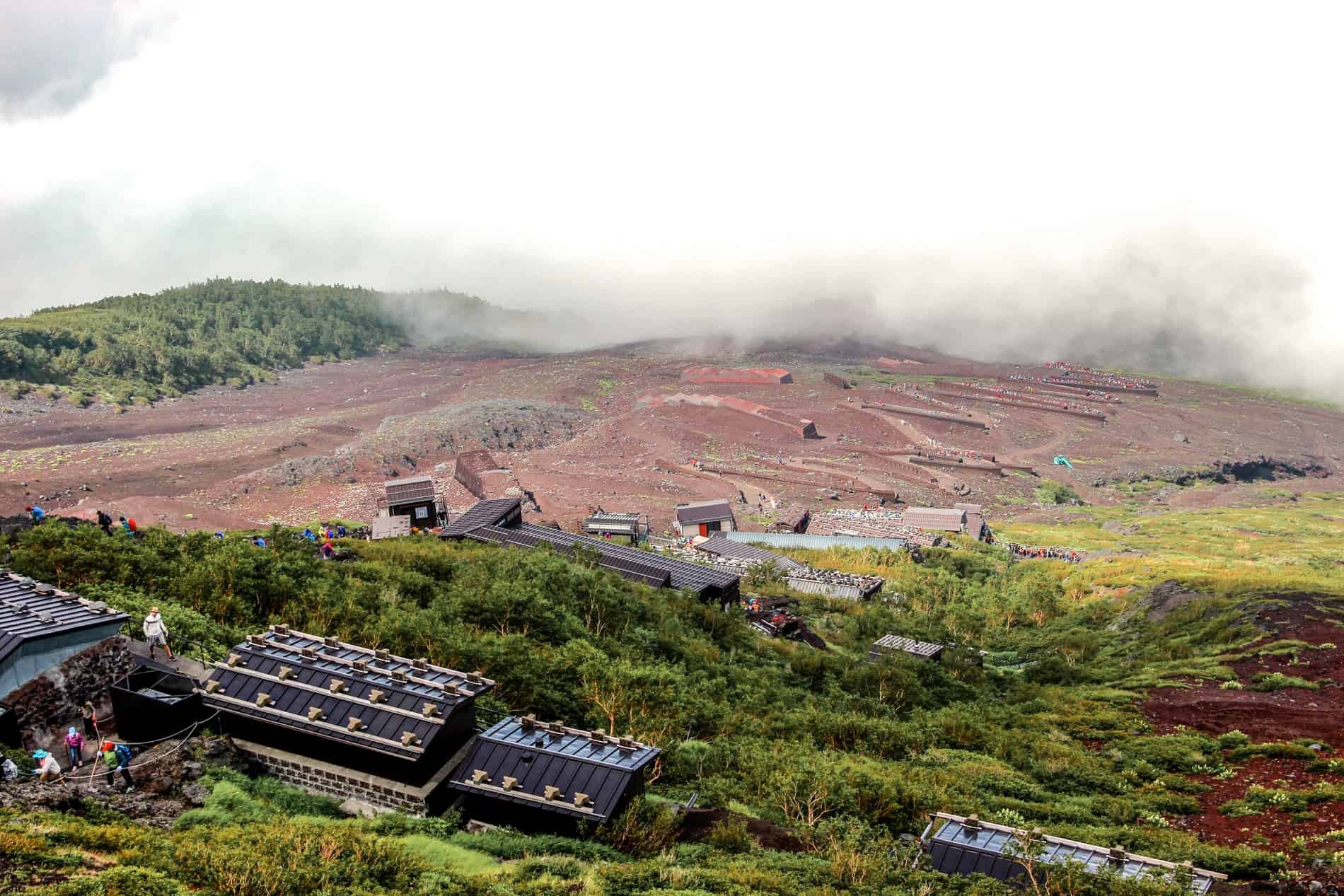
Climbing Mt. Fuji Hiking Guide – Top Tips For a Successful Summit
How much does it cost to climb Mt Fuji?
How long does it take to summit fuji, is mount fuji a volcano, how difficult is the mt fuji hike, when is the best time to climb fuji, can you hike mount fuji without a guide, where to stay before and after the hike, what to pack for hiking mt. fuji, yellow: yoshida trail – easiest and most popular , red: the subashiri trail – relatively easy and less crowded , green: the gotemba trail – longest and least trodden, blue: the fujinomiya trail – steepest and most challenging, bullet climbing – fuji in one day, the 5th station starting point, hiking the yoshida trail, altitude sickness – what do you do, climbing plan form, summiting mount fuji and getting down , thinking of climbing mt. fuji pin it, climbing mt fuji hike guide faq.
Mount Fuji is Japan’s highest and most photographed mountain, with an elevation of 3,776 metres. It’s also known as Fuji-san or Fujiyama.
Visible even from the Tokyo city skyline on a clear day, Fuji lures trekkers with her attractive symmetrical, snow-capped frame and promises of a glorious fiery-sky sunrise. Known to be not too difficult to hike, the small entry fee, and the fact you don’t need a guide, Fuji remains a popular commercial climb.
Fuji is also a sacred site, with many climbers as pilgrims on a special journey to the top of a peak given god-like status.
Mount Fuji was once free to climb. The donation-based entrance has since turned into a mandatory fee, helping to protect and maintain the trails. The climbing pass now costs around ¥1,000 – less than $10.
Buses from Kawaguchiko train station to the 5th Station cost 1,500 Yen one-way (Around $11).
A mountain hut for one night will cost around 5,500 Yen ($45) without food and 7,000 Yen ($55) including two meals (dinner and breakfast).
The average time spent on the trail climbing from the 5th Station to the summit and back down again is approximately 10 hours. This is discounting the time spent in the mountain hut resting.
Fuji is an active volcano, although its last eruption was in 1707, so there is no immediate threat when hiking this great peak.
The Mount Fuji hike isn’t considered difficult – it’s more a matter of stamina and how you react to altitude. There are no technical aspects to climbing Fuji, just long, zig-zagging pathways on rocky trails, many of which have safety barriers and paved ledges. Also, you do not hike Fuji starting at the foot of the mountain – the start of the trails at the 5th station reduces the overall length of the hike.
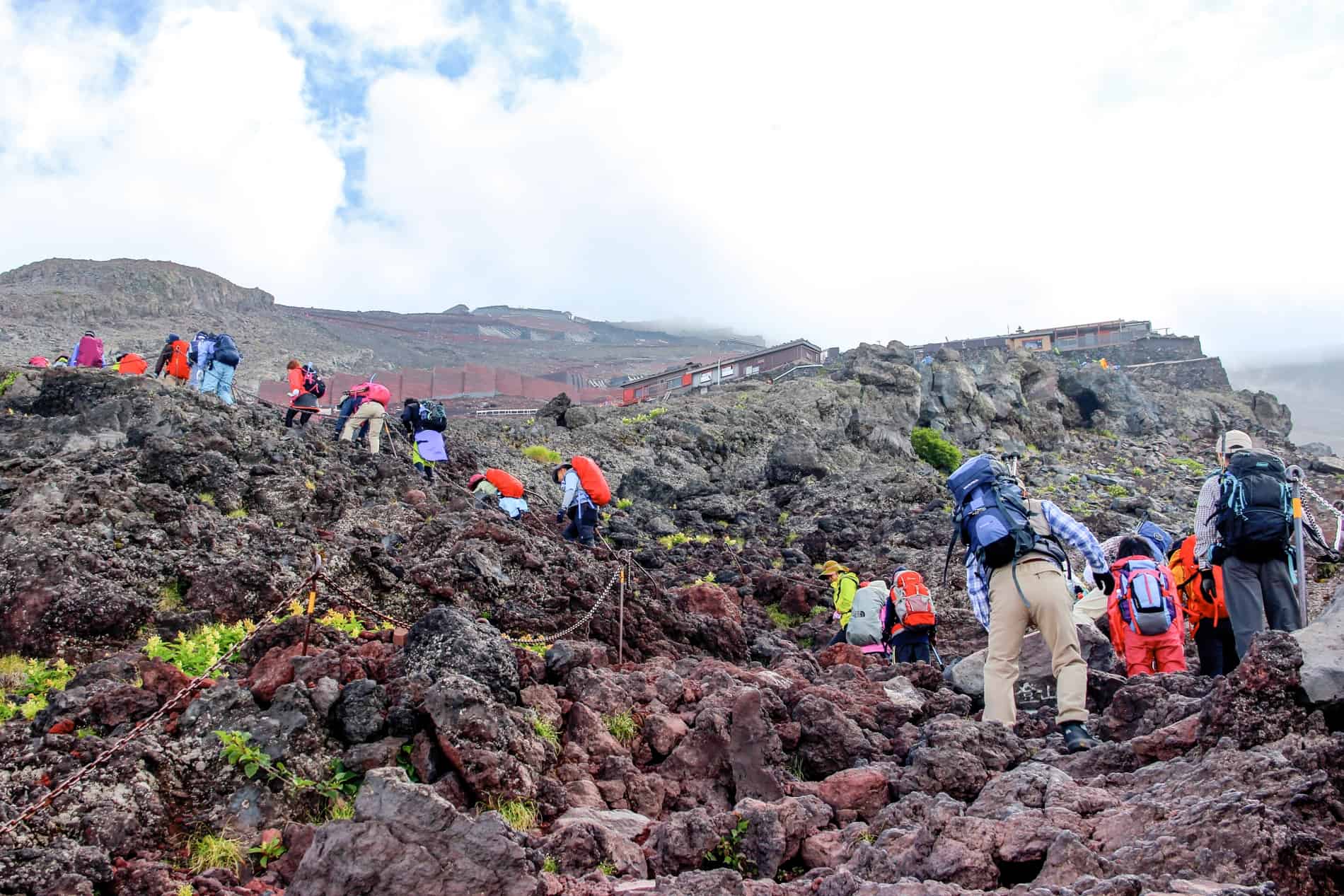
How difficult is it to hike Mt Fuji?
The best time to climb Mount Fuji is during the official climbing season, from early July to early September. This period is also the ‘no snow’ season, and climbing outside of this time is prohibited due to safety on the mountain with harsh weather conditions and the closure of mountain huts and other facilities. I hiked in August and found the climate comfortable.
Yes, you can. The majority of people climbing Fuji do so without a guide. You will never feel alone as the trail is always full. Just remember to pack everything you need, including layers, plenty of water, snacks, money and medications.
If you do not feel confident hiking Fuji alone, guides are available and will further ensure a successful summit. Ask your accommodation about recommended local guides.
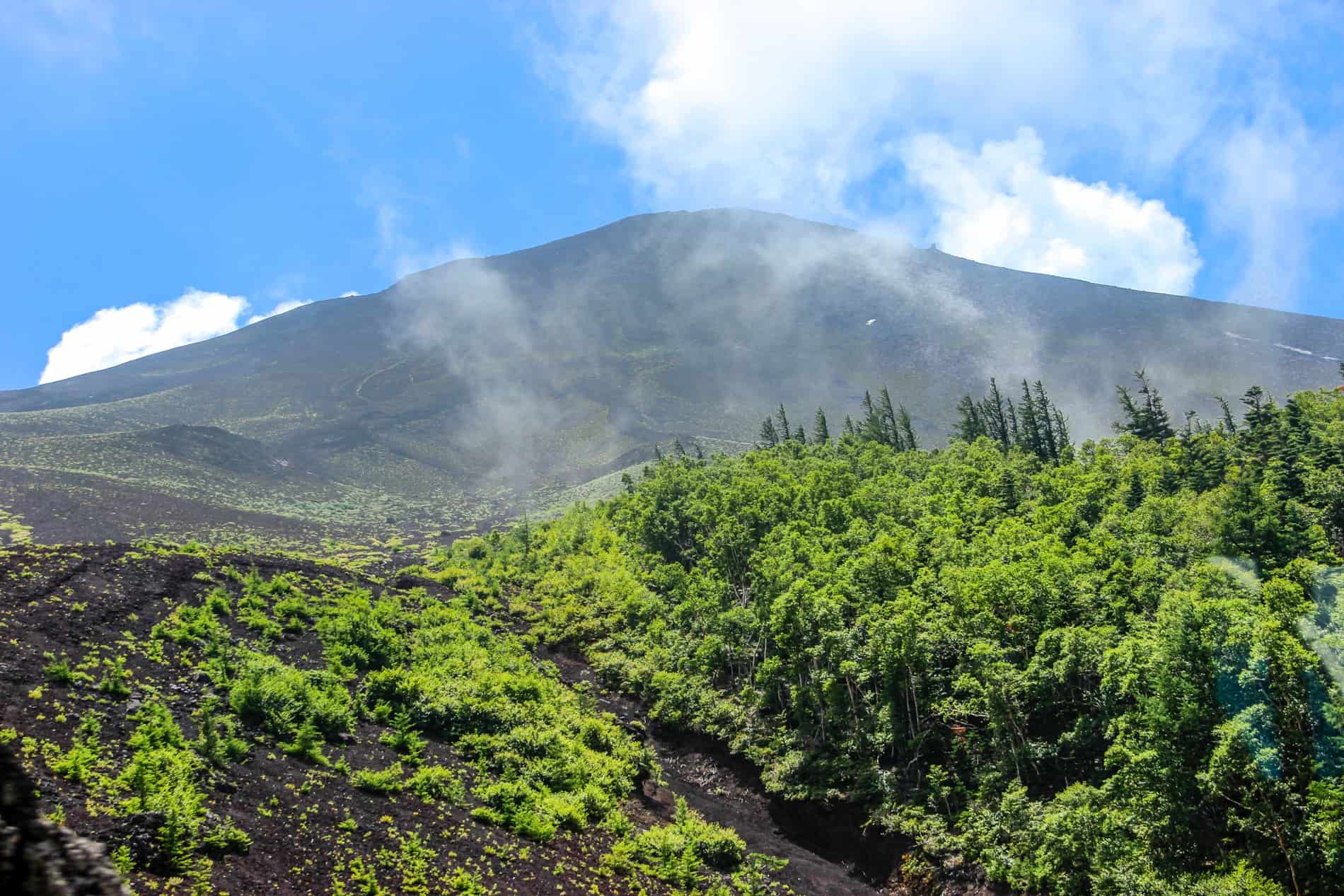
Approaching the mighty Mount Fuji on the way to the start point.
Preparing to Climb Mount Fuji
I like to be fully prepared when I climb a mountain, and the opinions of other climbers, not just locals, is crucial in getting things right. It’s not a situation where I am willing to take risks.
Many people come directly from Tokyo , but I was advised to travel a day or two beforehand and stay in the area, limiting the added exhaustion of an extra travel journey right before the hike.
The most popular and well-established place to stay is Lake Kawaguchiko in the Fuji Five Lakes region at the base of the mountain, alongside Lake Yamanakako, Lake Shojiko, Lake Saiko, and Lake Motosuko.
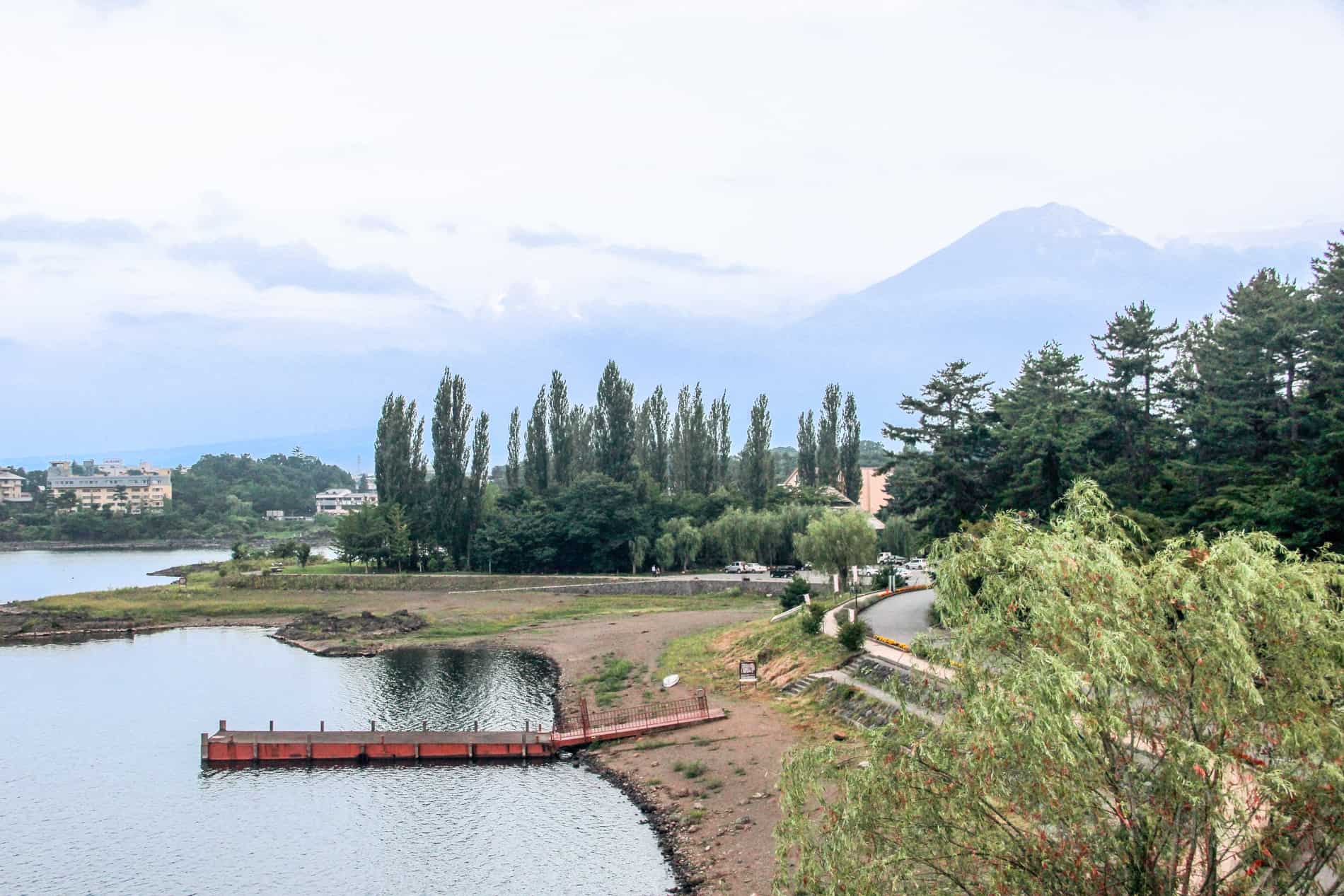
Lake Kawaguchiko in the Fuji Five Lakes region.
K’s House Traveller’s Hostel in Kawaguchiko has a great view of Mt. Fuji, complete with a scenic rooftop lounge. It has a mix of Japanese-style private rooms and modern-style dormitory rooms. Dorms start from €70. The nearby K’s House MtFuji has private rooms for €160.
Right in the heart of the Fuji area, it also caters for travellers eager for adventure. Not only were plenty of travellers willing to share their Fuji stories of trial and error, attempt and failure, or ‘I only came here to relax and look at the view,’ but the hostel was the information hub I needed – boards contained detailed information about the climb, the temperature and estimated times for sunrise was updated daily. The staff were always on hand to answer the many questions to help you prepare.
You’ll need to pack light for the Fuji hike as you will be carrying your bag, but you also need to bring the essentials for two days, including the overnight mountain hut stay. Consider a 25-30 litre hiking backpack with a 2-litre hydration bladder and take the following (most of which you will be wearing and not carrying as extra).
- Sturdy, already worn-in hiking boots or walking shoes with good grip for the volcanic, rocky and gravel terrain.
- Layers. Wear what you need and pack more to layer up for when it gets colder at altitude. A thermal base layer, a moisture-wicking t-shirt or long-sleeve top, a warm jacket or fleece and a windbreaker or down jacket.
- Pack waterproofs – pants and a waterproof jacket, because Fuji weather is unpredictable.
- Sunscreen and sunglasses. It may get foggy but don’t be fooled by the sun’s power on the Fuji climb.
- Headlamp for the early hours of the summit climb and use in the mountain hut.
- Minimal toiletries for the overnight stay.
- Medications – take your regular medications and get some Diamox in case of altitude sickness.
- Snacks like nuts and protein bars to last for approximately 10 hours of hiking time.
- Cash for extra snacks, drinks and meals. Credit cards are not accepted in most mountain huts.
Mt. Fuji Trails – Which One to Choose
The Fuji climbing experience isn’t too complicated – here’s where to start, what trail to choose, and what to expect from Japan’s famed pilgrimage hike.
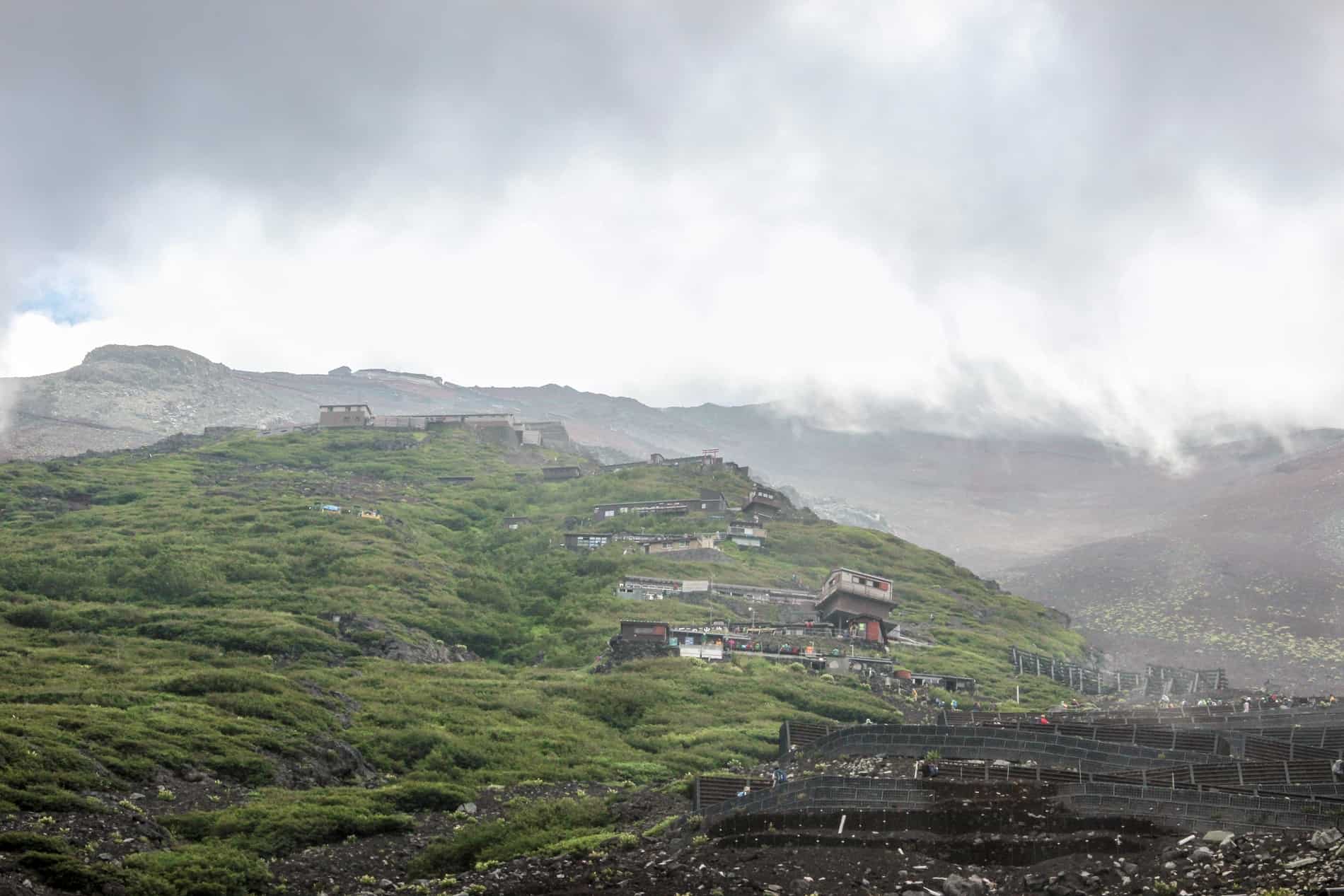
The climb up Mt. Fuji, passing station hut, rest points and lookouts. Which trail will you choose?
There are four main trails for climbing Mount Fuji: the Yoshida Trail, the Subashiri Trail, the Gotemba Trail, and the Fujinomiya Trail. Each has a varying level of difficulty regarding steepness and the type of terrain, and the trails are identifiable by their particular signage colour.
Each trail begins at the 5th Station of Fuji mountain. However, each trail has its own 5th Station location, so you must plan your arrival accordingly.
It is recommended to make reservations for mountain huts in advance of your trek.
The easiest and most commercial path is the Yoshida Trail, with a zigzag mechanism of maintained paths, plenty of rest stops, and access to toilets and mountain huts. Ideally, start around midday at the 5th Station to reach the mountain house on the 8th Station after 3 PM for the overnight stay. You then sleep until it is time to begin the ascent to the summit (the 10th Station) in the early hours of the morning for sunrise after 4.30 AM.
- Ascent: 6 hours
- Decent: 4 hours (on a different path to the ascent trail)
Another relatively easy Fuji path is the Subashiri Trail, which starts at the 5th Station. People often choose this route as it is less crowded than the Yoshida Trail, especially in peak seasons, and is considered to have a more beautiful approach on sloping paths. However, once you reach the 8th Station on the Subashiri Trail, the path to the 10th station summit is the same as that on the Yoshida trail.
The longest path up Fuji is the Gotemba Trail, which undoubtedly has the lowest footfall of all the trails as it winds up the mountain in a different direction. Due to its length and more rugged volcanic terrain, Gotemba is more difficult than the Yoshida and Subashiri trails. However, experienced hikers take this route because it has more scenic views at higher elevations.
- Ascent: 7 hours
- Decent: 3 hours (path of descent rejoins the path of ascent midway)
There’s always a steep and arduous path on every mountain, and Fujinomiya is just that. It may be the shortest of all Mt. Fuji trails, but it is a sharp and tough incline to the summit on challenging and rocky terrain. Despite being a busy route, it is not advisable for general everyday climbers to take this approach.
- Ascent: 5 hours
- Decent: 3 hours (on the same path of ascent)
There is an option to start your trek at 9 pm or 10 pm and climb through the night, reaching the summit for sunrise and making your way back down. This is known as Bullet Climbing and is not advised due to the dangers from exhaustion and falling rocks and trail accidents in the dark. You will notice signs at the 5th station advising against this method and doing so at your own risk.
There’s a third option, which is to traverse a much harder route that’s barely trodden, although it isn’t advised unless you are a more experienced hiker.
Depending on your trail, there are various routes to your designated 5th Station start point.
Greeted by swarms of people, who speckle the open space in a sea of bold colour, you soon get sucked into an atmosphere of nervous excitement as you begin your trek on flat ground.
Yoshida Trail 5th Station: Yamanashi Prefecture side
A one-hour mountain bus ride from Fujisan or Kawaguchiko train stations will bring you to the most well-known of Mount Fuji’s four 5th Station Fuji Subaru Line, standing at 2300 metres.
Subashiri Trail 5th Station: Shizuoka Prefecture side
Take the mountain bus from Gotemba or Shinmatsuda train stations to the Subashiri Trail 5th Station at 2000 metres.
Gotemba Trail New 5th Station: Shizuoka Prefecture side
Take the mountain bus from the Gotemba train station to the Gotemba Trail New 5th Station at 1450 metres.
Fujinomia Trail 5th Station: Shizuoka Prefecture side
Take a mountain bus from Mishima Station / Shin-Fuji Station, Fuji Station or Fujinomiya Station to the Fujinomia Trail 5th Station at 2400 metres.
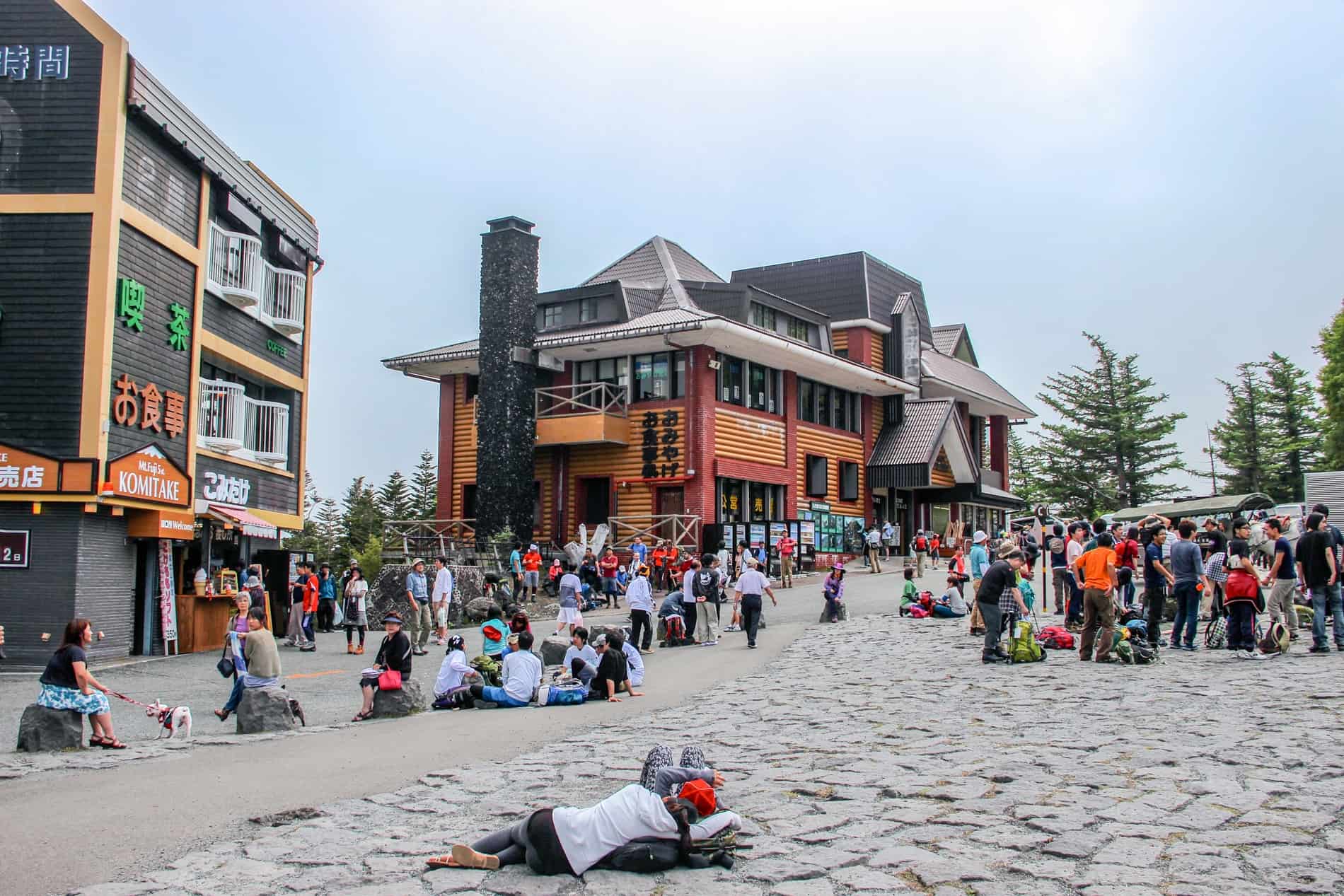
Hikers arrive at Mt Fuji’s 5th station to check in and begin the hike.
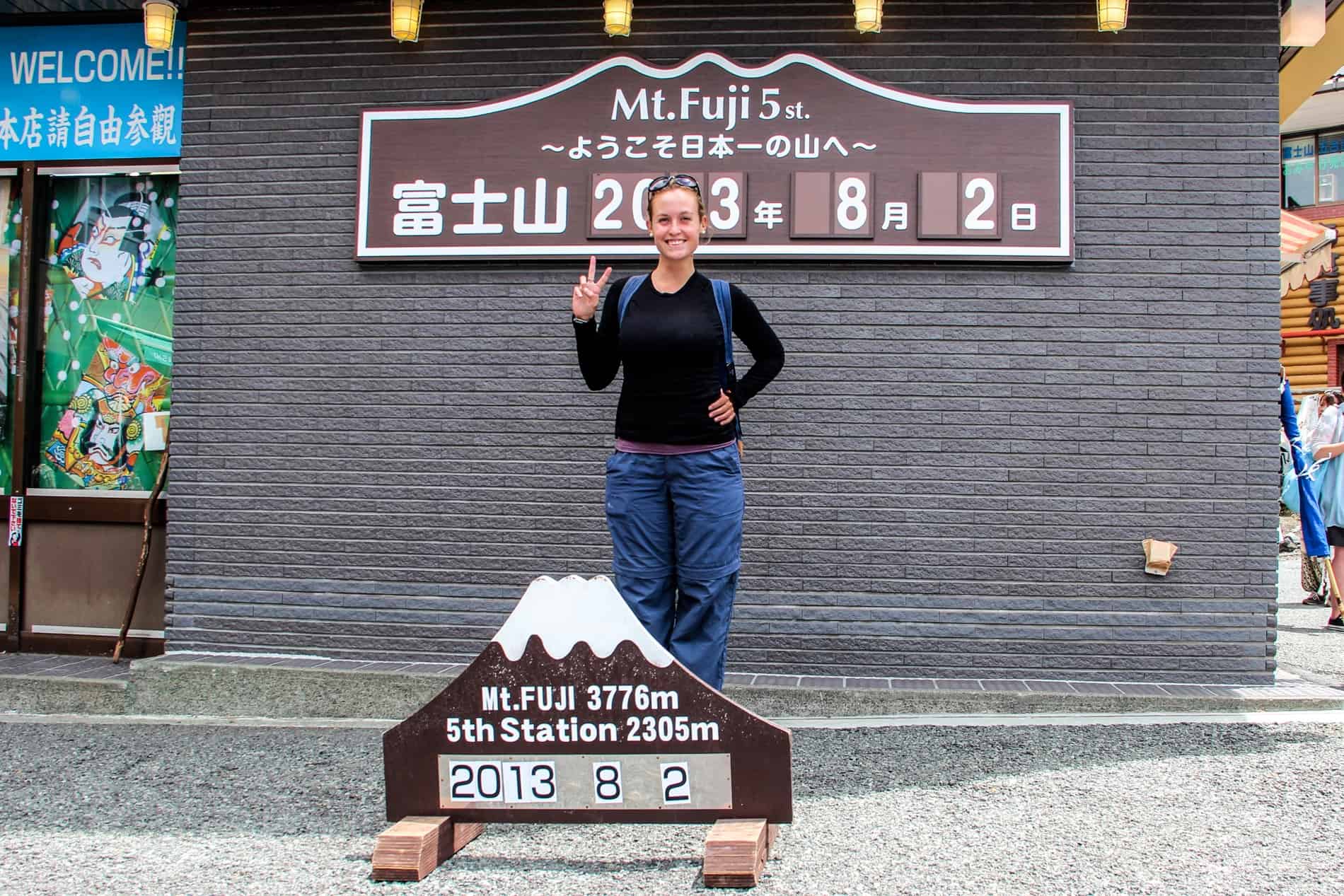
Rite of passage Fuji 5th Station sign photo.
Close-up, Fuji isn’t as attractive as she is from afar. The initial tree-lined paths slowly fade to charcoal-coloured gravel walkways and rocky walls of grey and horizon-hiding fog. You soon come to realise that the trek isn’t incredibly scenic.
Only then did I begin to appreciate the crowds, whose hues of yellow, green, pink and blue added saturation to an otherwise muted mountain canvas.
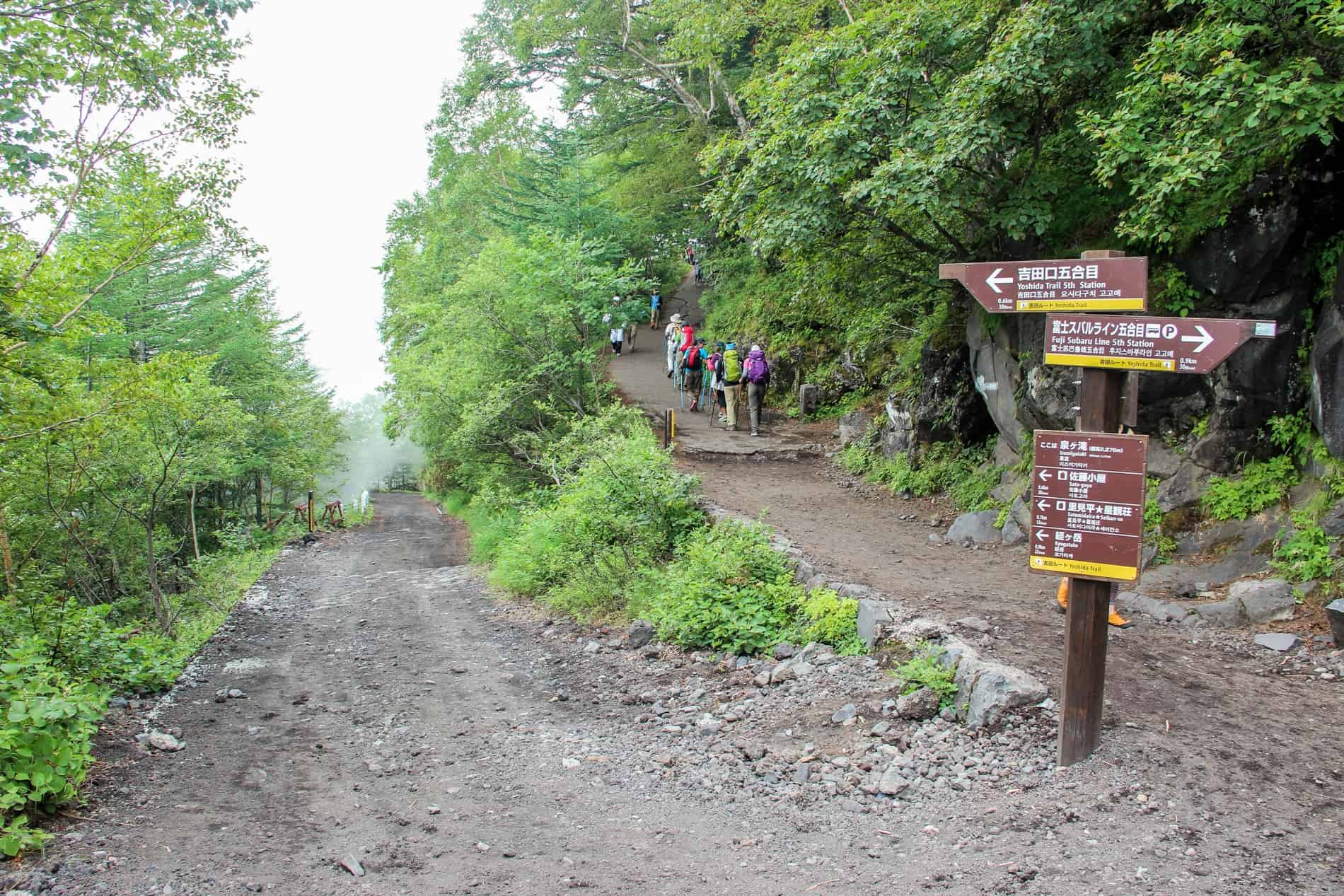
Mount Fuji’s signposed trails, with climbers following the Yoshida Trail.
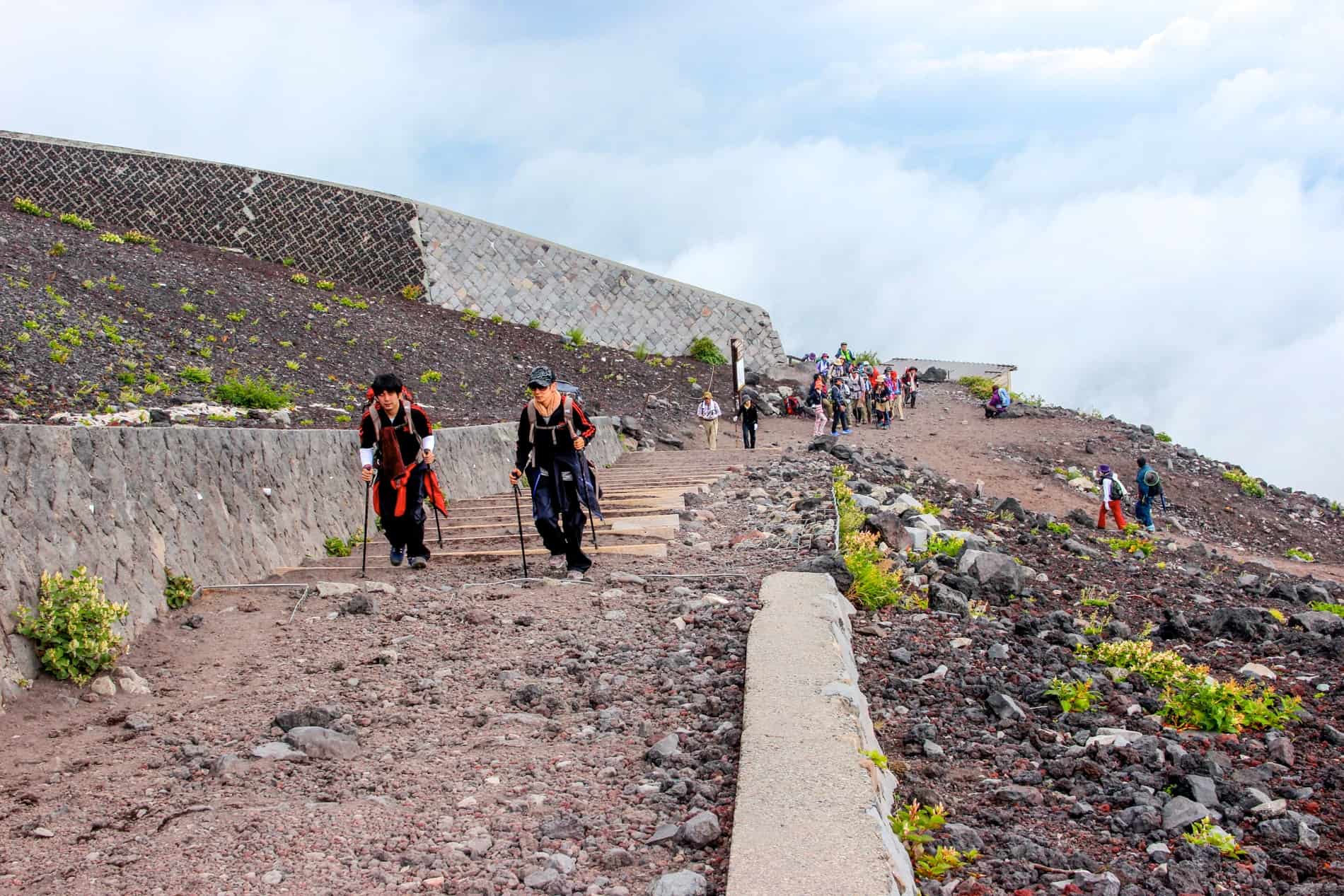
The steep inclines of the Yoshida Trail.
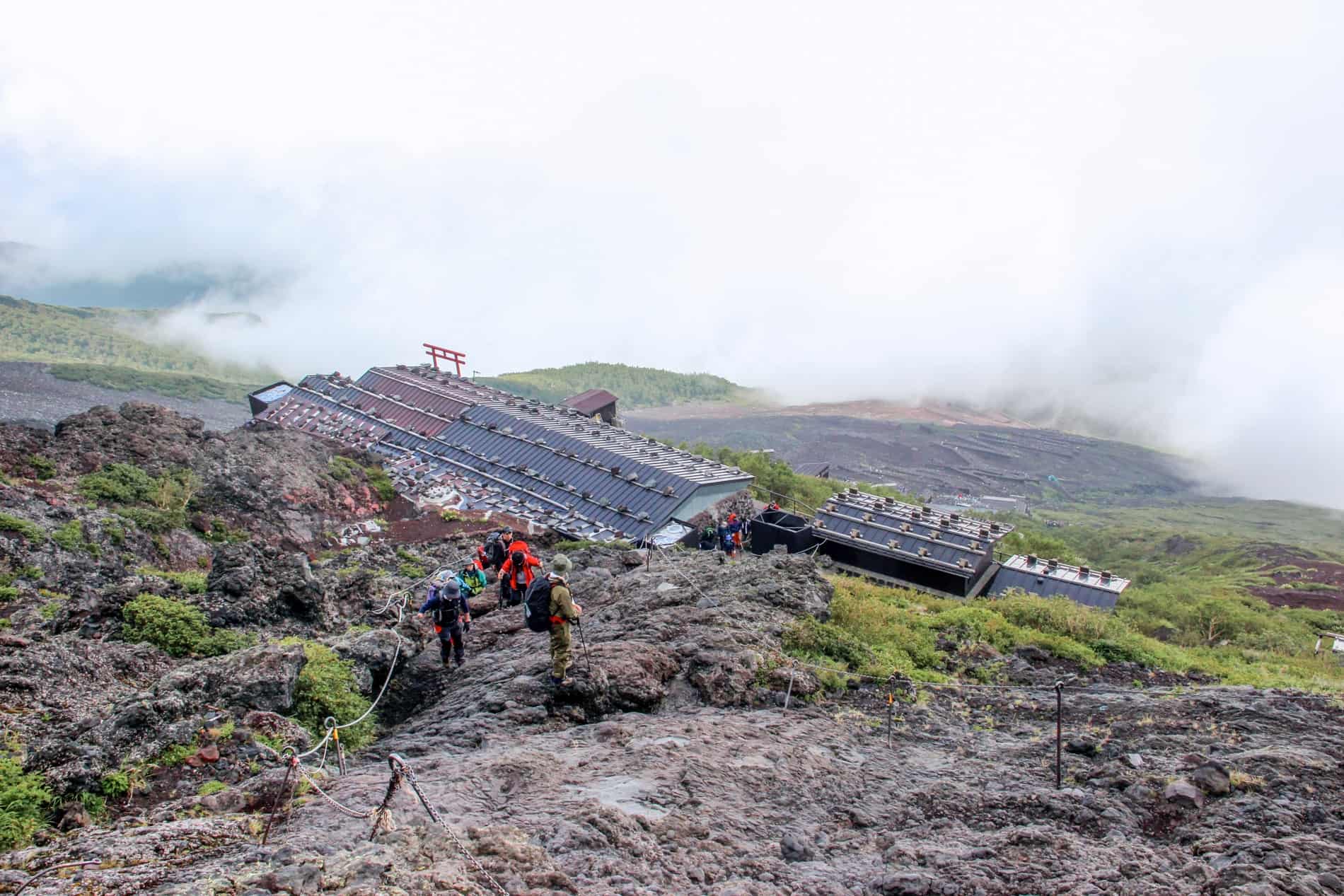
Zigzag trails and rocky climbs on the Fuji hike.
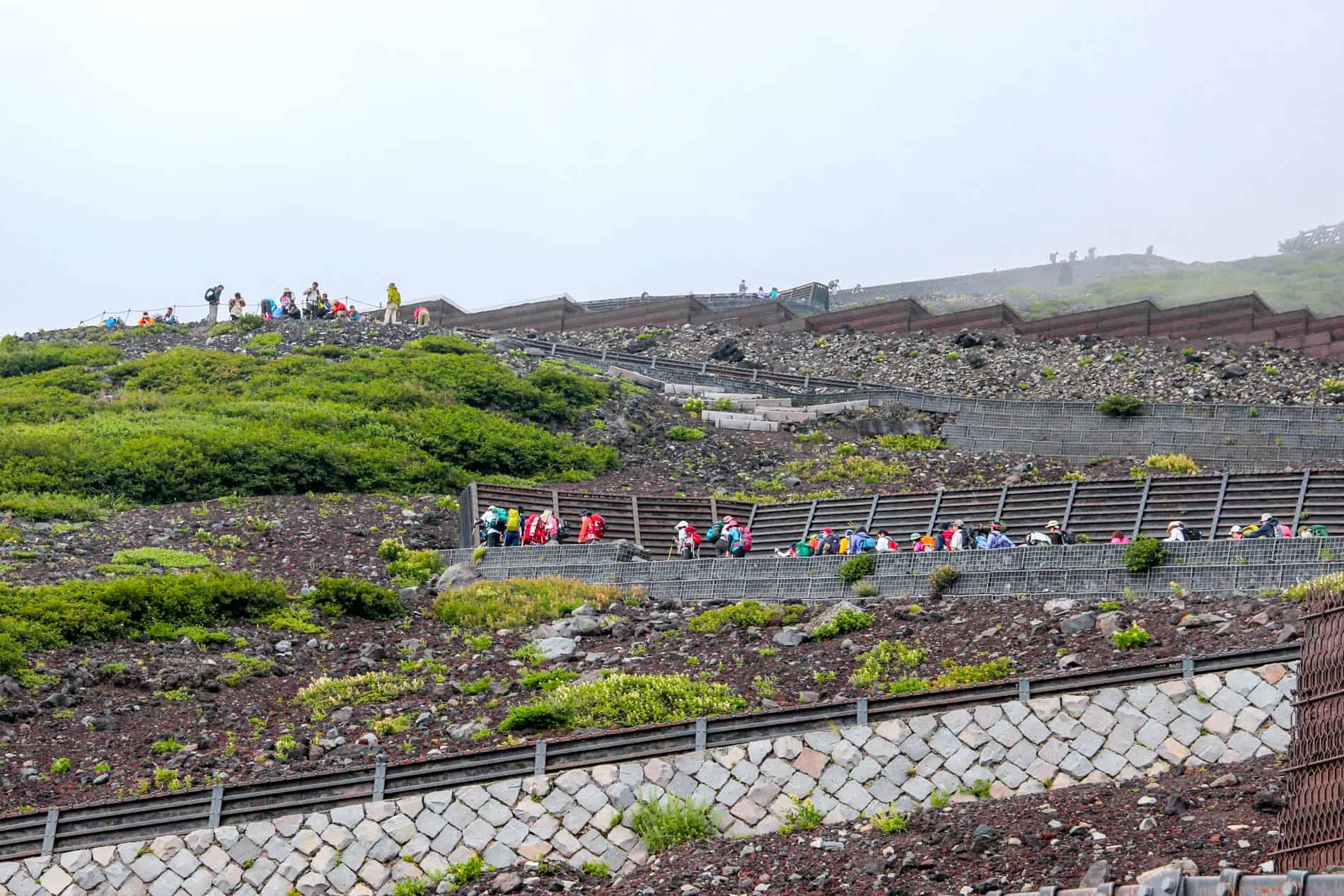
The colourful Fuji climber line.
Although you are only climbing around 1,500 metres from the 5th Station to the summit of Mount Fuji, it should be noted that during this approximate six-hour climb, you are climbing this height relatively quickly.
The climb is steep and strenuous in parts, and it’s only when you look down that you understand how sharp an incline you are on.
Taking it slow on the rocky paths.
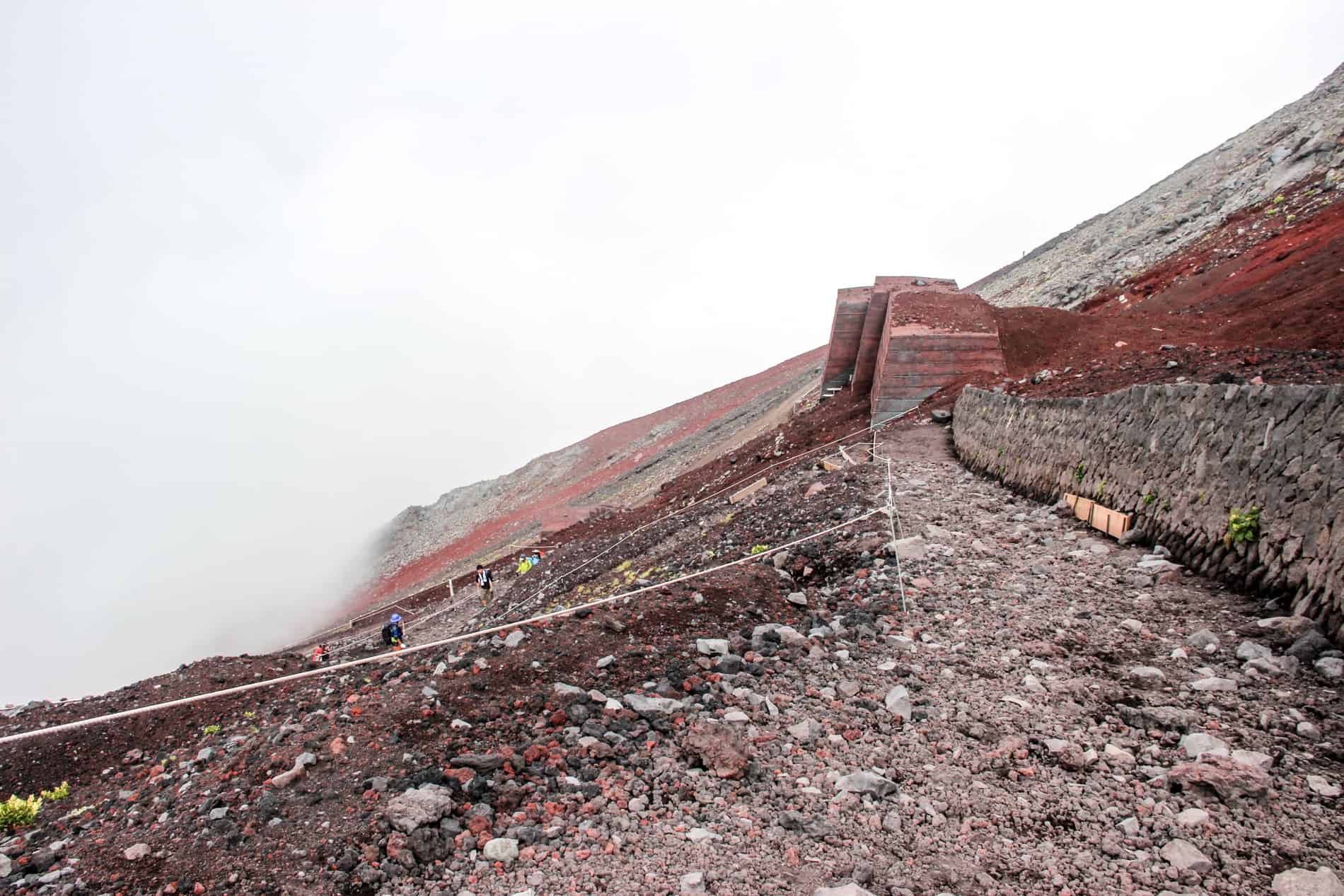
One of the sections of very steep incline on the Mt Fuji hike.
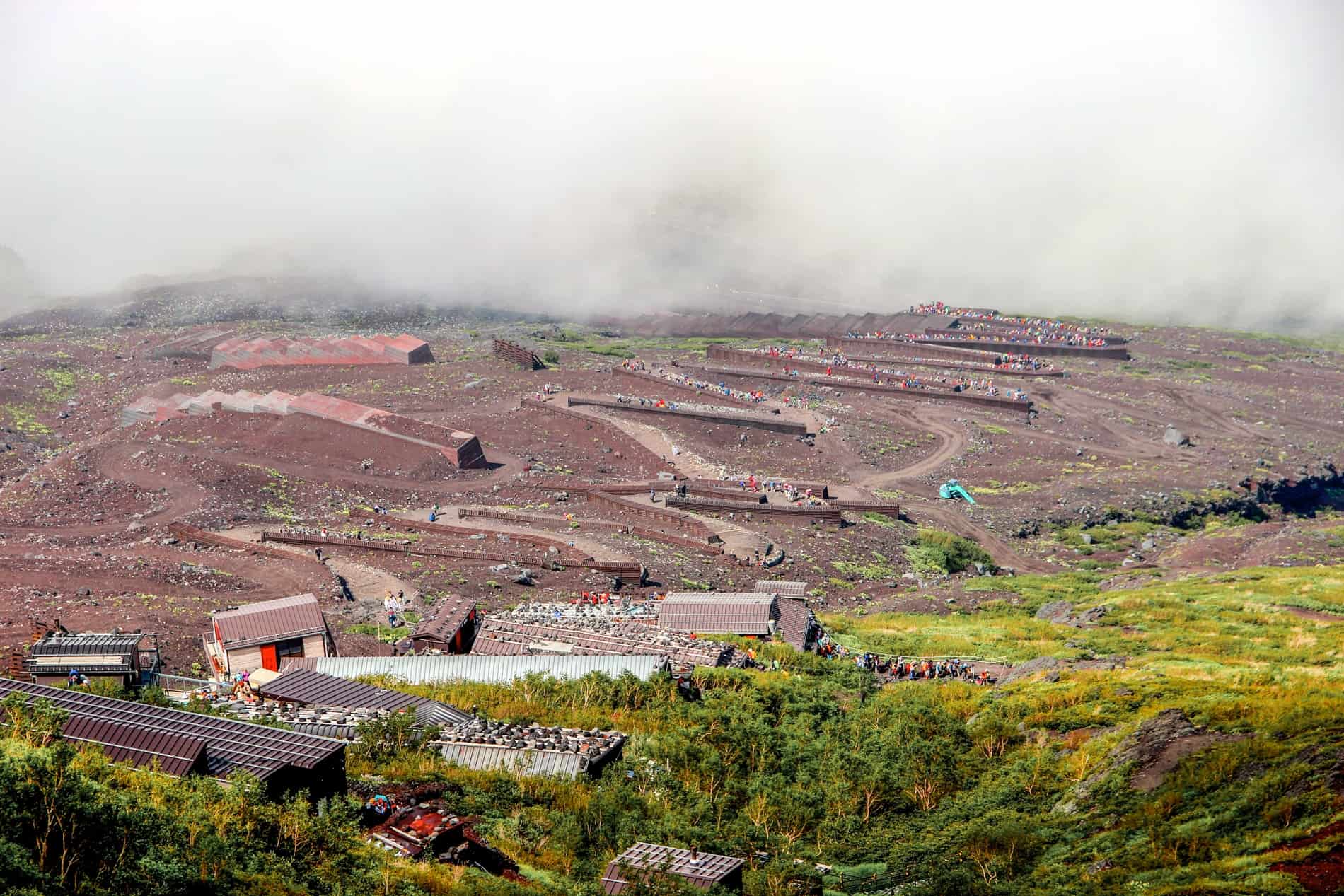
The long Mount Fuji climbing path journey between mountain stations.

What to expect on Fuji’s Yoshida trail.
A short climb does not mean you are not immune to the effects of altitude, which can kick in pretty rapidly.
I took short breaks when I reached every new mountain station; I factored in small stops for re-fuelling my energy with snacks; I walked at a slow and steady pace and drank lots of water; I did everything you are supposed to do.
Safety on Mount Fuji
The number one rule here is: you are responsible for your safety.
The altitude hit me, and it hit me hard. Importantly, I didn’t succumb to buying a canister of oxygen and relying on it in an obsessive way like many Japanese were doing, which can dangerously mask the effects of altitude.
In most mountain climbing situations, such as during the Everest Base Camp trek, a person with obvious symptoms of altitude sickness is immediately taken down or stretchered down (if more of an emergency) to get them to a lower level of altitude to recover. Usually, you are advised not to continue with your trek.
I expected to be treated with the same immediacy – my mountain house was between the 8th and 9th Stations at 3250 metres – but that was not the case.
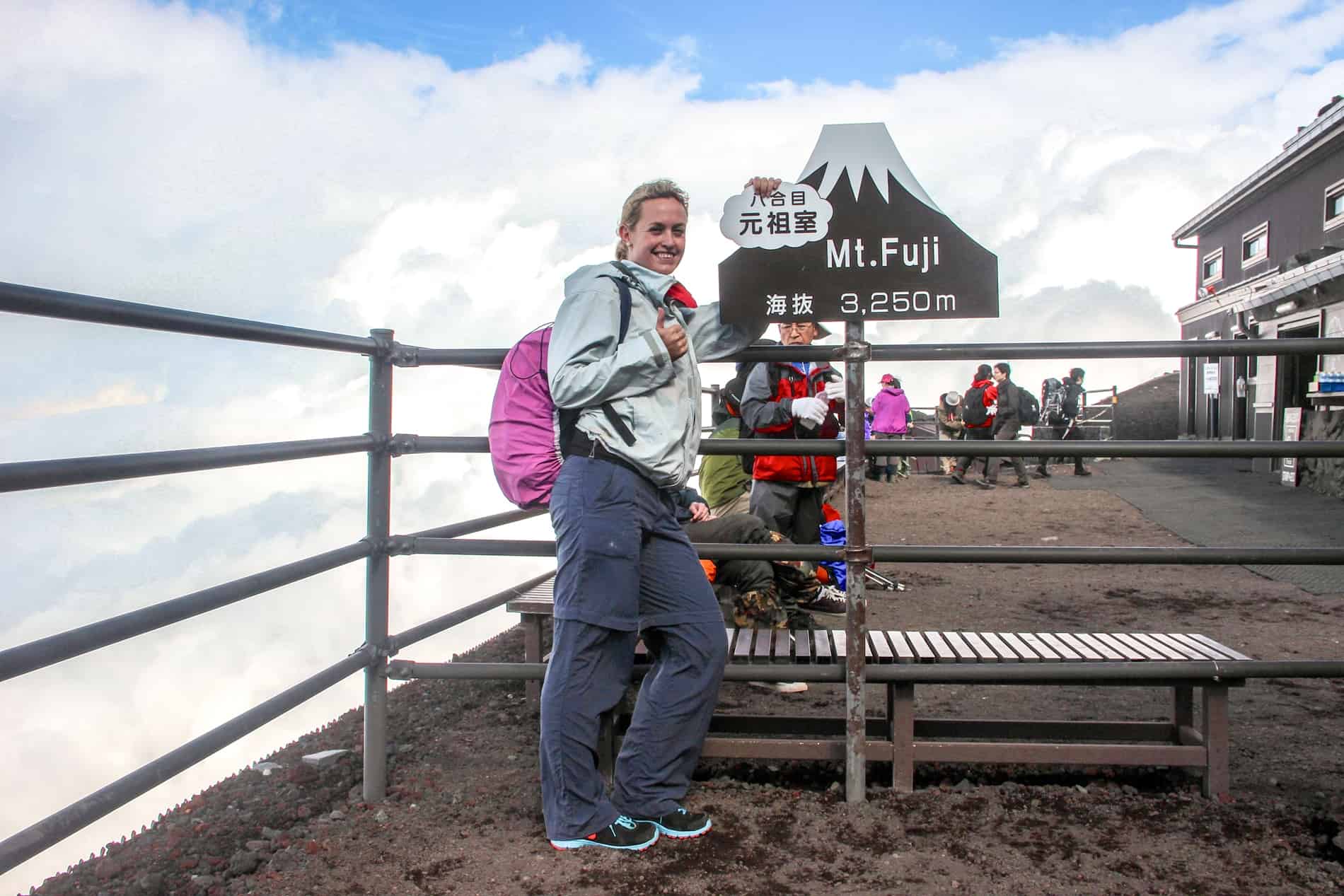
Arrival at a mountain house between the 8th and 9th Stations.
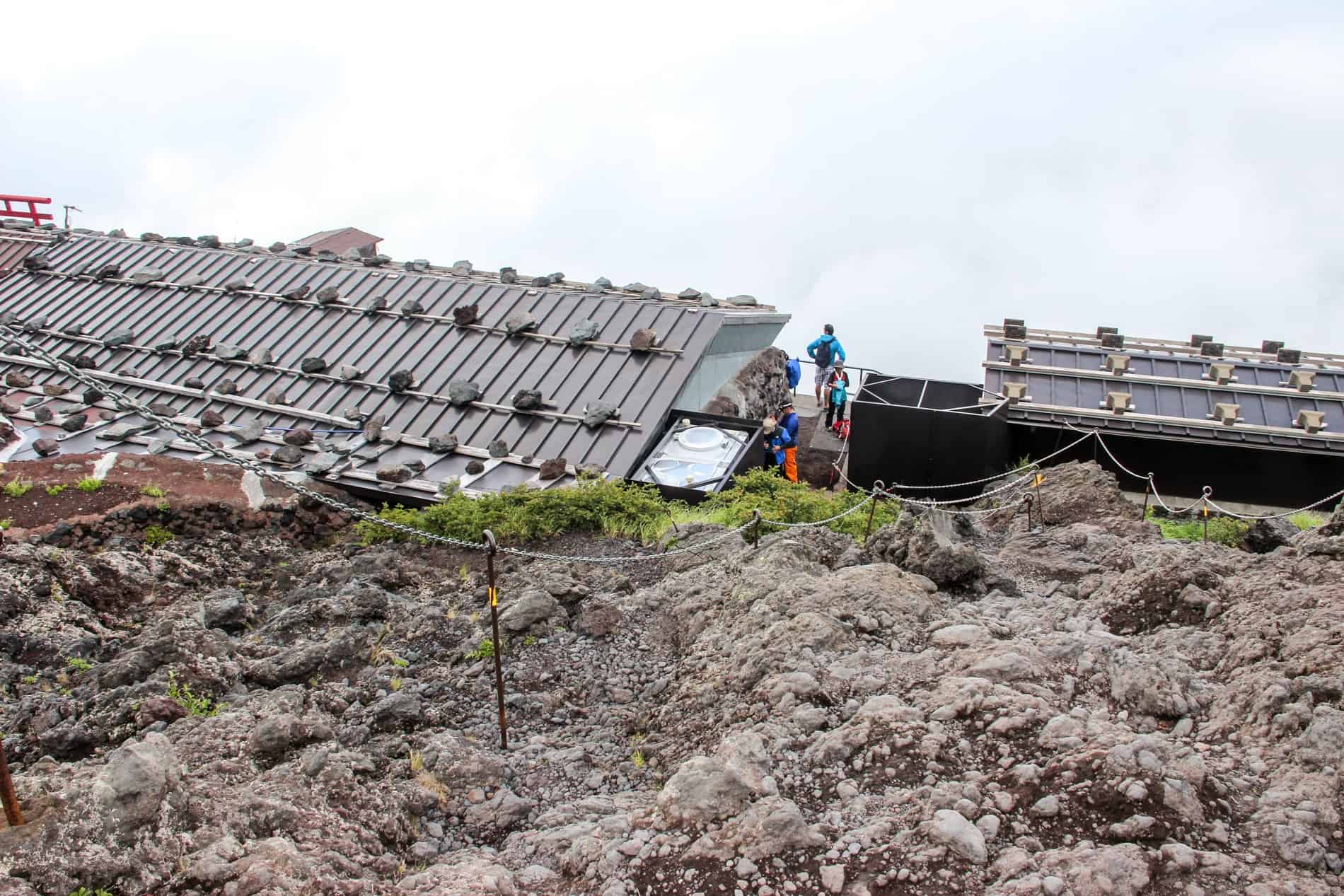
View over the Fuji Mountain Stations.
The first aid medical centre was on the 8th Station – not far. Yet not one member of staff would contact a doctor to see if I either needed help or if there was any way that I could be taken down (I saw cars). I managed to find a Japanese lady who spoke English, and she, too, tried to reason with them to no avail.
Instead, I was told to wait until sunrise as by then I would be fine, that the doctor was busy (even though they didn’t check), and to buy an expensive canister of oxygen to make myself better. I wasn’t even given a hot drink, and I was told I would have to pay insane prices if I wanted anything, including more water.
So while I spent the day leisurely climbing Mount Fuji, I was left for six hours in a dizzy haze, depleted of all energy and vomiting into a plastic bag.
So to that, I say be prepared. If you know you suffer from altitude sickness easily, take Diamox. Make sure you have painkillers. It seems it requires a lot to be able to get help getting down the mountain.
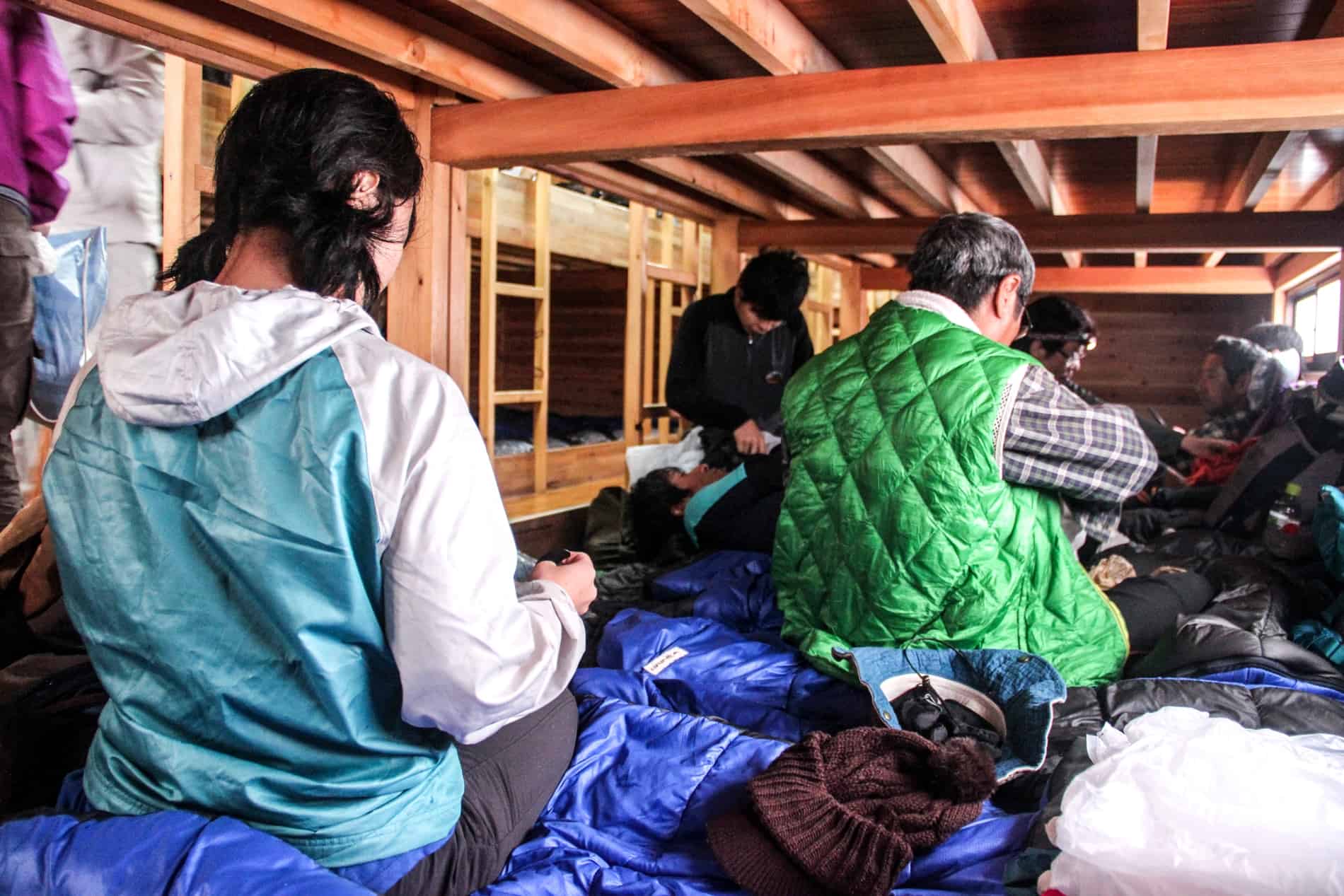
A typical communal sleeping area in a Fuji Mountain hut. Some do offer private rooms.
Something that wasn’t around when I climbed that has been implemented since is the compulsory Climbing Plan Form. This must be filled out and submitted before you ascend the mountain – it states the route you plan to take, who you are with and an emergency contact in case of search and rescue.
You then must wait to receive permission to climb Mount Fuji.
View rules, forms and guidelines.
Luckily, I had someone looking out for me – the Japanese lady wasn’t just my translator in a time of struggle, she became my friend. She promised me that she would summit Fuji and detour back to the mountain hut on the way down to pick me up.
I was awoken by the mountain house worker around 6 am. As he entered the room and aggressively pulled apart the curtains, and said bluntly: “Get up, it’s sunrise, you feel better”. I did feel better, but not that much, yet this was my cue to get out.
But the lady had kept her promise and was waiting for me. We talked and laughed down to the 5th Station, where we both sighed in relief and delighted at the finish.
I saw the sunrise over Mount Fuji through her photos as we ate ice cream – it was incredibly beautiful watching the sky change from dark blue to fiery red and then to clear blue sky above intense crowds of people.
Then she said to me: “I will never climb a mountain like this again. It was hard, and I didn’t enjoy it.”
“I’ll be back again one day”, I replied. “I’m not finished with it yet.”
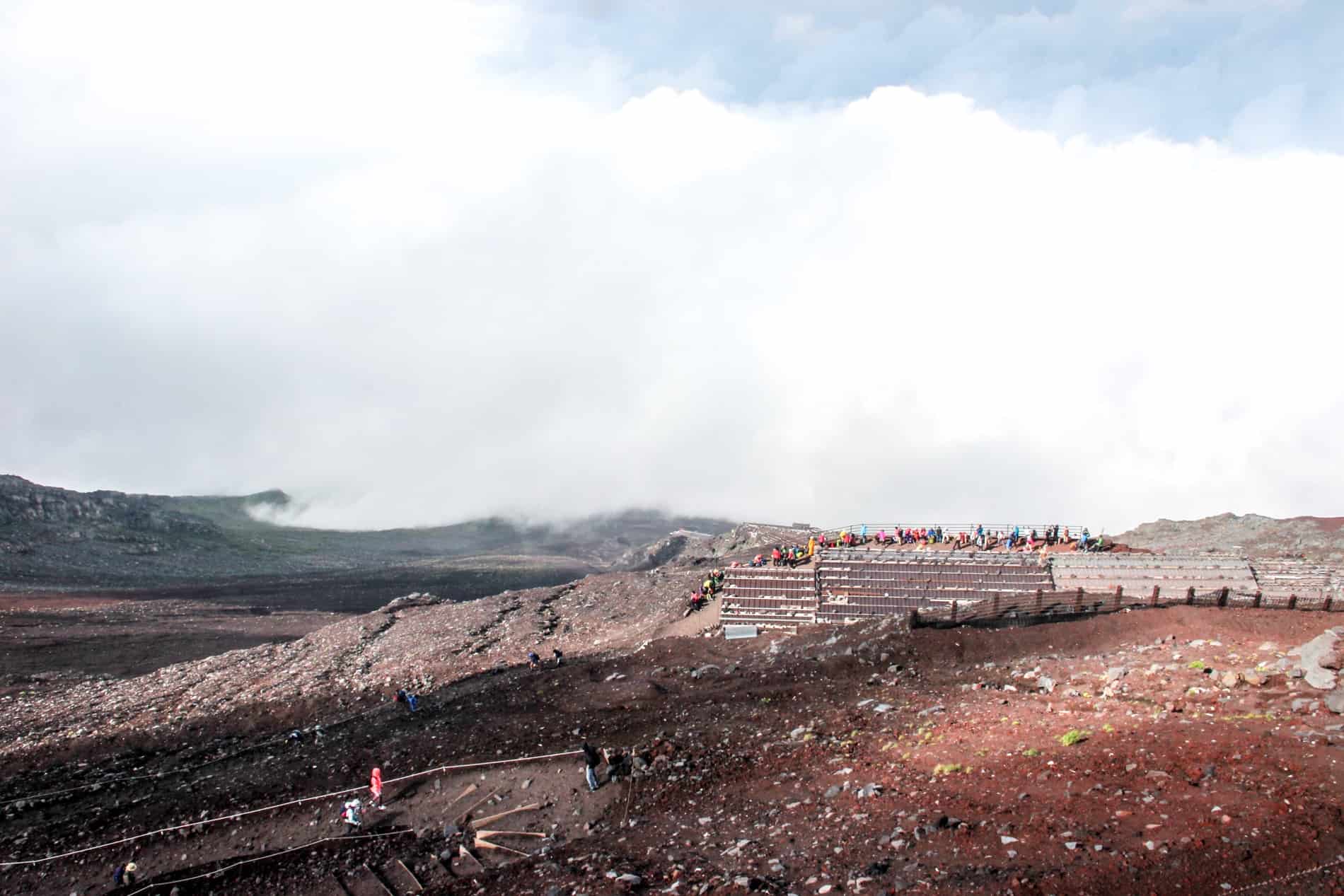
The volcanic terrain of Mt. Fuji, Japan.
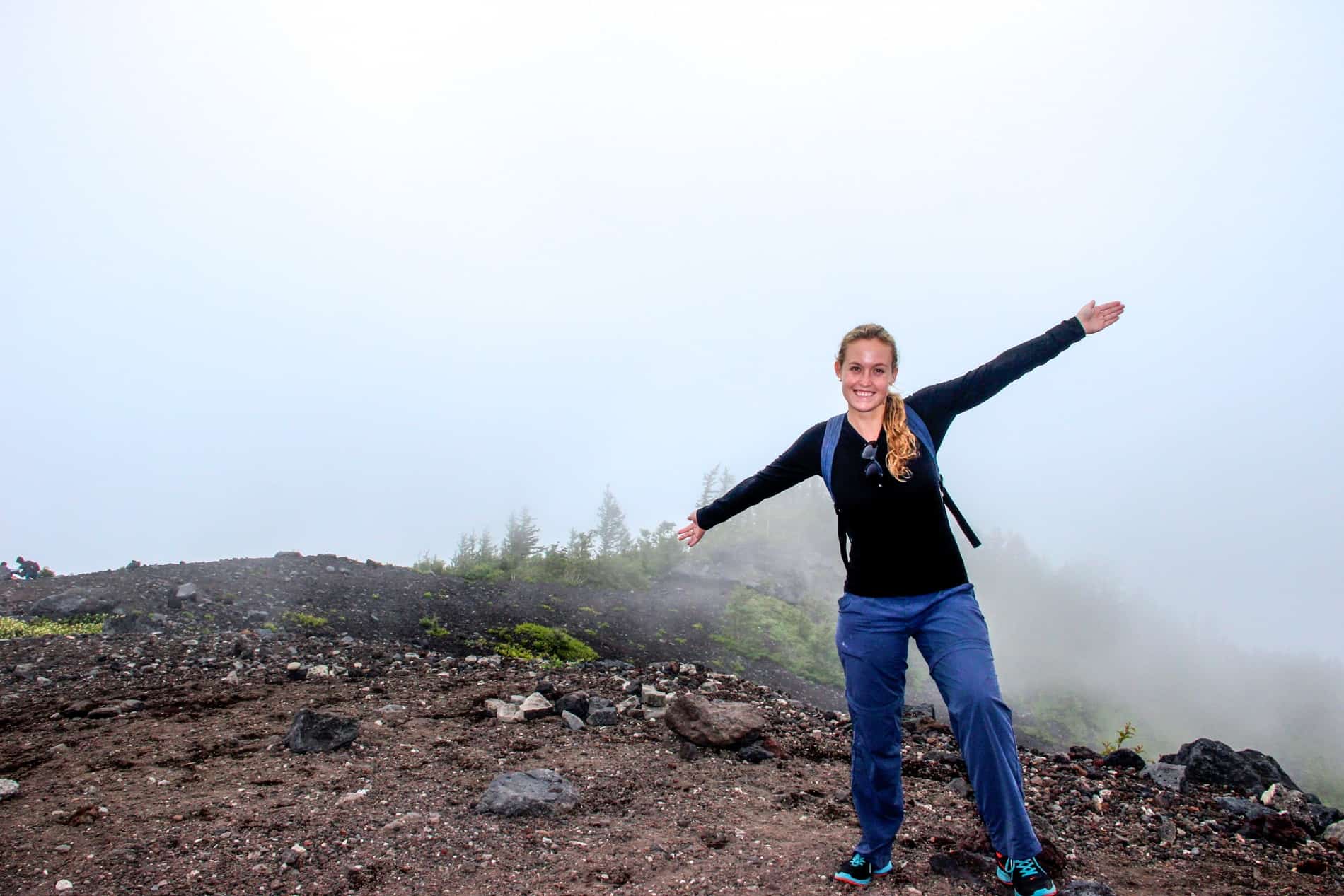
Mt Fuji views – expect a lot of fog.
Travelling in Japan
Is Mount Fuji just one of the many destinations on your Japan itinerary? From city-hopping to overall planning, check out my Japan articles for more inspiration.
- Starting from the Capital? Here’s what Tokyo is like .
- Trying to decide where to go and how to budget? Here’s the cost of a Japan trip .
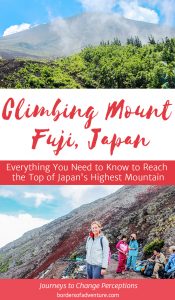
About Becki
Becki Enright is a British Travel Press Award-winning writer whose work focuses on changing perceptions about misunderstood aspects of destinations. Her writing combines storytelling with insight into the social, historical, political and economic factors that shape the country or place in relation to tourism. Becki has appeared live on Sky News and CNN and has contributed to high profile media including National Geographic, Time.com, Guardian online, New York Times, Grazia and Buzzfeed.
Carmel Hiker says
11 March 2023 at 2:17 pm
Recently (April, 2023) a friend asked me about the info on climbing Mt. Fuji. Since my climb to Fuji was 60 years ago, I started looking into the web . I am so glad I found your site; full of helpful information, lovely photos and your experience of friendship. Thank you for writing it up.
Marlina says
13 August 2015 at 10:00 pm
Thank you so much Becky for sharing your experience.
It’s good that I found you because I am traveling alone next week to Japan and was considering climbing Mt. Fuji, and the best part of the article for me was when you listened to your body and stoped climbing.
I think you were very wise to be honest with yourself… and that you are open to sharing it too. It’s not easy to accept defeat.
I am not an avid trekker, nor have the physical condition to endure so many hours of climbing, and after reading your story I have realized that I was blinded by the pictures of that wonderful sunrise, regardless of the suffering. Now my mind has changed and I will just enjoy the view of Mt. Fuji from the comfort of a nice place in the base and take it easy with myself, not pushing me to do things Im not ready to do.
All the best!
Rana Singh says
29 December 2014 at 5:54 am
Great article and wonderful pics. Japan really have some cool place. But thanx to the friendly Japanese people. Thanx for sharing and Happy New Year.
Leave a Reply Cancel reply
Your email address will not be published. Required fields are marked *
- Article Archives
- Work with me
- Privacy Policy

- Whats's sogreat about FS
- TOUR & ACTIVITIES
- RESERVATION
Finest local tour operator around Mt. Fuji
Mt. fuji climbing tour, this is the finnest climbing tour in japan.
- Day 1: Fujinomiya Trail to the Ninth Station
- Day 2: Sunrise & Gotenba Trail
- ・Wonderful walk with English speaking guide
- ・Beautiful view of Suruga bay, Hakone mountain range, 5 lakes of Mt. Fuji and Japan alps
- ・Highest peak of Japan "Kengamine"
- ・Amazing Sunrise (Depending on weather condition)
- ・Experience 2 different route Fujinomiya trail(Climbing) and Gotenba trail(Descending)
- ・Running down on "OOsunabashiri"
- ・Walking through inside of Hoei crater
- 8:30 Meet at JRShin-Fuji Shinkansen Station or JRFujinomiya Station. Get on company car and move to Mt. Fuji 5th station
- 10:00 Climatize at 5th station (2400m high from sea level) for 1 hour
- 11:00 Walk Start
- 13:00 Lunch at 7th station (2780m). Restart climbing
- 16:30 Arrival at 9th station (3560m). Stay overnight
- 17:30 Dinner and free time
- 20:00 Curfew
- 2:15 Breakfast
- 2:45 Day 2 Climbing start
- 4:45 Reach the peak area(3730m)
- 5:00 Sunrise. Restart climing to the highest point
- 5:45 Reach the Japan's highest peak Kengamine (3776m)
- 6:30 Start descending on Gotemba trail
- 8:00 2nd breakfast at Gotemba 8th station (3300m). Restart descending.
- 10:00 Reaching the peak of Mt. Hoei(The closest point to view Complete Mt. Fuji)
- 11:00 Reaching the bottom of Hoei crater(The newest crater created 300 years agao)
- 12:00 Arrival at 5th station(2400m). After short break, move to JR station by company car
- 14:00 Arrival at JR station (Tour end)
customers voice
- ・Accommodation fee
- ・Food and drinks
- ・Trekking equipment (Trekking pole, headlight etc)
- Insurance
- *Rental trekking equipment is available
Additional information
- ・Reply for your inquiry is the latest 48 hours. In case you do not receive any reply after 48 hours, pleasekindly resend your email.
- ・The route is busy some specific days in summer. In the result, it makes difficult to make a booking ofaccommodation. Please make tour reservation earlier.
- ・After making a booking for our tour, we can make a reservation for your accommodation at Mt. Fuji. Incase 9th station is busy, we use other station instead.
- ・Please feel free to request us to find your accommodation in Fuji city or Fujinomiya city.
- ・Accommodation fee at Mt. Fuji is NOT included. Reservation shall be made by us. Please pay the fee(¥7,500/week day, ¥8,500/weekend) directly to the accommodation. Accommodation fee includes dinner and breakfast.
- ・Free pickup and drop-off at hotel in Fujinomiya city is available. We are fine either we meet at Mt. Fuji 5th station or JR stations
Cancelation Policy
- ・If you cancel at least 7 calendar days in advance, there is no cancellation fee.
- ・If you cancel between 3 and 6 calendar days in advance, you will be charged a 50% cancellation fee.
- ・If you cancel within 2 calendar days in advance, you will be charged a 100% cancellation fee.
- ・There is a possibility to cancel tour a day before if the weather prospect is poor. In this case, we shall not charge any cancellation fee. Please change the date or request to refund (Bank fee is shoulderedby customer).
- ・Once tour is started, however, it discontinued with some reasons (Due to weather or health conditionetc), no refund shall be made after tour.
ツアーの お問い合わせ・お申し込み
ツアーのお問い合わせ・お申し込みはこちら
- Skip to main content
Hidden Japan Tours
Guided Mount Fuji Area Tours
Main Content
Mt. fuji area private guided tours in english, nature up close, quiet, and personal.
Contact Now Learn More

Mount Fuji Area – Guided English Tours
Classic tour – about 5 hours.
Pick-up at Kawaguchiko station or hotels, lodging, in Fujikawaguchiko. Tour by comfortable van around Lake Kawaguchiko stopping to see Mt. Fuji at several viewing points. Asama Shrine with giant Cedar trees is classic. An amazingly beautiful waterfall is close by. In season, Oishi Flower Park is lovely. We continue to Lake Saiko, center of the Five Lakes around Mt. Fuji, a clear, deep, ancient mountain lake. Then Aokigahara Jukai – the Sea of Trees. Here we walk in a spectacular forest which grew on top of a huge lava field created by Mt. Fuji in 864 AD. Covering 30 square kilometers of a most amazing area, the forest is truly beautiful and mysterious. We next visit The Dragon Cave-Ryugu Doketsu, a National Natural Monument.
- Tour about 5 hours
- Maximum 7 people
- 35,000 yen per person
- 25,000 under age 12
- Solo travelers 50,000 yen
Extended Tour – about 7 hours
Extended tour includes: Sengen Jinga Shrine-a very special place, one of the great forest shrines of Japan and the original starting point of the Mt. Fuji ascent in ancient times and still used by some today. There are 1000 year old trees here. Also, we visit The Climax Forest at the edge of the lava flow which formed the Aokigahara Jukai, where two distinct forests merge. Here we walk among ancient trees at the foot of Mt. Omuro, one of the satellite volcanic mountains on the west flank of Mt. Fuji at 1200 meters.
- Tour about 7 hours
- 40,000 yen per person/30,000 under age 12
- Solo travelers 60,000 yen

DON’T TAKE OUR WORD FOR IT

5-Stars on TripAdvisor
“…this was the most beautiful experience of our trip in Japan” Caroline
“Lakes, forests, ancient trees, history, biology, art, local people, food, markets, amazing landscapes, deep experience of soul…Thank you Christopher for your kindness and professionalism. Thank you for your big soul and heart. Thank you for your respect of this beautiful place. If you want to see and feel the real experience at Fuji San, Christopher is the right person!” Alessio and Sanae
“…we so enjoyed our time in Japan. Mt Fuji was a highlight.” Ellen
“If you are looking for a serene, yet informative experience around Mt Fuji, look no further than Christopher. We got lucky as our group ran into him our first night in Kawaguchiko, and he offered to take us out the next day and show us around. We took him up on his offer, and it was one of the best decisions we made during our entire trip to Japan. He picked us up at our hotel the next day, and we were off. Taking us all around Lake Kawaguchiko and Lake Saiko, he presented us with historical facts and nuggets about the area, while making frequent stops to let us get photos, walk the beaches, and even some squid on a stick from his local friends! He then took us to multiple locations of Aokigahara, which was the number 1 item on our to do list. The forest, nor Christopher, did not disappoint. The walks were very peaceful and again, super informative. Taking us to numerous caves and parts of the forest, Christopher never rushed us. He had an impeccable sense of when we wanted to linger and when we wanted to move on. All while safely guiding us through the dense forest of trees. It was difficult to leave, but eventually we had to as the sun was going down. We ended our day with Christopher watching the sunset at Lake Saiko. He was really spectacular as he became more than a tour guide, but a friend as well.” Michael
“Chris was knowledgeable, friendly and took us to unknown and remote areas of Mount Fuji that we’d never be able to visit by ourselves. We stopped at several sightseeing locations as well as had plenty of opportunity to try local food and drink as well which was a really neat experience and exactly what we were hoping for. This tour was our favorite part from our 10 day Japan trip and if you’re in the Yamanashi area do yourself a favor and take his tour! We can’t wait to visit again.” Bryce and Nicole
“We had an amazing day out with Chris. He took us to some beautiful sights, we would never have found without him and was very knowledgeable about the area. He was easy to talk to and made the day feel like a day out with friends rather than a guided tour. We avoided the busy tourist hotspots and instead took in the majestic scenery surrounding Fuji San and her five lakes. We were never rushed and had ample opportunity for photos. We visited shrines, waterfalls, ancient forests and sacred sites. Thank you for a wonderful, unforgettable experience.” Thanks again, Love Fay and Cal
“It’s not hard to catch the beauty of all the spots you took us to. I hope you can enjoy our pictures like we enjoyed the time with you.You are truly an inspiration! Thank you so much for running into us.” Alex and Matthias
FREQUENTLY ASKED QUESTIONS
Q: will i need anything special to bring or wear.
A: Hiking boots or walking shoes are recommended, rain gear and layers of clothes depending upon the weather and season.
Q: What if I want to see/do something different?
A: Naturally, let’s consider what you want to experience here. There are many options no matter the weather.
Q: Is this a difficult course physically?
A: We will tour at an easy pace that is very comfortable and relaxed. We can stop anytime, eat or snack near the lakes, our van, or in the woods.
Q: What is the best season to visit?
A: Each season is special, unique. Fall is a favorite.
Q: What is the best way to experience this ancient place? Where to go, when to visit? Who can show me Japan?
A: Near Mt. Fuji are many special places not seen by most. My name is Christopher. As your guide-living in Fujikawaguchiko over 20 years, I know the area well, and appreciate the natural beauty here everyday. I welcome the chance to show you hidden places as few can. In addition to the Five-Lakes, there are various places to visit, things to see, depending on the time of year and your personal interests. Please contact me to discuss your trip to the Mt. Fuji area and let me show you the real Japan.
Optional tours upon request. Some examples:
- Hiking Mt. Fuji to the Hoei Crater, site of the last eruption of Fuji in 1707
- Okuniwa Nature Park below Mt. Fuji 5th station on the Yoshida trail
- Hiking Mt. Fuji to the summit
- Lake canoeing/kayaking
- Bicycle tours
- Various hiking trails
- Star viewing, meteor showers
Gear & Stuff
Coming soon….
Send email for updates
We use cookies on this site to enhance your user experience. If you continue to browse you accept the use of cookies on our site. See our Cookie Policy for more information.
- Media & PR
- Meetings & Events
- School Groups
- Travel Trade
- Select Language 简体中文 繁體中文(香港) 繁體中文(臺灣) India (English) Bahasa Indonesia 한국어 ภาษาไทย Tiếng Việt Singapore (English) Philippines (English) Malaysia (English) Australia/New Zealand (English) Français Deutsch Italiano Español United Kingdom (English) Nordic countries(English) Canada (English) Canada (Français) United States (English) Mexico (español) Português العربية Japan(日本語) Global (English)
- India (English)
- Bahasa Indonesia
- Singapore (English)
- Philippines (English)
- Malaysia (English)
- Australia/New Zealand (English)
- United Kingdom (English)
- Nordic countries(English)
- Canada (English)
- Canada (Français)
- United States (English)
- Mexico (español)
- Global (English)
- Fujiyoshida
- Shimonoseki
- Ishigaki Island
- Miyako Island
- Kerama Island
- Tokyo Island
- Koka & Shigaraki
- Hida Takayama
- Ginza, Nihonbashi
- Beppu & Yufuin (Onsen)
- Ginzan Onsen
- Nagasaki Islands

- Kumano Kodo
- Shikoku Karst
- Amami Oshima
- Hachimantai
- Omihachiman
- Aizuwakamatsu

- Diving in Japan
- Skiing in Japan
- Seasonal Flowers in Japan
- Sustainable Outdoors
- Off the Beaten Track in Japan
- Scenic Spots
- World Heritage
- Home Stays & Farm Stays

- Japanese Gardens
- Japanese Crafts
- Temple Stays
- Heritage Stays
- Festivals and Events
- Theater in Japan
- Japanese Tea Ceremony
- Cultural Experiences in Japan
- Culture in Japan

- Local Cuisine Eastern Japan
- Local Cuisine Western Japan
- Local Street Food
- Japan's Local Ekiben
- Japanese Whisky
- Vegetarian and Vegan Guide
- Sushi in Japan Guide
- Japanese Sake Breweries

- Art Museums
- Architecture
- Performing Arts
- Art Festivals
- Japanese Anime and Comics
- Japanese Ceramics
- Local Crafts

- Scenic Night Views
- Natural Wonders
- Theme Parks
- Samurai & Ninja
- Iconic Architecture

- Wellness Travel in Japan
- Japanese Ryokan Guide
- A Guide to Stargazing in Japan
- Relaxation in Japan
- Forest Bathing (Shinrin-yoku)

- Experiences in Japan
- Enjoy my Japan
- National Parks
- Japan's Local Treasures
- Japan Heritage
- Snow Like No Other
- Wonder Around Japan

- Visa Information
- Getting to Japan
- Airport Access
- COVID-19 Practical Information
- Anime Tourism
- Countryside Stays
- Sustainable Travel
- Accommodation
- Sample Itineraries
- Travel Agents
- Deals and Tours

- Traveling by Rail
- How to Travel by Train and Bus
- JR Rail Passes
- Train Passes and Discounted Tickets
- Scenic Railways
- Renting a Car
- Yokohama Cruise Port Access
- Travel Brochures
- Useful Apps
- Accommodation Types
- Online Reservation Sites
- Eco-friendly Accommodation
- Luxury Accommodations
- Traveling With a Disability
- Hands-free Travel
- How to Book a Certified Tour Guide
- Volunteer Guides
- Tourist Information Center

- Japanese Manners
- Sustainable Travel in Japan
- Spring in Japan
- Summer in Japan
- Autumn in Japan
- Winter in Japan
- Seasonal Attractions
- Monthly Events Calendar
- Cherry Blossom Forecast
- Autumn Leaves Forecast

- Japan Visitor Hotline
- Travel Insurance in Japan
- Japan Safe Travel Information
- Accessibility in Japan
- Vegetarian Guide
- Muslim Travelers
- Safety Tips

- All News & Blog
- Travellers Blog
- Guides to Japan
- Stories of Japan
- The Other Side of Japan
- Media Releases
- JAPAN Monthly Web Magazine

My Favorites
${v.desc | trunc(25)}
Planning a Trip to Japan?
Share your travel photos with us by hashtagging your images with #visitjapanjp
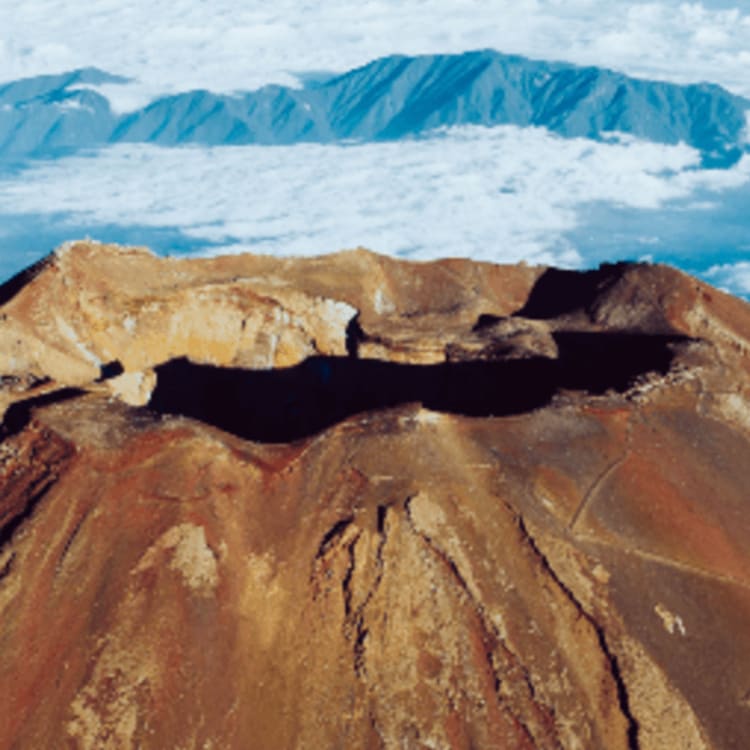
Guide Climbing Mt. Fuji: The top recommended itinerary
We sent Aussie adventurers, Hayley and Kyle , to climb Mt Fuji for the first time! Taking two days in total, including a night spent up on the mountain, the fun-loving duo returned with a wealth of experiences and recommendations they want to share with you!
This recommended itinerary takes place over 2 days. On the first day, the hike begins from the Fujinomiya 5th station (2,400m) and goes up to Akaiwa Hachigo mountain hut (3,300m) located at the 8th station where you rest for the night. This first climb is around 4km and will take most of the day.
On the second day, the final ascent to the top of Mount Fuji starts early in the morning and finishes with the descent back down to the 5th station.
Note: The Fujinomiya trail begins at 2,400 meters and is the shortest in distance to reach the top, but is also steeper and rockier in comparison to other trails (Yoshida, Gotemba and Subashiri). The duration of the ascent depends on many variables including weather conditions, route conditions, temperature and fitness level.
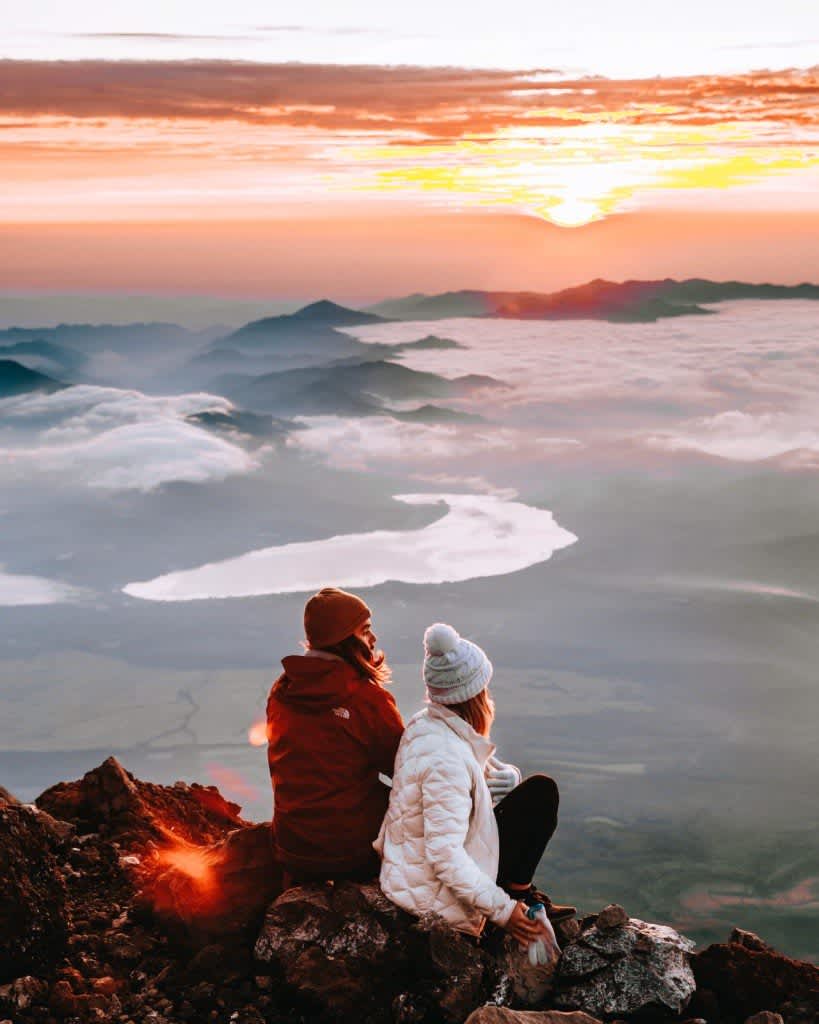
8:30–9:30am | Arrive at Mt. Fuji Fujinomiya 5th station 9:30–10:30am | Begin ascent on Fujinomiya route On a clear day you will be rewarded with views of the Pacific and surrounding mountains, including Hakone and Lake Ashi. Be sure to take as many rests as needed to give your body time to slowly adjust to the change in altitude. 3:00–5:30pm | Arrive at 8th station Akaiwa Hachigo mountain hut
Once you reach the 8th station, enjoy a hot meal and get ready for bed. The hut is quiet compared to huts on other trails, however it is far from the Hilton. You’ll be sleeping on Japanese futons in a bunk (mixed gender) that can get quite crowded—all part of the experience!
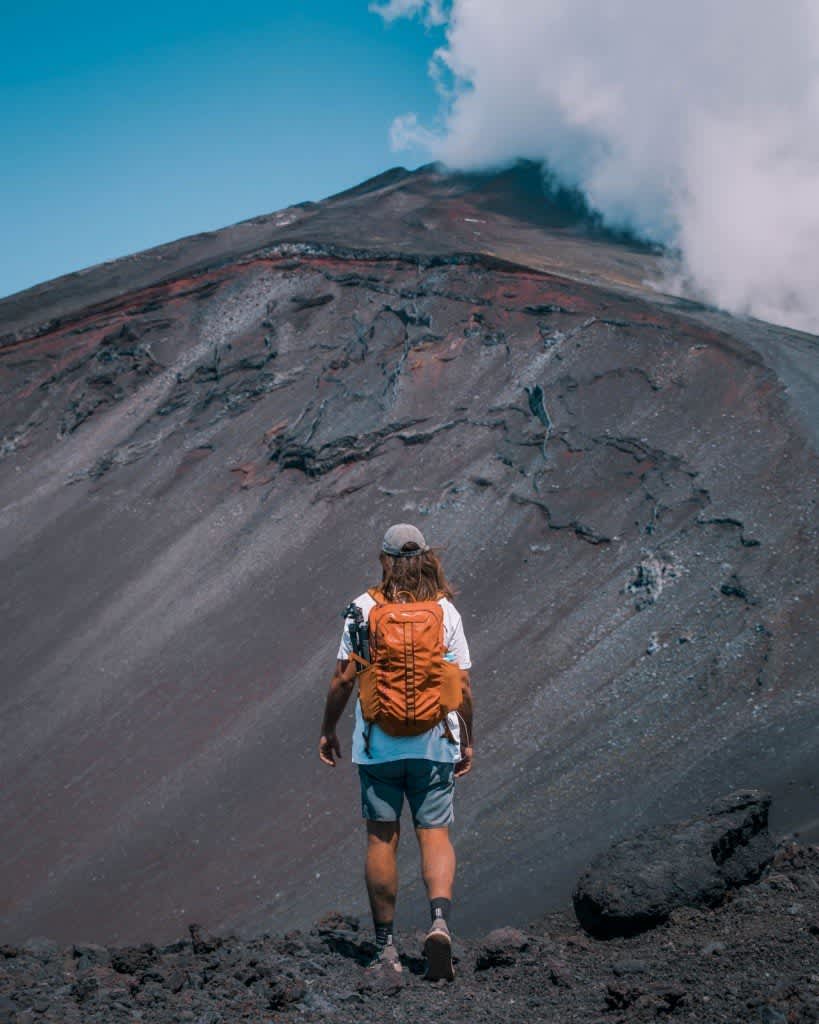
1:00–3:00 am | Rise and shine 1:30–3:30 am | Depart hut for Mt. Fuji peak This final twilight climb offers a secluded, spiritual experience, offering you a stunning sunrise over the clouds. The summit of Mt. Fuji is approximately a 2 hour climb from Akaiwa Hachigo at a relaxed, steady pace.
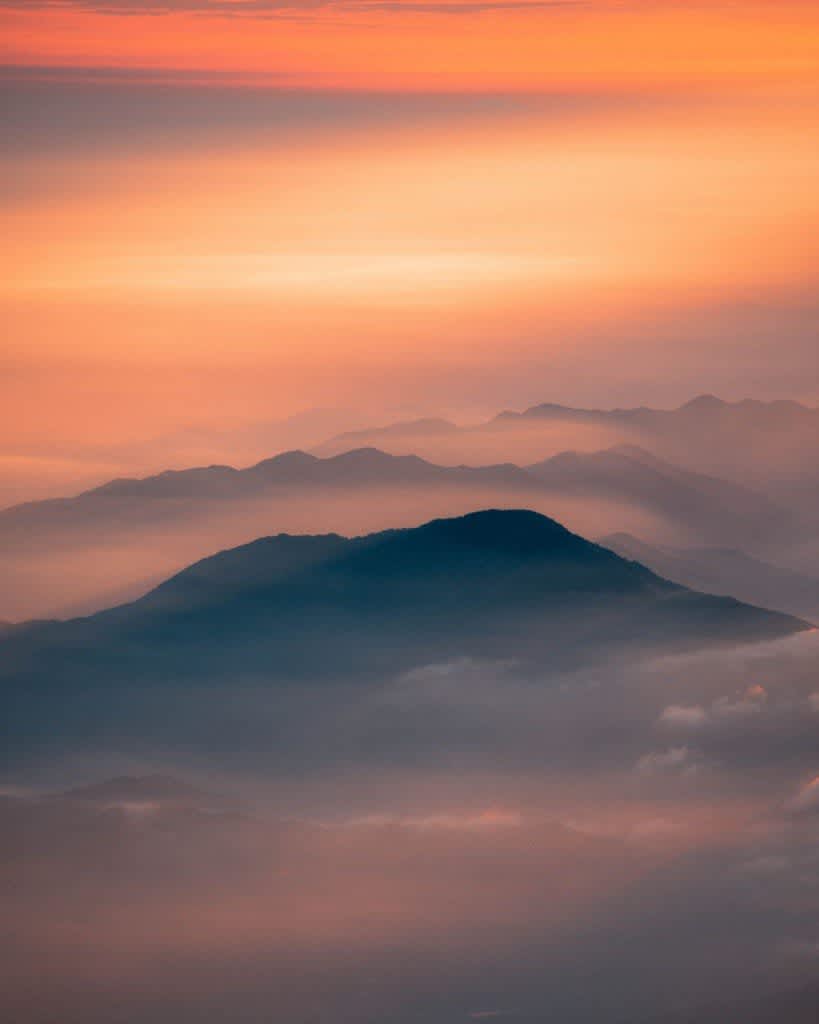
3:30-5:30 am | Arrive on Mt. Fuji peak The sunrise atop Mt. Fuji is known as goraiko or "Buddha's Halo". The sun gradually appears in dazzling shades of purple, pink, and orange over the sea of clouds that Japanese call "the ocean of cotton". Various temples, shrines, and torii gates scatter the large dominating crater on the summit. After you’ve admired the sunrise, spend an hour following the circuit of the mountain’s 8 peaks, including the 3,776m above sea level peak, Kengamine, the highest point in Japan.

5:30-7:00 am | Descent to Fujinomiya 5th station The descent takes about half the time but still requires significant effort due to the steepness. We recommend stopping by Akaiwa Hachigo for breakfast or to pick up any excess luggage you might’ve left. 10:00-1:00 pm | Arrive at Fujinomiya 5th station You did it! Now onto your next destination!
Hayley and Kyle answered some questions that should help you out if you decide to do the climb yourself. View the excerpt below, or check out Hayley and Kyle’s blog for the full Q&A here !
Do I need a guide?
Now, it’s not compulsory to have a guide, but it’s highly recommend having one. The trails can be confusing and easily mistaken if you’re on your own. Guides will also help with communicating between the locals at each station, as a lot of the Japanese don’t speak English.
We had a guide the entire time and felt he was extremely helpful with adjusting to the altitude, guiding us along the best trails and of course making sure of our safety. We booked our guide here .
How do I book a mountain hut?
Firstly you want to find the hut you would like to stay in. Preferably the highest hut along the trail you wish to follow. Here is a list and information of all the mountain huts.
Note: most mountain huts are only open during the official climbing season.
Secondly, you will need someone to book the hut who speaks Japanese, as majority of the staff at mountain huts don’t speak English. This could be a hotel receptionist, or your guide if you decide to take a guided tour.
Thirdly, you want to try book in advance if you are climbing over a weekend. The price is approx. 9000 yen including dinner and breakfast.
What is it like sleeping in a mountain hut?
Some of the huts can sleep up to 100+ people, leaving you only a tight sleeping space of only 1m. If you’re a light sleeper, make sure to pack an eye mask and ear plugs to help you sleep as it is loud throughout the night. You are provided dinner and breakfast which is usually a serving of curry and rice. If you are vegetarian, you will have to bring your own options.
There is no tap water on site, so washing your hands or face, or refilling your water bottle isn’t possible. If you need more water you will need to purchase bottled water at the hut.
What’s the best time to climb?
Mt Fuji is only open to hikers between early July to early September, and peak time being on weekends. These dates are due to the weather conditions being safe for travellers.
How much does it cost to do the climb?
While it doesn’t officially cost to climb the mountain, a donation towards the conservation of the mountain will be requested if you go beyond the 5th or 6th stations. 1,000 yen is usually the amount that is donated but you can donate more if you wish. It is also advisable to bring a handful of 100 yen coins as the toilets are not free to use.
What should I pack?
- Weatherproof pants, jacket and shoes
- Thick breathable socks, beanie and gloves
- Sun protection (sunscreen, glasses and hat)
- Lip balm, ear plugs, eye mask, face wipes
- Panadol and basic first aid
- Small garbage bags for rubbish
- 100 yen coins for bathroom
- Snacks (food for dinner if vegetarian)
- Spare clothes
Thinking of climbing Mt Fuji? Plan your trip today !
Please Choose Your Language
Browse the JNTO site in one of multiple languages

Mt. Fuji Ultimate Hiking Guide | All You Need to Know
- August 16, 2023
There’s an old Japanese saying: “He who climbs Mt. Fuji once is a wise man; he who climbs it twice is a fool.” I must say, I agree. The adage completely captures the allure and challenge of this magnificent mountain.
Climbing Mt. Fuji is a rite of passage, an experience rich in moments of awe, reflection, and physical rigor. But scaling its heights requires more than just physical stamina—it demands preparation and respect for the holy mountain.
Standing tall at 3,776 meters (12,389 feet), Mt. Fuji, better known as Fujisan locally, is a reflection of Japan’s very spirit.
In 2013, Mt. Fuji was recognized for its unparalleled cultural significance and was inscribed as a UNESCO World Heritage Site, not as a natural wonder, but as a cultural one. That speaks volumes on just how important Mt. Fuji is to the nation.
Our own journey up this revered mountain was transformative—a tale of endurance, camaraderie, and plenty of introspection. Needless to say, our Mt. Fuji Hiking Experience was an adventure of a lifetime!
This comprehensive guide is designed not just to prepare you for the climb but also to deepen your appreciation for Mt. Fuji and its storied past.
As you set forth on this adventure, remember that climbing Mt. Fuji isn’t merely about reaching its summit—it’s about connecting with a vital aspect of Japanese heritage.
With every step, you walk a path steeped in history, tradition, and spirituality . And as you do, bear in mind the mountain’s duality : a site of natural beauty and a bastion of cultural significance.
Let this journey be not just of feet and miles but also of heart and soul.
Table of Contents
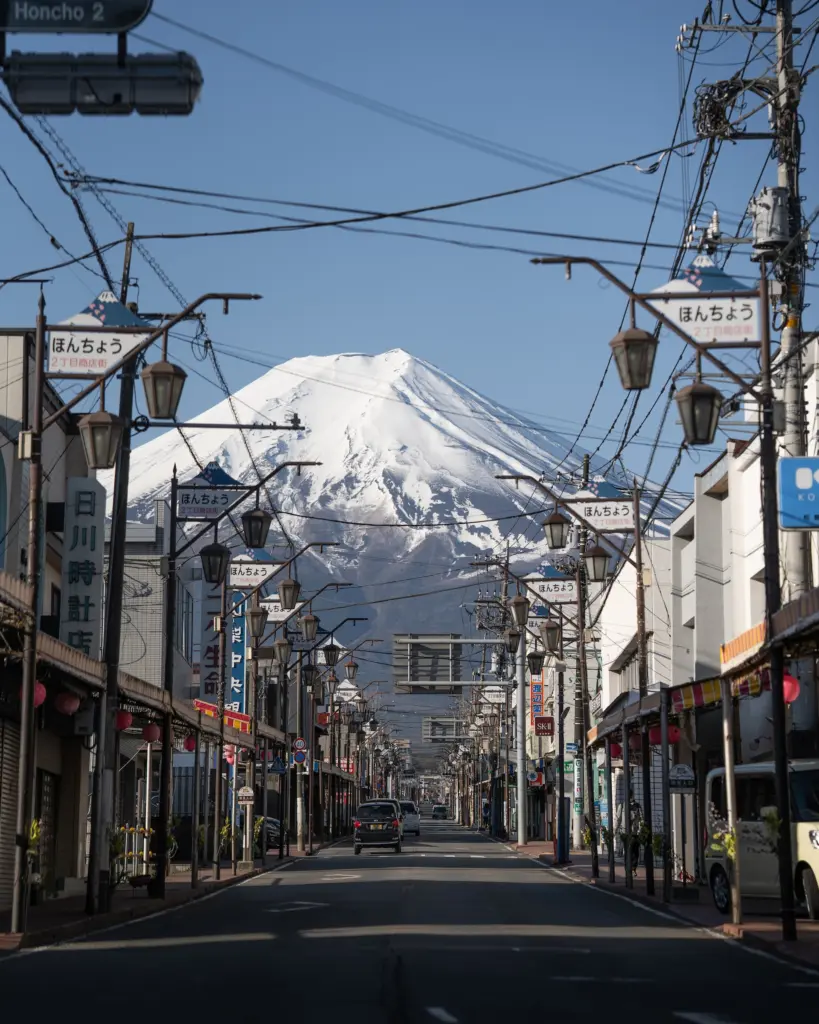
Where is Mt. Fuji?
Mt. Fuji is located on the main island of Honshu in Japan . Specifically, it lies on the border between Yamanashi and Shizuoka Prefectures.
It’s situated 100 km (62 mi) southwest of Tokyo and can even be seen from the city on a clear day.
It stands adjacent to the Pacific Ocean, and its base encompasses several lakes, the most famous of which are Lake Kawaguchi , Lake Yamanaka, and Lake Motosu.
The city of Fujiyoshida lies to the north, while Gotemba is situated to the southeast. Both cities serve as common starting points for travelers heading to the mountain.
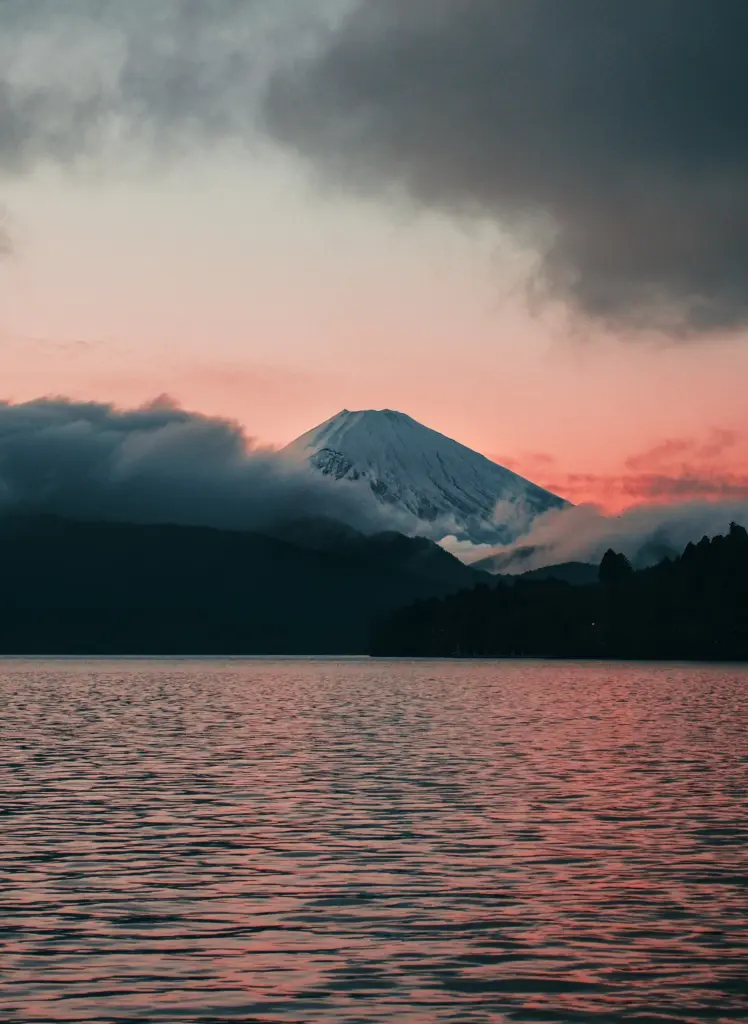
Why is Mt. Fuji Sacred?
More than just a mountain and more than Japan’s tallest peak— Mt. Fuji is a spiritual icon deeply embedded in the nation’s psyche.
Historically, the indigenous religion of Japan, Shintoism , revered mountains as the homes of deities, and the grandeur of Mount Fuji naturally made it the abode of a potent spirit.
Over time, as Buddhism permeated Japanese culture in a form of religious syncretism , Mount Fuji’s sanctity evolved further.
It came to be seen as a nexus between our world and the higher realms.
The mountain’s aesthetic—a nearly perfect, snow-capped cone—has made it a symbol of purity, immortality, and rebirth.
This symbolism is further enriched by the mountain’s volcanic nature. Its sporadic eruptions and the consequent fertile lands stand as metaphors for life’s cyclical pattern of creation, obliteration, and renewal.
Works like the “Thirty-Six Views of Mount Fuji” by Hokusai offer glimpses of the mountain’s omnipresence in Japanese life.
And while modernity has changed many traditions, the annual pilgrimages to Mount Fuji, undertaken by countless souls (including the mystical yamabushi ) seeking spiritual purification, are proof to its undiminished significance.
Which Mt. Fuji Trail is Best?
The “best” trail on Mt. Fuji often depends on what you’re looking for – whether it’s a challenging route, scenic beauty, or fewer crowds.
For first-time climbers and those seeking a well-facilitated route with cultural touchpoints, the Yoshida Trail might be best.
For experienced hikers who prefer fewer crowds and a more extended, challenging hike, the Gotemba Trail might be the choice.
Those wanting a mix of forest terrain and volcanic sand might opt for the Subashiri Trail.
While hikers looking for a more direct and easier path to the summit might prefer the Fujinomiya Trail .
Here’s a breakdown of each of the main trails to help you choose the right one for you:
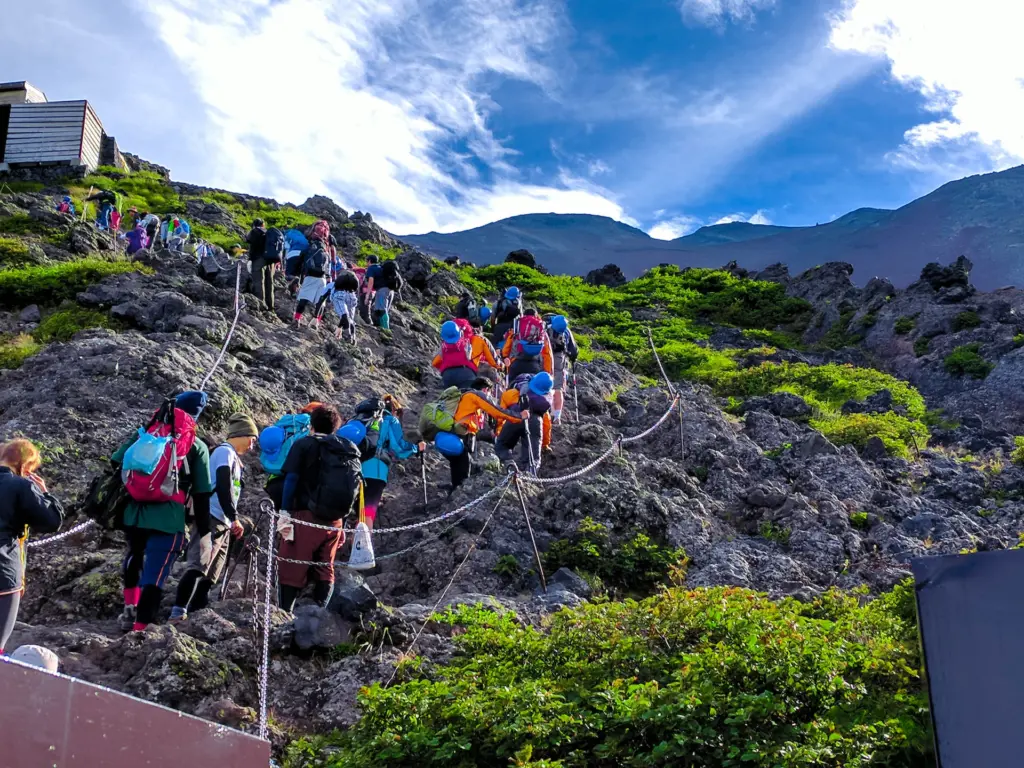
Yoshida Trail
Why Choose the Yoshida Trail :
- Ochudo Path : A relatively flat path that circles the mountain around the 5th station. It’s a serene diversion where you can get different vantage points of Mount Fuji and its surroundings.
- Torii Gates and Shinto Shrines : Along the way, you’ll pass through several torii gates, indicating the presence of Shinto shrines. It’s a very spiritual trek.
The Yoshida Trail is often touted as the most “beginner-friendly” of the four major routes leading to the summit of Mount Fuji. However, this doesn’t mean it’s a walk in the park.
While it’s the most established trail, it still requires a reasonable level of physical fitness (all of the trails do).
The trail stretches approximately 20 km (12 mi) round-trip.
Starting from the fifth station at an altitude of 2,300 m (7,545 ft) , climbers usually take about 6 hours to reach the summit and about 4 hours to descend, making for a total of 10 hours of hiking.
The Yoshida Trail is, without a doubt, the most popular route to the summit of Mount Fuji. Its accessibility from Tokyo and its reputation as the “easiest” path up the mountain make it a favorite choice for both locals and tourists. Anticipate crowds, especially during the official climbing season (July and August).
It’s not uncommon to experience “traffic jams” on the trail during peak times, where you’ll have to wait your turn to proceed, especially the summit.
The various mountain huts along the route can also get crowded, so it’s wise to book in advance if you plan on spending the night.
The Yoshida Trail is rich in amenities compared to other trails. Mountain huts are frequent, and there are clear signposts in both Japanese and English. Plus, the path is well-maintained.
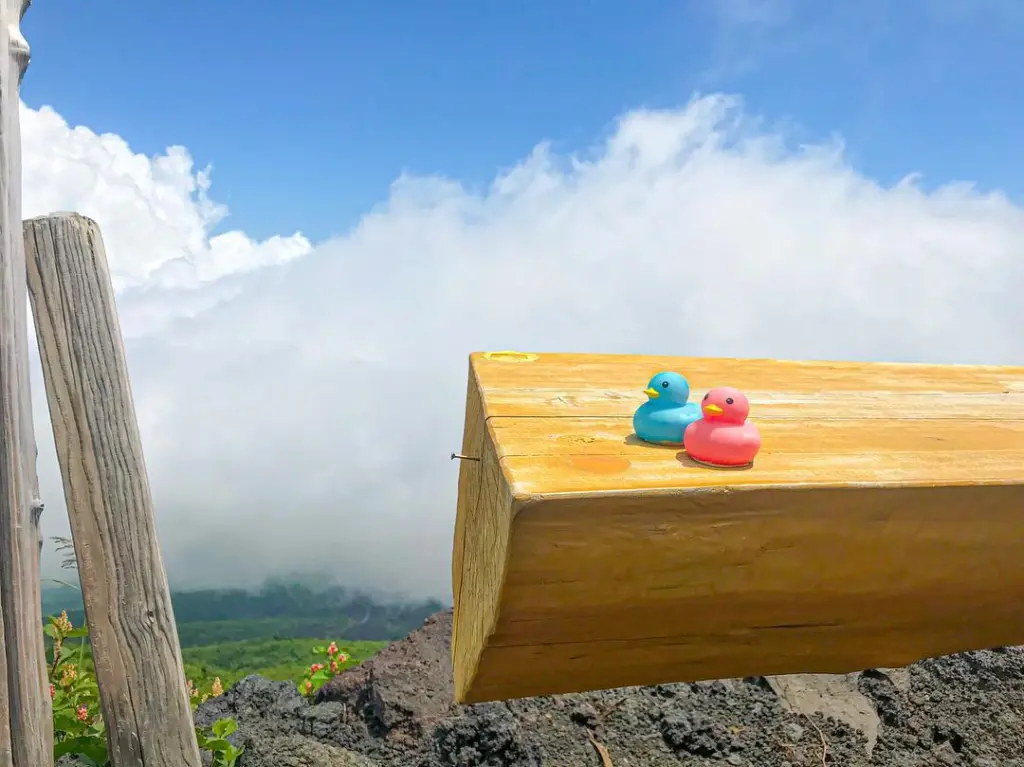
Subashiri Trail
Why Choose the Subashiri Trail :
- Verdant Forests : The beginning of the Subashiri Trail offers a beautiful trek through lush green forests, providing shade and a distinctively different environment from the other trails.
- The Sunabashiri Sand Slide : The Sunabashiri, unique to the Subashiri descending route, allows you to take large sliding steps in the volcanic sand, making the descent both fun and faster. Similar to what we did in Mongolia ‘s Singing Dunes , it’s one of the most fun things we did on the way down which also sped up our descent considerably. Make sure you have masks because it can get really dusty especially if you’re behind the sand-runners.
The Subashiri Trail is known for its distinct volcanic sand paths, especially in the descending route, which has given it the nickname “Sunabashiri,” translating to “sand run.”
Starting at an altitude of 2,000 m (6,560 ft), the initial parts of this trail are relatively gentler, you’ll go through dense forests, but as you ascend, the trail does become steeper and more challenging, particularly once it merges with the Yoshida Trail near the 8th station, the lush forests being replaced by the barren landscape of volcanic gravel.
Our group went with the Subashiri Trail just because we wanted to see some semblance of nature. Mt. Fuji is beautiful from afar, but once you hike it you’ll realize there’s nothing much to see except rocks, rocks, and more rocks. On the descent, we took the Yoshida trail to see another side of Mt. Fuji.
The Subashiri Trail covers approximately 19 km (11 mi) round-trip. From the fifth station starting point, the ascent typically takes around 6 hours, while the descent, especially if making use of the sandy “slide” of the Sunabashiri, takes about 3 hours. Overall, you should allocate 9 hours for the full hike.
While the Subashiri Trail isn’t as crowded as the Yoshida route, it still attracts a good number of hikers. The initial stages, up to where it merges with the Yoshida route, are less populated, allowing for a more serene hiking experience.
Once it merges, expect the crowd levels to be similar to those of the Yoshida Trail, especially near the summit.
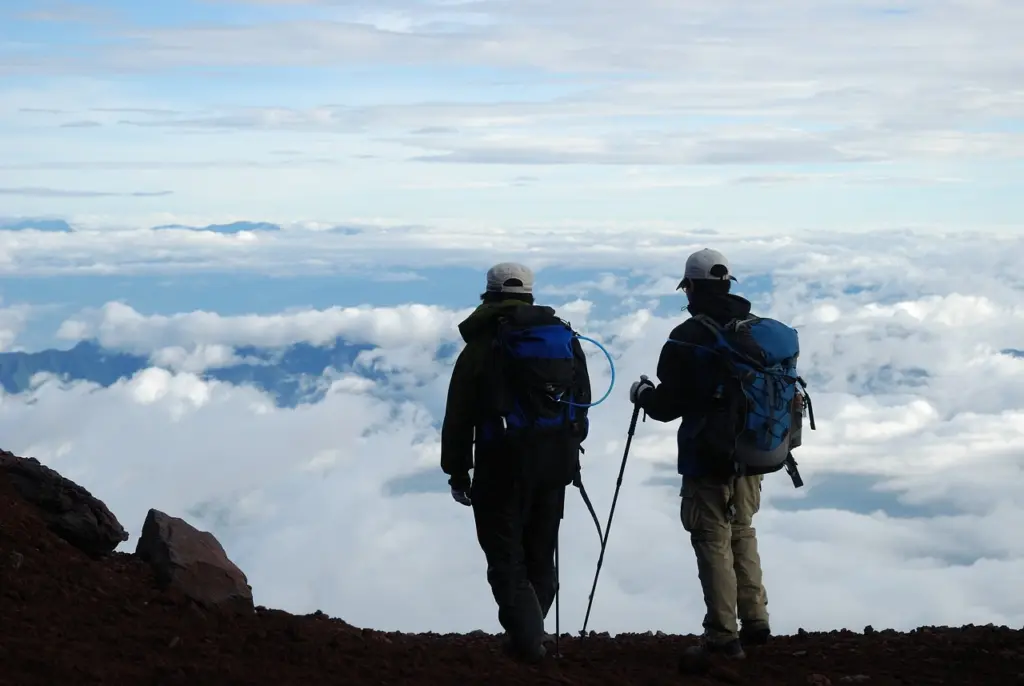
Gotemba Trail
Why Choose the Gotemba Trail :
- Osunabashiri Sand Slide : Not to be confused with the Subashiri Sand Slide, the Osunabashiri on the Gotemba Trail is the longest continuous descent path covered in volcanic sand on Mount Fuji.
- Osawa Kuzure : The trail encompasses the Osawa Kuzure, a vast volcanic gravel pleateau. Traversing this area is both challenging and awe-inspiring as you go through an otherworldly landscape.
The Gotemba Trail is characterized by its relatively low starting altitude (1,450 m or 4,570 ft), which means a longer ascent compared to the other trails.
The Gotemba Trail spans roughly 22 km (13 mi) for the round trip journey.
Due to its longer distance and challenging terrains, you can anticipate a longer ascent time—typically around 7 hours. For the descent, leveraging the broad Ochudo gravel paths, it might take around 3 hours. In total, allocate approximately 10 hours for the complete expedition.
The Gotemba Trail tends to attract fewer hikers than the Yoshida and Subashiri trails, partly because of its demanding nature and its lower starting altitude. Note, that there are also no first-aid centers here.
This could be a preferred choice if you’re looking for a less crowded, albeit more challenging experience. The crowds will pick up once the trails start to converge towards the summit.
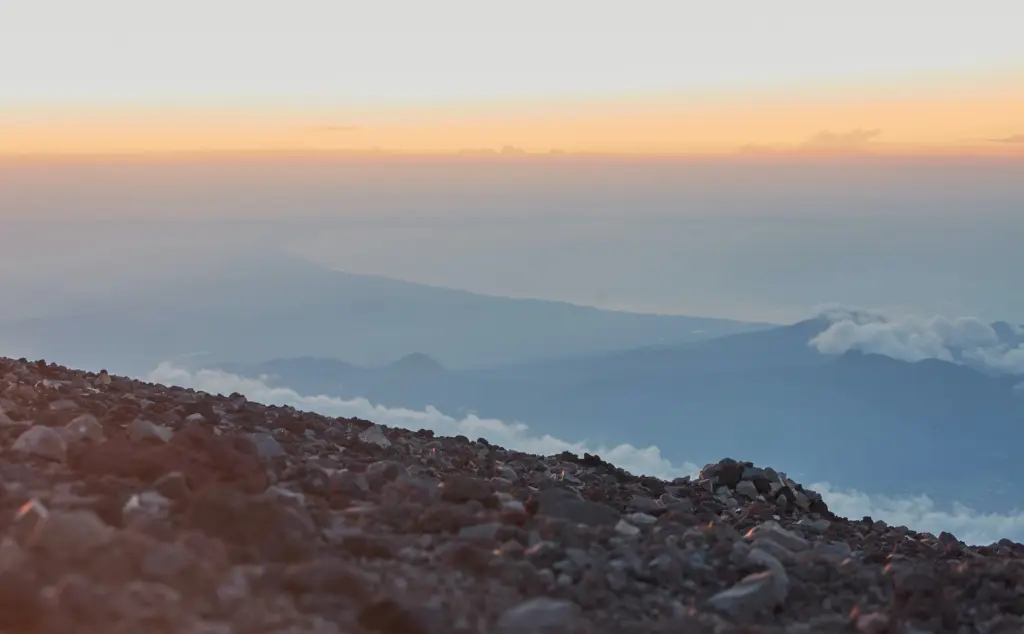
Fujinomiya Trail
Why Choose the Fujinomiya Trail :
- Majestic Southern Views : Fujinomiya Trail, located on the southern side of Mount Fuji, provides picturesque views of the southern Japanese Alps and Suruga Bay.
- Historical Shrines : The trailhead starts near the Fujisan Hongū Sengen Taisha, a revered Shinto shrine dedicated to Princess Konohanasakuya, the deity associated with Mount Fuji.
- Crater Rim : The Fujinomiya Trail is the closest route to the Kengamine Peak, the highest point of Mount Fuji’s crater. It offers you the opportunity to witness the vast crater up-close.
The Fujinomiya Trail is often considered to be one of the more straightforward routes up Mount Fuji, largely due to its high starting point at 2,400 m (7,875 ft).
Despite this advantage, the direct ascent means that there’s less opportunity for acclimatization, which can really make or break the hike.
The trail’s inclination is consistent, with only a few steep patches closer to the summit.
Covering a distance of approximately 8 km (5 mi) one-way (16 km or 10 mi roundtrip), the Fujinomiya Trail is relatively shorter compared to some of the other trails.
You can expect to take about 5 hours for the ascent and about 3 hours for the descent. In total, a round trip can be achieved within 8 hours.
Being the second most popular route after the Yoshida Trail, Fujinomiya witnesses a considerable influx of climbers. Its popularity is also attributed to its direct route, which some find more accessible.
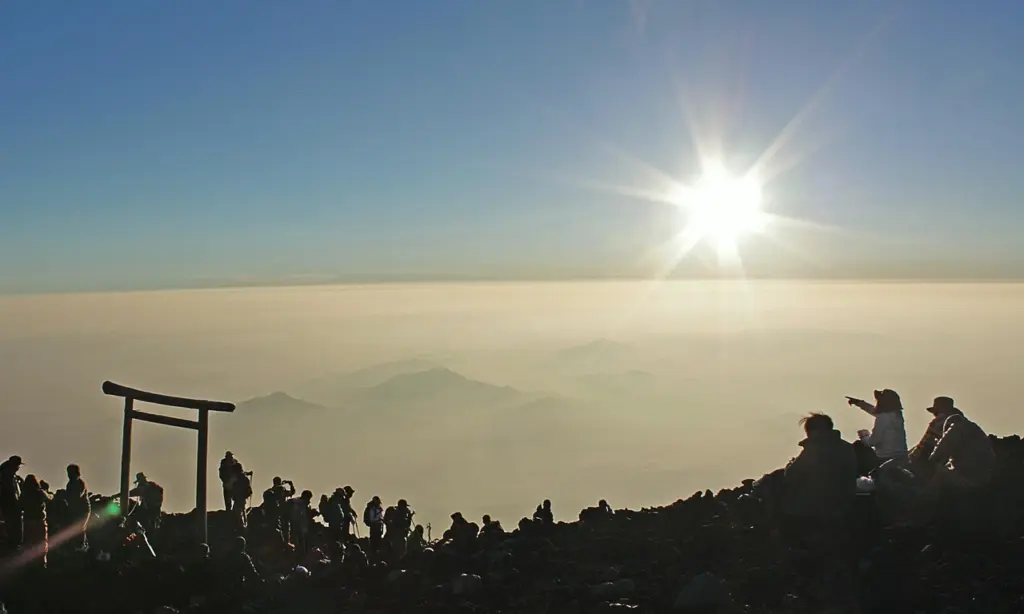
How to See the Sunrise at Mt. Fuji
Experiencing the sunrise from the summit of Mt. Fuji is a cherished moment for many climbers, often referred to as “Goraiko” which means “arrival of light.”
Here’s a primer to catch this mesmerizing view:
1. Select Your Viewing Spot
- From the Summit : This is the most popular choice. The summit offers an unobstructed view of the sunrise, with the sun rising from a sea of clouds beneath you.
- From the Mountain Huts : If you’re not keen on reaching the summit or if you’re concerned about the climb’s difficulty, many mountain huts along the ascent offer views of the sunrise.
- From the 5th Station : If you don’t plan on climbing, the 5th Station of some trails also offers a good vantage point.
2. Plan Your Climb
Overnight Climb : Many climbers start their ascent at night, aiming to reach the summit just before dawn. This is often called the “bullet climb.” If you’re aiming for the summit, typically start from the 5th Station around 8-10 PM (timing varies depending on your pace and chosen trail).
Stay in a Mountain Hut : Another option is to climb partway up the mountain in the afternoon, stay overnight in a mountain hut, and then continue to the summit or desired viewpoint in the early morning. Make sure to reserve your spot in the mountain hut ahead of time, especially during peak season.
- Sunrise time varies throughout the year. In July, it’s around 4:30 AM, while in late August and September, it’s closer to 5:00 AM. Check specific times before your climb.
- Alternatively, you can catch the sunset instead, which is an experience on its own. We couldn’t see the sunrise but did the sunset because we planned on doing it in one day and not at night. Instead, we saw Mt. Fuji’s enormous shadow completely swallowing the entire Kanto plains which was definitely a sight to behold!
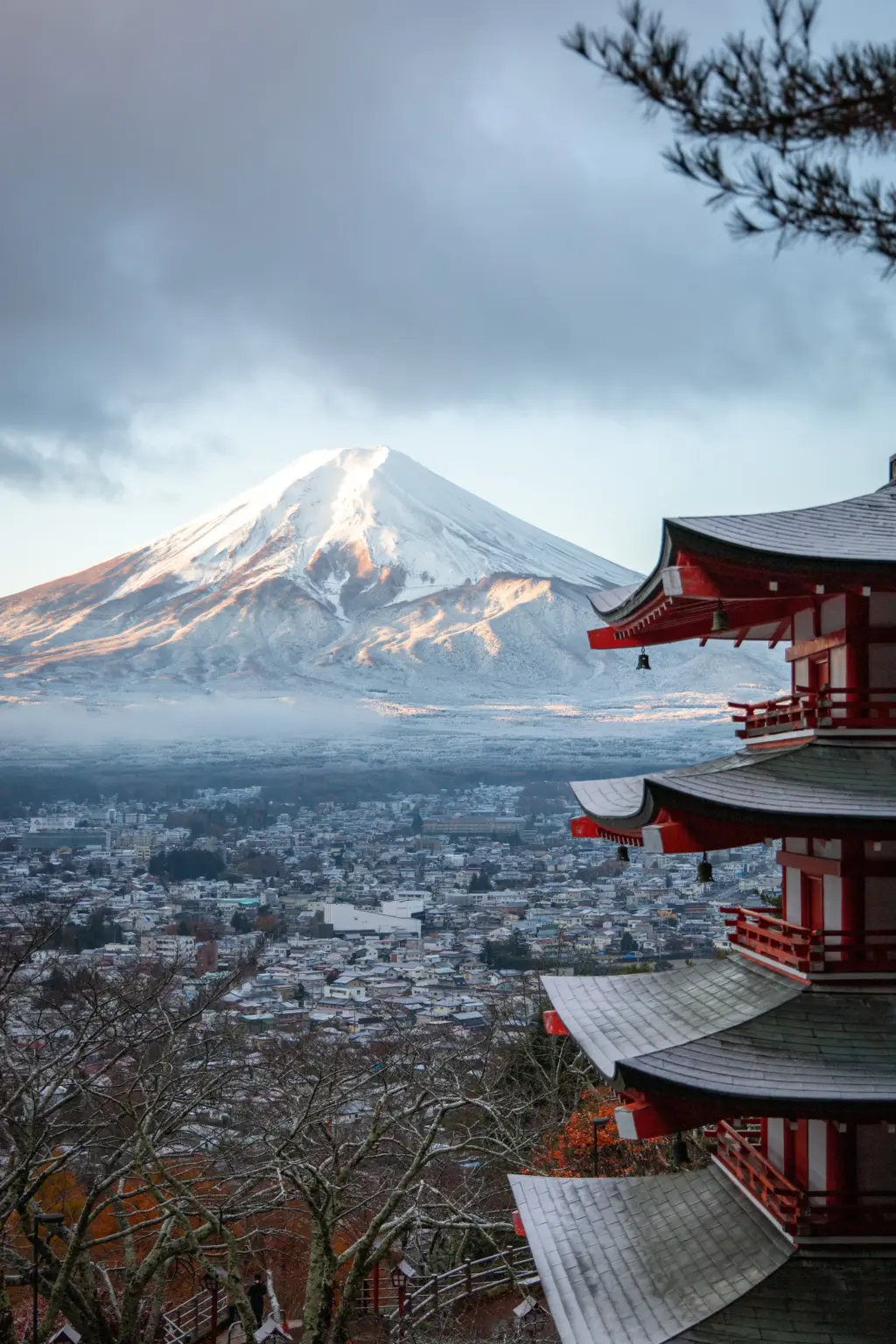
Best Mt. Fuji Tours
Alternatively, there are also tours that you can join that takes you can join from Tokyo that can take you all the way to the 5th station and around the Fuji Five Lakes area.
- Mt. Fuji Full-Day Sightseeing Trip – Discover Mount Fuji, one of the world’s most famous mountains and a UNESCO World Heritage Site. Explore the Kawaguchi Lake, 5th Station, and Oshino Hakkai on a full-day guided trip from Tokyo.
- Mt. Fuji and Lake Kawaguchi Scenic Bus Tour – Visit 4 of the most popular scenic spots around Lake Kawaguchi area with the backdrop of the beautiful Mt. Fuji. Admire thatched houses, quaint villages, pagodas, and stunning flowers.
When is the Best Time to Climb Mt. Fuji?
The best time to climb is around late July to mid-August . The weather is stable, and all amenities are open. Consider starting your climb during weekdays to avoid the weekend crowds if you can.
And of course, starting in the early morning can help you avoid congestion on the trail and give you ample time to reach the summit.
The official climbing season for Mt. Fuji is early July to early September .
Outside the official climbing season, climbing Mt. Fuji is highly discouraged. The weather conditions can be severe, with freezing temperatures, strong winds, and even snowfall.
Additionally, the huts and most services are closed, and rescue operations are limited to none. If you choose to climb outside the official season, it’s imperative to be an experienced mountaineer with appropriate gear and preparation.
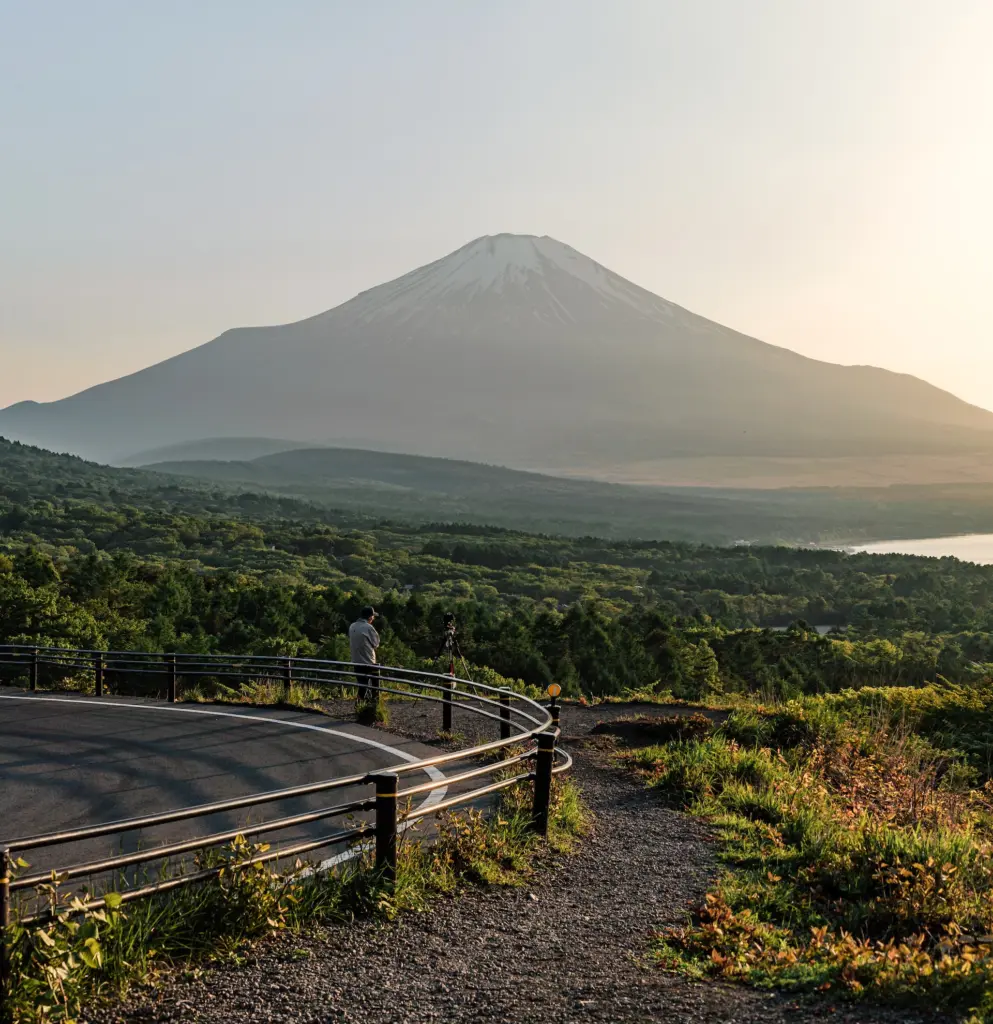
Mt. Fuji by month
- July : The start of the climbing season, with relatively warm temperatures. However, it’s also the rainy season, so expect unpredictable weather and prepare for rain.
- August : The warmest and the most popular month to climb Mt. Fuji. It offers clear skies but can also be quite crowded, especially during the Obon week (around mid-August).
- September : Weather starts to cool down, and while the first half remains popular, the conditions become progressively harsher towards the end of the month.
- October to June : These months fall outside the official climbing season. Expect cold temperatures, snow, and ice. Climbing during these months requires winter mountaineering skills and equipment.
What to Bring for Mt. Fuji
Ensuring you have the right gear can make your adventure safer and more enjoyable. Note that c amping is not allowed on the mountain, so tents are not required.
Here’s a detailed guide on what to pack:
- Breathable clothes : Bring an extra pair just in case
- Down jacket : You will be rotating your clothes a lot, adjusting to the fluctuating temperatures. Sometimes you’ll just be in a t-shirt and sometimes you have three layers on.
- Rain gear : Rain is unpredictable in the higher levels, there can be frequent showers at random intervals.
- Hiking shoes : Good hiking shoes go a long way! Especially one with good traction on gravel.
- Hiking socks : With moisture-wicking properties. Bring an extra pair in case you get blisters.
- First Aid Kit : Include bandages, antiseptic wipes, blister treatment, and any personal medications.
- Torch : If you’re planning on climbing Mt. Fuji at night, headlamps are preferable as they leave your hands free.
- Snacks : Nuts, dried fruits, energy bars, I also learned black chocolate helps reduce symptoms of altitude sickness!
- Money : You need to bring cash, whether it’s to use the toilets or to buy a bowl of ramen.
- Water : At least 2L to start with. Note that water gets more expensive as you go higher.
- Walking Poles : If you feel like a go-getter, rent or get hiking poles. They help a lot in balancing and reduce the strain on the knees by up to 25%!
- Sun Protection : You are quite close to the sun up there!
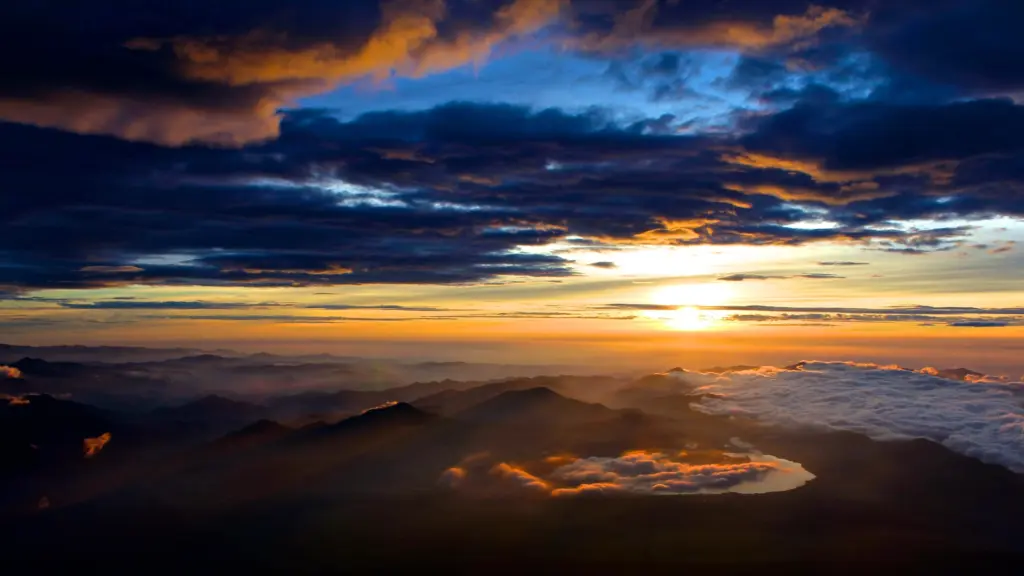
How to Stay Safe while Climbing Mt. Fuji
Mt. Fuji is no joke, every year there are always casualties, people have to be rescued, and even cases of death.
We felt the altitude sickness a lot during our hike, we saw other people puking as well. It can be quite a nasty endeavor.
When embarking on a journey to the summit of Mt. Fuji, prioritizing safety is paramount. The mountain presents real challenges and preparing for the potential risks can mean the difference between a successful hike and an emergency situation.
If you’re coming from abroad, then I highly recommend getting some travel insurance before attempting this climb.
Here are just some things to consider:
Mountain weather can change rapidly, and Mt. Fuji is no exception. Sunshine can quickly turn to rain, wind speeds can increase dramatically, and temperatures can plummet.
- Prepare for all conditions. Even in summer, temperatures at the summit can be near freezing. Waterproof and windproof clothing, as well as warm layers, are essential.
- During your climb, take periodic breaks, but keep them brief to prevent your body temperature from dropping.
- Websites like the Japan Meteorological Agency provide updated weather forecasts specifically for Mt. Fuji.
- Be cautious if rain, thunderstorms, or strong winds are forecasted. Avoid the summit if lightning is predicted.
2. Altitude Sickness
Altitude sickness is what our whole group encountered and had to deal with. Headache, dizziness, shortness of breath, nausea, and difficulty sleeping can all indicate altitude sickness.
- Before starting your ascent, take a break for about 1-2 hours near the 5th station to allow your body to adjust to the altitude.
- Walk at a slow and steady pace. Rapid ascension increases the risk of altitude sickness.
- Take deep breaths and exhale firmly from your stomach. This aids in better oxygen circulation.
- Drink water frequently. Sports drinks, which replenish electrolytes, can be more effective than plain water. Contrary to some beliefs, holding off on hydration can lower your metabolism and increase susceptibility to altitude sickness.
- Upon reaching your hut or resting area, give your body time to adjust to the altitude (around an hour). Sleeping immediately can lead to shallow breathing, increasing the risk of altitude sickness.
- If you or a group member starts showing symptoms, stop climbing and rest. Engage in conscious deep breathing.
- In the end, the best and most effective treatment for altitude sickness is descending to a lower altitude.
3. Oxygen Cans
You’ll find oxygen cans while climbing Mt. Fuji but use them sparingly. Here’s an in-depth look at their usage, benefits, potential downsides, and recommendations.
- Oxygen cans might temporarily alleviate symptoms, but they don’t address the root causes of altitude sickness. If symptoms persist or worsen, the best remedy is to descend to a lower altitude.
- Relying on supplemental oxygen can give you a false sense of well-being, leading you to push yourself beyond safe limits and ignore other symptoms of altitude sickness or physical distress.
- Oxygen cans can and will run out, so relying on them might not be the best strategy.
4. The Bullet Climb
The term “Bullet Climb” refers to the practice of climbing Mt. Fuji in a straight shot. It’s a fast-paced trek that tries to fit the entire Fuji experience into roughly a 12-hour window. It’s highly discouraged yet some people are forced to do it, it’s what we did. Here’s what you should know:
- For those with tight schedules, the Bullet Climb offers a way to experience Mt. Fuji without committing multiple days.
- The continuous climb without adequate rest can be extremely tiring. The lack of sleep combined with the physical exertion can make the trek more challenging than expected.
- The rapid ascent without allowing time for acclimatization increases the risk of altitude sickness.
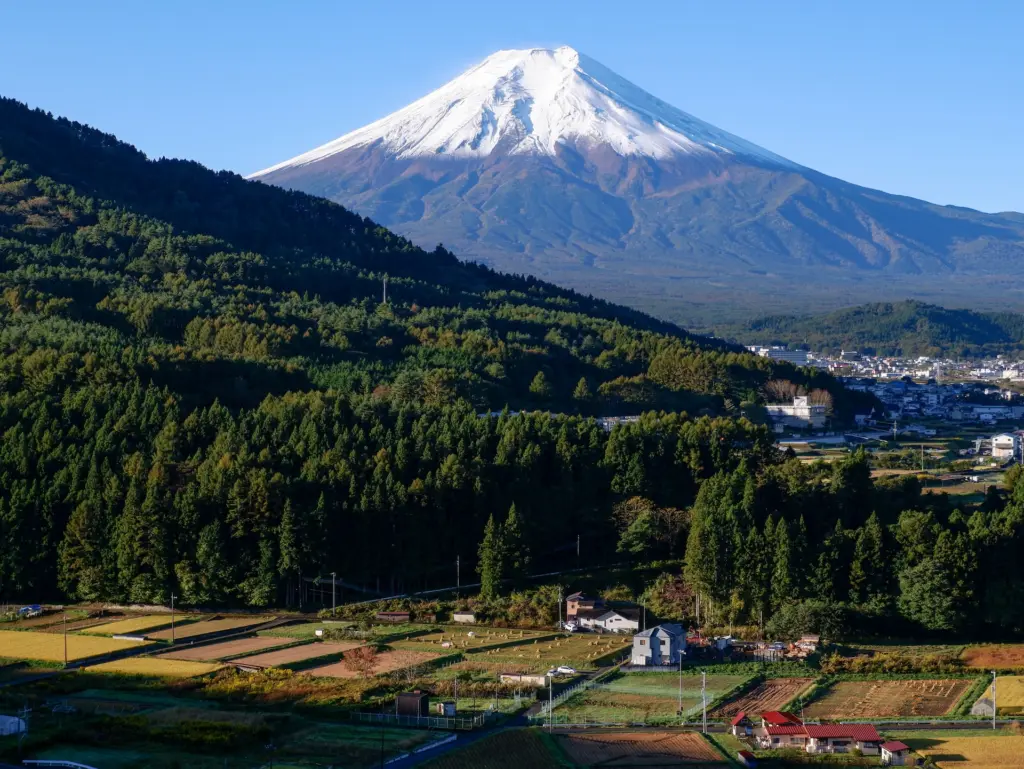
Mt. Fuji and Environmental Responsibility
Mt. Fuji, being designated as a UNESCO World Heritage site means that the mountain isn’t just recognized for its natural beauty, but also for its cultural impact.
This designation carries with it stringent guidelines to protect and preserve the mountain’s sanctity and environment. Here’s what you should know:
- Carry some trash bags with you. With no public trash cans available on the mountain, you must be prepared to carry out all waste. Everything you bring should return with you.
- Removing rocks, plants, or any natural elements is strictly prohibited.
- The toilets beyond the 5th station generally require a fee (honesty system). Carry change for this. Do not urinate outside designated facilities, as this not only affects the environment but also disrespects the sacred nature of Mt. Fuji.
Mt. Fuji Post-Climb Recovery Tips
- Drink electrolyte solutions to replace lost minerals from all the sweating.
- Consume a balanced meal with complex carbohydrates, proteins, and good fats. This will help in muscle repair.
- Gentle stretching can aid in reducing muscle tightness and help in faster recovery. Focus on major muscle groups like quads, hamstrings, calves, and back muscles.
- Take a warm bath (an onsen is even better!) and just take it easy the next day.
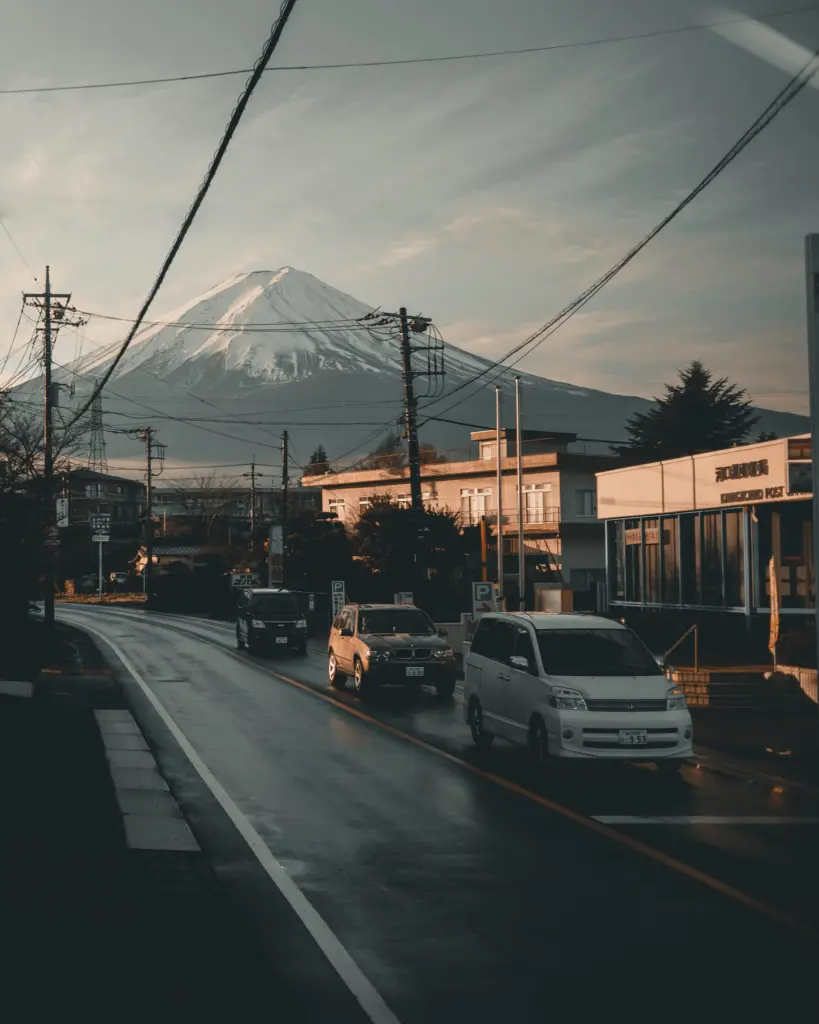
How to Get to Mt. Fuji's Trailheads
Getting to any of Mt. Fuji’s trailheads requires some careful planning, you have to be ready to get up early because it’s not only going to be you vying for a seat in public transportation. This is especially so if you’re planning on doing Mt. Fuji in one day, which is not recommended by the way, but some people are short on time and mountain hut bookings can be difficult or expensive which is why we opted to go for a one day hike.
We almost missed the last bus back so I can’t stress enough to have a good entry and exit plan for Mt. Fuji. I can’t imagine staying there the whole night in the cold after an exhausting hike.
Public transportation is certainly reliable, you can also opt to rent a car for a much more stress-free and convenient experience.
Yoshida Trailhead
- Take the Mountain Bus directly to Fuji-Subaru Line 5th Station.
- Tickets can be purchased via smartphone .
- Take the Expressway Bus directly to Fuji-Subaru Line 5th Station.
- Access via the Kawaguchiko Interchange on the Chuo Expressway or the Fujiyoshida Interchange on the Higashi Fujigoko Toll Road.
- Proceed on the Fuji-Subaru Line . Please note that it is not operational 24/7 during the mountain-opening period. Always check business hours.
- This will lead you to the Fuji-Subaru Line 5th Station.
Subashiri Trailhead
- Take the Mountain Bus directly to Subashiri Trail 5th Station.
- Outside of specified peak dates, access via the Subashiri Interchange on the Higashi Fujigoko Toll Road.
- Continue on the Fuji-azami Line to reach Subashiri 5th Station.
- Take the shuttle bus to Subashiri 5th Station (Operational between 6 AM to 5 PM outbound and 6:45 AM to 5:45 PM inbound, every 60 minutes).
Gotemba Trailhead
- Take the Mountain Bus directly to Gotemba Trail New 5th Station.
- Access via Subashiri Interchange on the Higashi Fujigoko Toll Road or Gotemba Interchange on the Tomei Expressway.
- Follow R138 to the Gotemba-Fuji Park Line .
- Continue on the Mt. Fuji Skyline to reach Gotemba New 5th Station.
Fujinomiya Trailhead
- Take the Mountain Bus directly to Fujinomiya 5th Station.
- Take the Expressway Bus directly to Fujinomiya 5th Station.
- Access via Gotemba Interchange or Susono Interchange on the Tomei Expressway. Proceed on the Mt. Fuji Skyline to Fujinomiya 5th Station.
- Alternatively, via Fuji Interchange on the Tomei Highway or Shinfuji Interchange on the Shin-tomei Highway. Follow Nishi-Fuji Toll Road and R139 to Mt. Fuji Skyline , leading to Fujinomiya 5th Station.
- Follow the same routes as above, but stop at Mizugatsuka parking lot . Take the shuttle bus to Fujinomiya 5th Station. The bus operates between 6 AM to 5 PM outbound and 7 AM to 6 PM inbound, every 60 minutes.
Plan Your Trip to Japan | Best Travel Resources
Book Your Accommodations
- Booking.com – the world’s leading online booking platform for accomodations around the world, they have an extensive amount of available listings with zero booking fees and best price guarantees.
- Hostelworld – a backpacker’s best friend, Hostelworld has the largest collection of hostels and guesthouses for affordable prices.
Don’t Forget Insurance
- SafetyWing – from Nomad Insurance, an insurance by nomads for nomads. They understand our lifestyle well and have really comprehensive and flexible plans that cater to any traveler.
Find Cheap Flights
- Kiwi.com – my go-to for booking and finding the cheapest flights and it’s helped me save tons of money. They do virtual interlining which is connecting flights from airlines that do not codeshare, so you can find routes that you wouldn’t be able to find normally.
Join Tours & Activities
- GetYourGuide – is one of the best places to find unique tours and activities. I found that it’s an excellent way to meet fellow travelers and create fond memories. They are not only limited to tours as they also offer niche services such as skip-the-line tickets or private transfers.
Catch a Ride
- Rentalcars.com – nothing beats the freedom of the road, Rentalcars.com is the world’s largest online car rental service. They operate across 160 countries so they’re the perfect partner to work with if you find yourself wanting a ride.
SHARE THIS POST
Read this next.
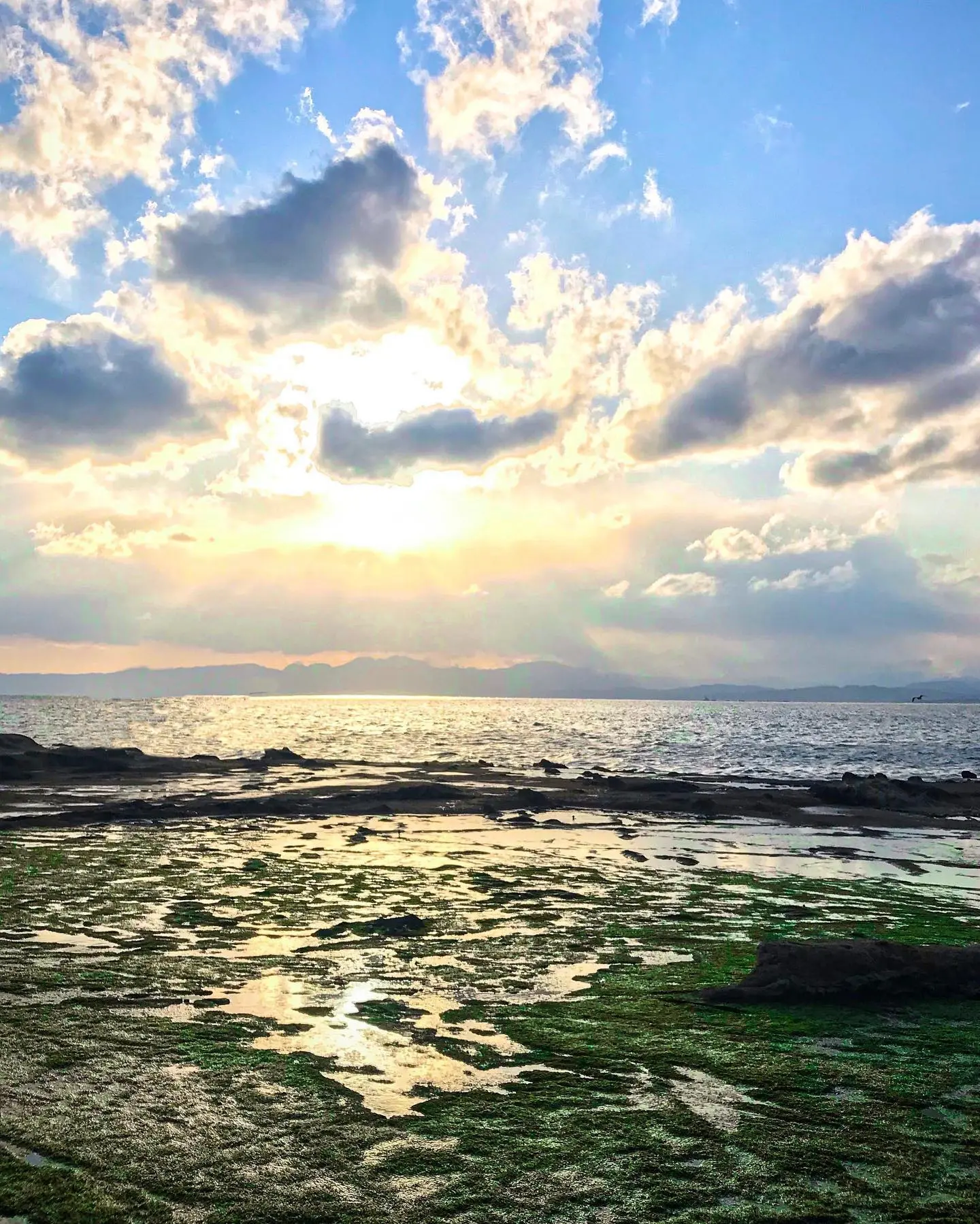
15 Wonderful Things to Do on Enoshima | A Tokyo Day Trip
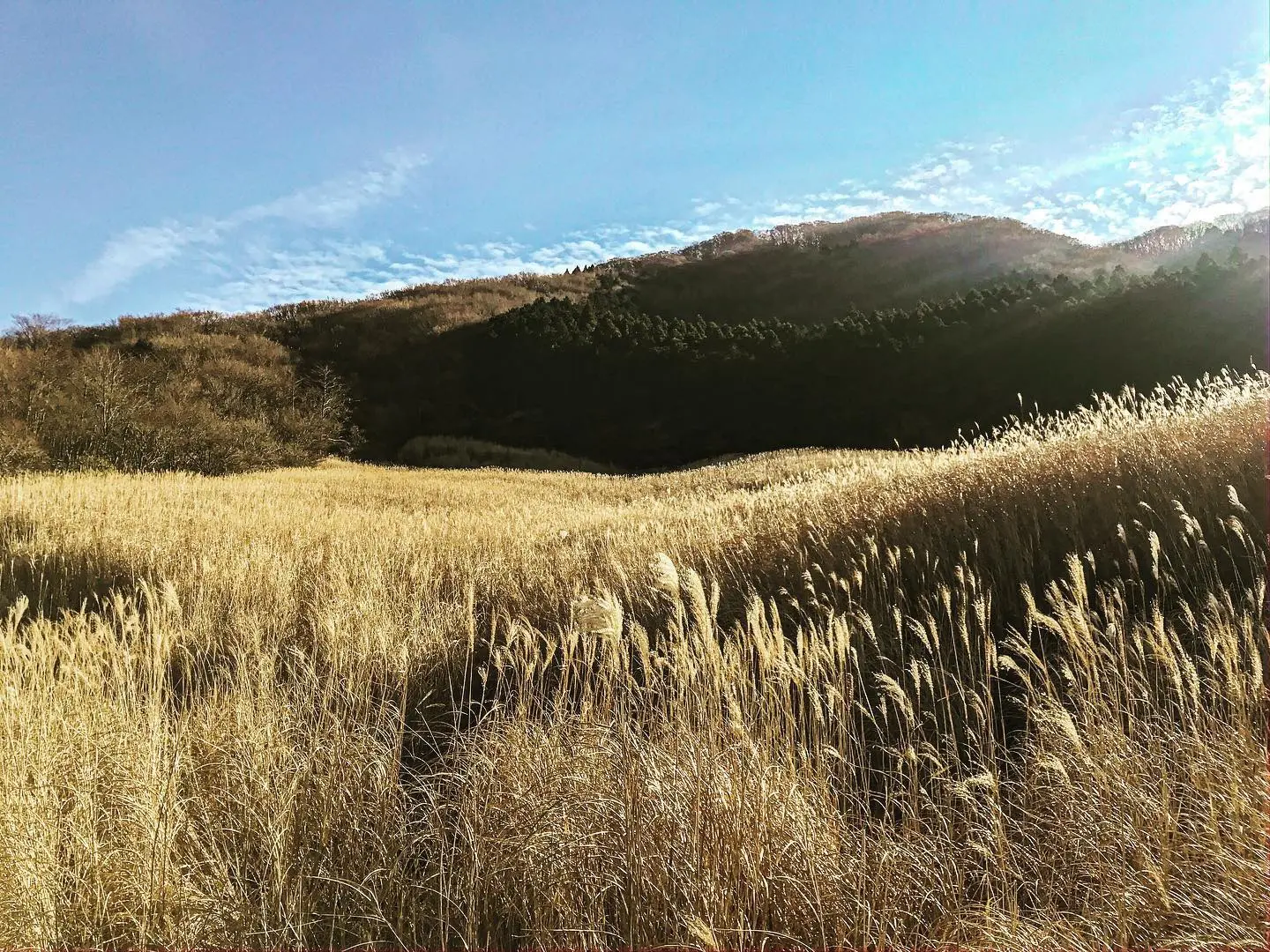
Couchsurfing in Japan | Exploring the Mystical Hakone
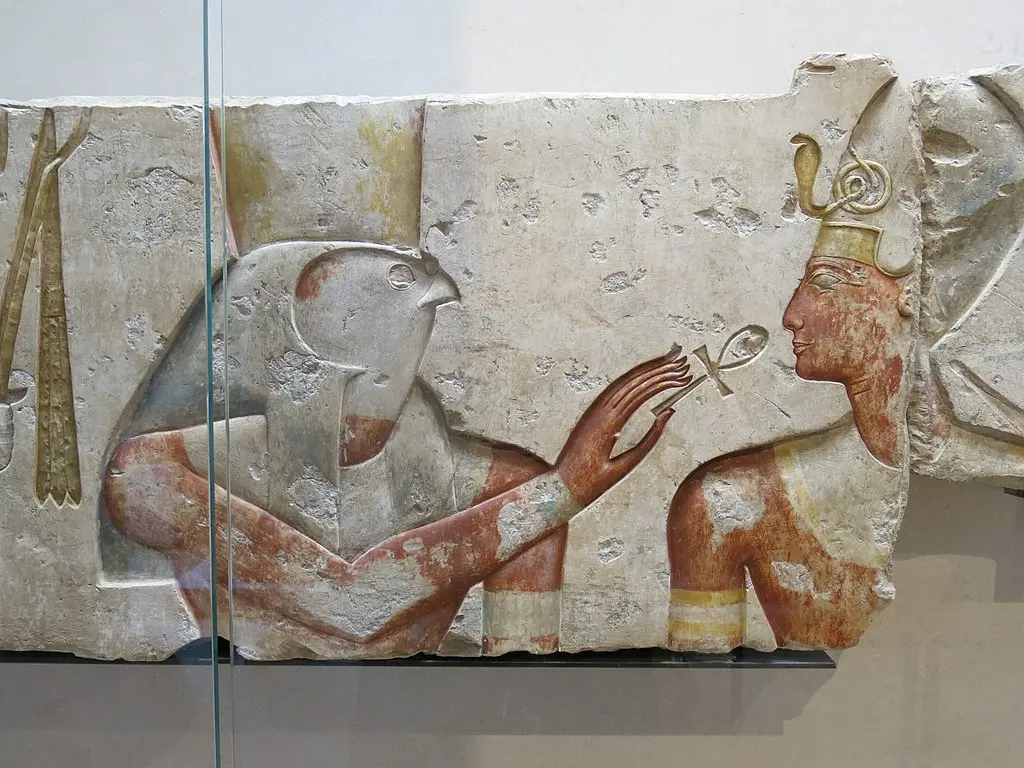
The Ankh (Key of Life) | Symbolism in Egyptian Mythology

Leave a Reply Cancel reply
Your email address will not be published. Required fields are marked *

Hi, I’m Brandon
A conscious globe-trotter and an avid dreamer, I created this blog to inspire you to walk the Earth.
Through tales of travel, cultural appreciation, and spiritual insights, let’s dive into the Human Experience.
RECENT ARTICLES

12 Awesome Things to Do in Casco Viejo, Panama

5 Easy Steps to Create a Meaningful Sankalpa
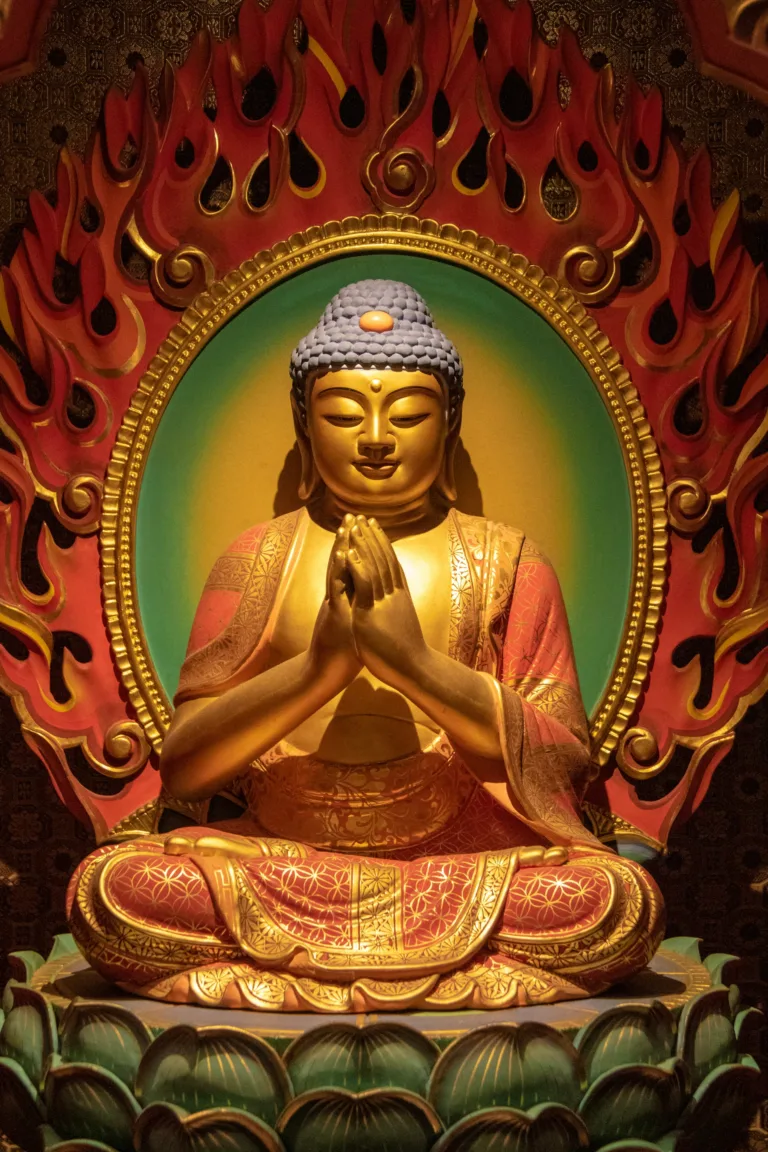
The 4 Stages of Enlightenment in Buddhism | Simplified
Popular articles.
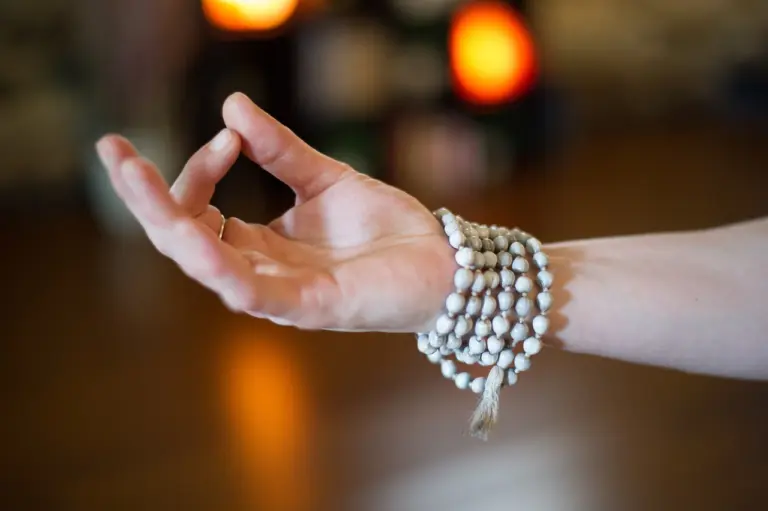
The Science Behind Mudras: Explore 5 Powerful Hand Gestures
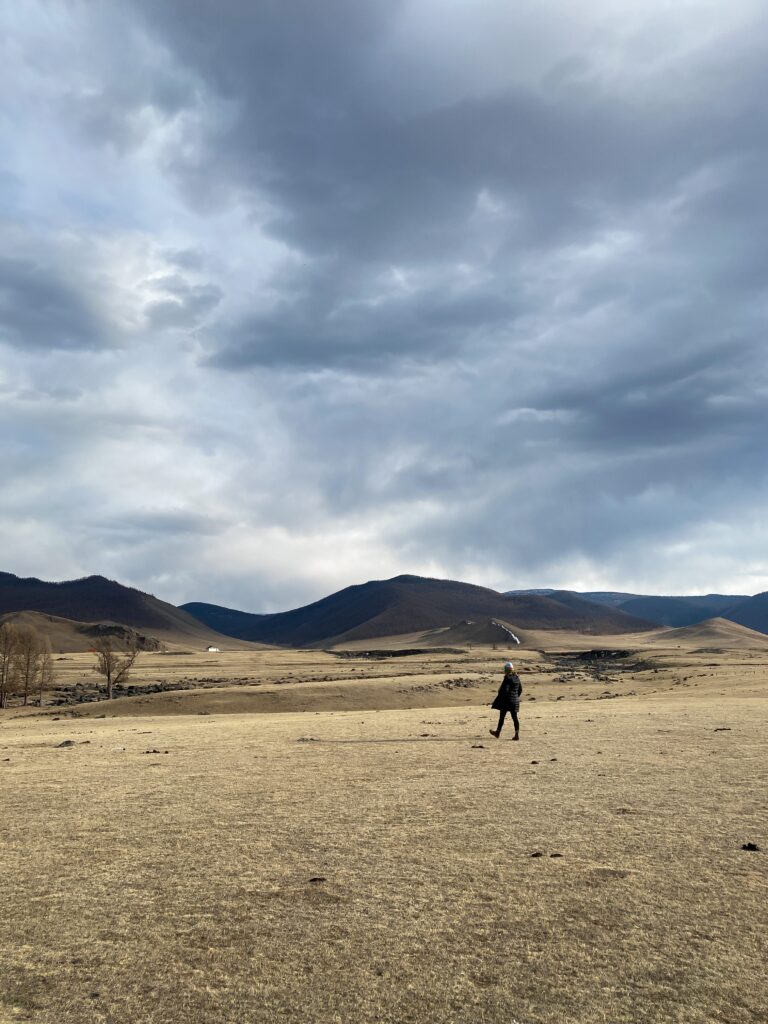
11 Ways to Turn Your Next Trip into a Spiritual Journey
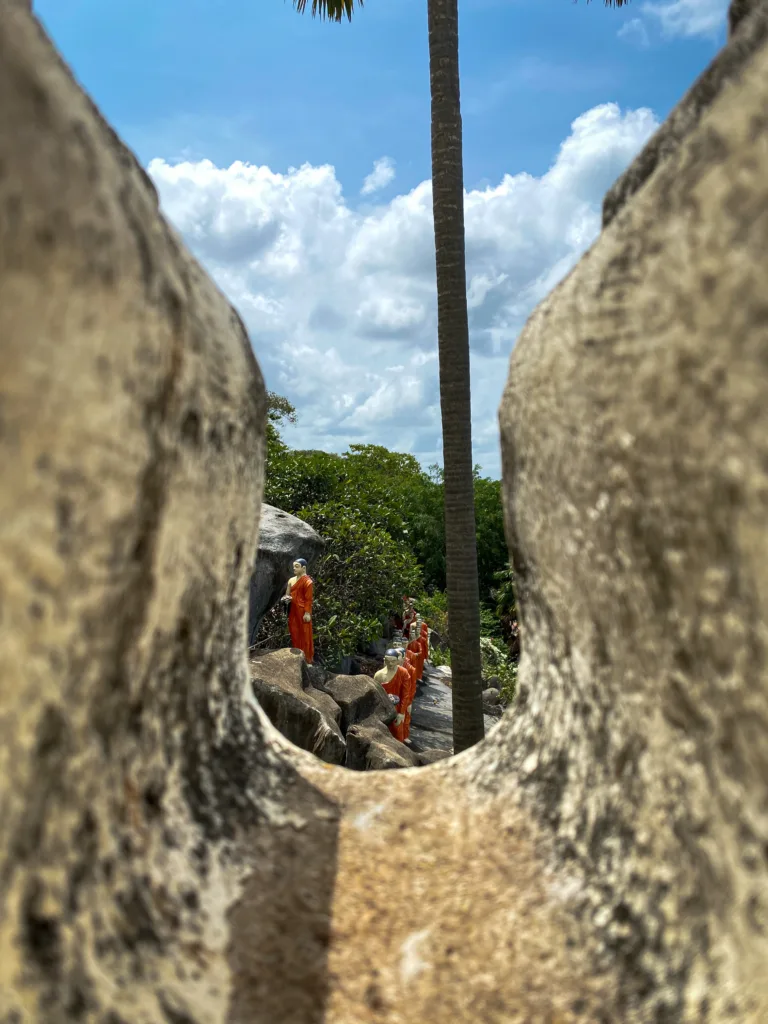
Best of Sri Lanka 7-Day Travel Itinerary (Cultural Triangle)

Seven Sages of Greece | Famous Quotes & the Delphic Maxims
Subscribe for the latest blog drops, photography tips, and curious insights about the world.

© 2023 ALL RIGHTS RESERVED.
- Destinations
- Privacy Policy
Want to get in touch? Feel free to fill in the form below or drop me an e-mail at [email protected]
- Subscribe Digital Print

- Semiconductors
- Latest News
- Deep Dive Podcast
Today's print edition
Home Delivery
- Crime & Legal
- Science & Health
- More sports
- CLIMATE CHANGE
- SUSTAINABILITY
- EARTH SCIENCE
- Food & Drink
- Style & Design
- TV & Streaming
- Entertainment news
Iconic Mount Fuji 100 enters new era with World Trail Majors
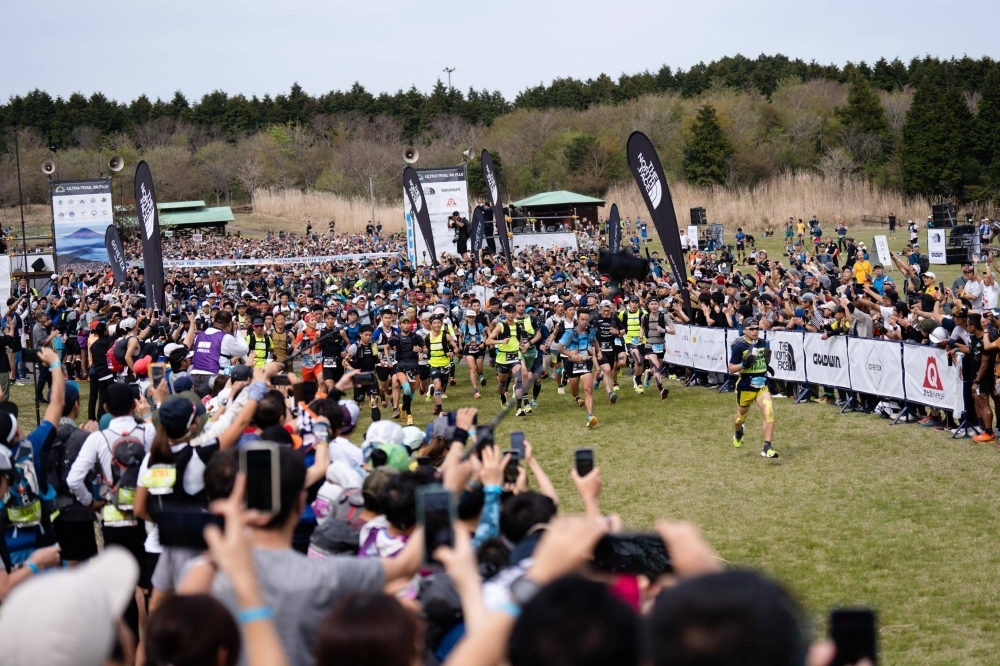
For the iconic Mount Fuji 100, Friday marks the start of 3,400 runners’ grueling slogs around Japan’s highest peak — and the dawn of a new era.
Perhaps needless to say, neither course is for the faint of heart.
“I once read, ‘If it scares you, do it.’ and that is one of the things that runs through my mind whenever I enter a big race,” says Alice Handscomb, a first-time Kai participant from Iwate Prefecture.
The Mount Fuji 100 Initially gained international acclaim as the world's first sister race to the famed Ultra-Trail du Mont-Blanc (UTMB) in France and subsequently through its affiliation with the now defunct Ultra-Trail World Tour, which ran from 2014 to 2019. But after the 2019 edition, Mount Fuji 100’s international allure waned amid pandemic disruptions and severed ties with UTMB.
Despite its ongoing status as Japan's premier ultra-trail race, many in the running community felt something was missing over the past few events.
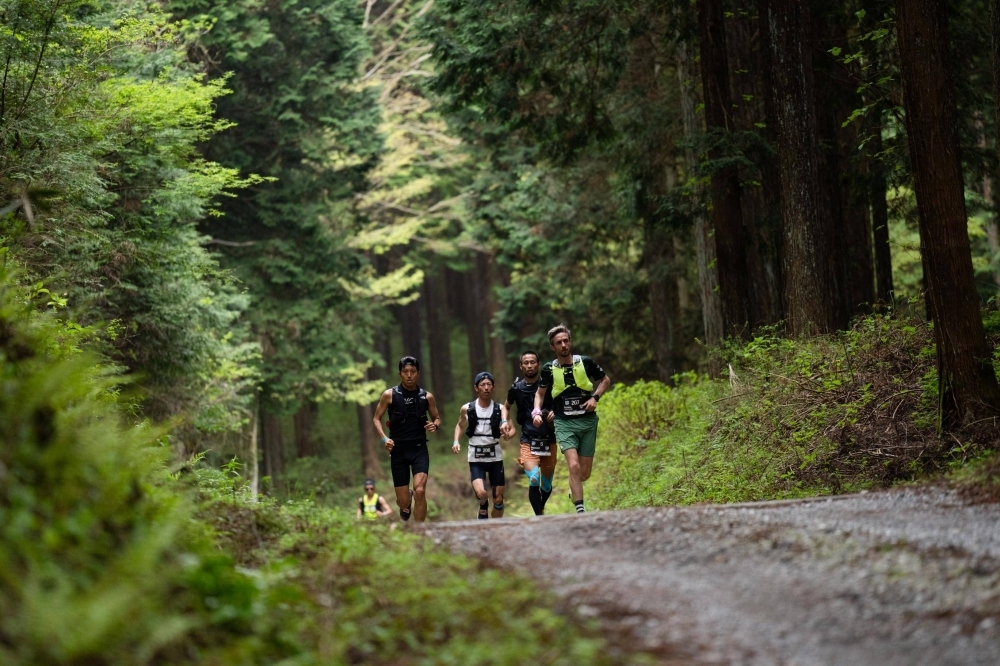
Enter the World Trail Majors and a potential for the Mount Fuji 100 to return to its place as the top destination trail race in Asia.
The Gran Canaria World Trail Majors, established in November 2023, represent a consortium of 10 ultra-distance trail races spanning from January to November. Viewed by many as an alternative to the current UTMB World Series monopoly, these races maintain their independence, allowing participants to enter any event within the series without the need to accumulate points from their other races.
Among the 10 races are renowned events like the Hong Kong 100, Transgrancanaria, The Grand Raid des Pyrenees and the Ultra-trail Cape Town. When the series was first announced last year, it seemed like an inevitability for a Japanese race to join the series, with the Mount Fuji 100 emerging as the prime candidate.
"Mount Fuji 100 is an iconic fixture in the international trail running calendar,” said Sergio Fernandez, coordinator of the World Trail Majors. “From our initial discussions, their involvement was essential, as every organizer welcomed their participation with enthusiasm.
“Would a series be possible without Mount Fuji 100? Probably yes. Would it be the same? Absolutely no."
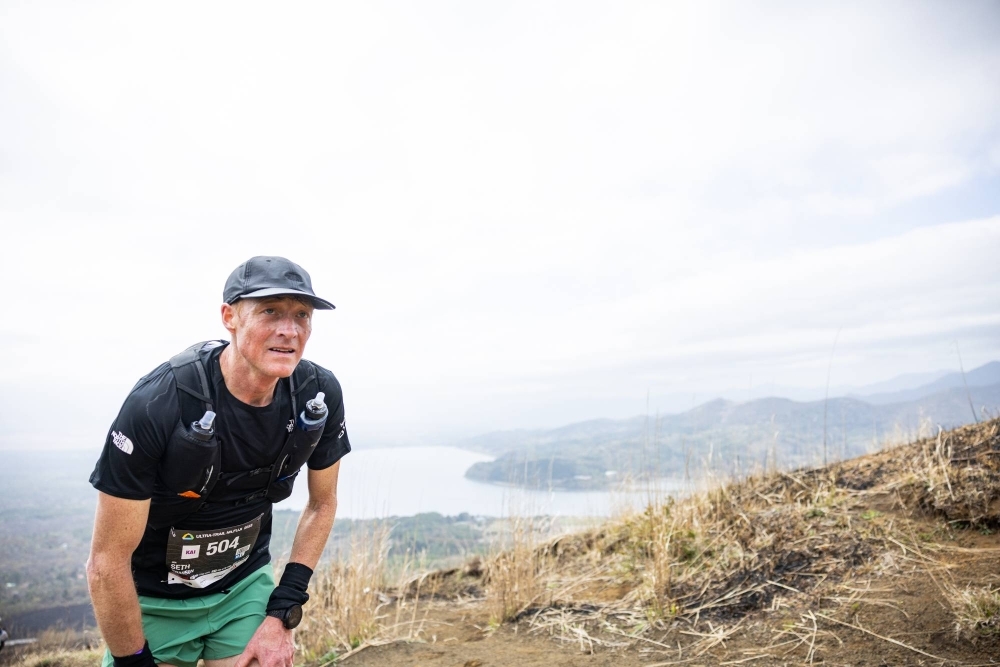
The race — perhaps now more than ever — is a bucket list event for countless runners around the world.
The course, however, presents a monumental challenge for both seasoned professionals and dedicated amateurs alike.
Canadian Craig Sutton, a long-term resident of Shizuoka Prefecture and four-time finisher of the Mount Fuji 100, reflected on the arduous journey he faces as he prepares to tackle the 160-km (100-mile) division for a fifth time.
"I have never had a really good race at UTMF/Fuji100. Either it is knee or stomach problems that have done me in and turned the race into a long ‘death march’ at times. ... I know that in 100 miles there will be problems."
Preparing for such a grueling race requires years of dedication and training, as participants strive to conquer not only the physical demands, but also the mental obstacles along the way. In a race that takes many participants over 40 hours to complete, the mental battle of not giving in to myriad ailments is the difference between reaching the end of the race or a dreaded DNF (did not finish).
The course, while beautiful, poses a daunting test navigating the forest trails and roads encircling the majestic Mount Fuji. Unlike the barren summit, these foothills are a trail runner's haven, boasting verdant mountains, dense woodlands, and tranquil lakes.
"The unique thing about (Mount Fuji 100) is that it alternates between flat, runnable sections and long, tough climbs and descents," said Dylan Bowman, a two-time winner of the race.
Navigating steep slopes, rocky terrain, and tree-root-strewn paths demands agility, endurance, and mental fortitude. Yet, amid the physical exertion and mental fatigue, runners also experience moments of awe and inspiration as they traverse the breathtaking landscapes and historic townscapes that dot the course.
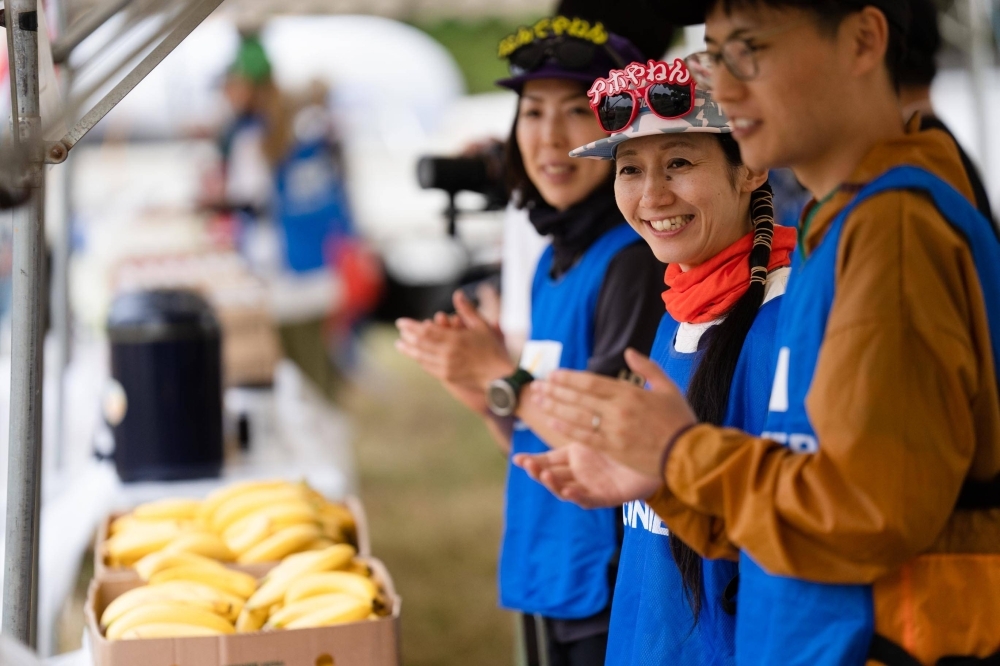
With its never-ending views of Mount Fuji, the race exists both as a representation of Japan to foreign runners and a place for native participants to test themselves against the world’s best on home soil.
"The Mount Fuji 100 is not just a race; it's an international event that brings together athletes from around the world to celebrate the beauty and challenge of trail running," said Hiroaki Matsunaga, a Japanese professional trail runner who has run every edition of the race.
Positioned as the fourth race in the World Trail Majors, the Mount Fuji 100 beckons elite athletes with the allure of prize money and the honor of clinching the inaugural series championship. The cumulative scores of an athlete’s top two performances of the year shape the standings in the World Trail Majors, making a victory in two races within the same calendar year almost a sure-fire way to claim the series’ first overall title.
American trail running legend Courtney Dauwalter, who won the Fuji race in 2018, is looking to put one hand on the trophy this coming weekend (she also won the series’ third race, Transgrancanaria on Spain’s Gran Canaria island in February). At 39 years of age, Dauwalter is still very much at her peak, and a series title would further cement her claim as the greatest of all time.
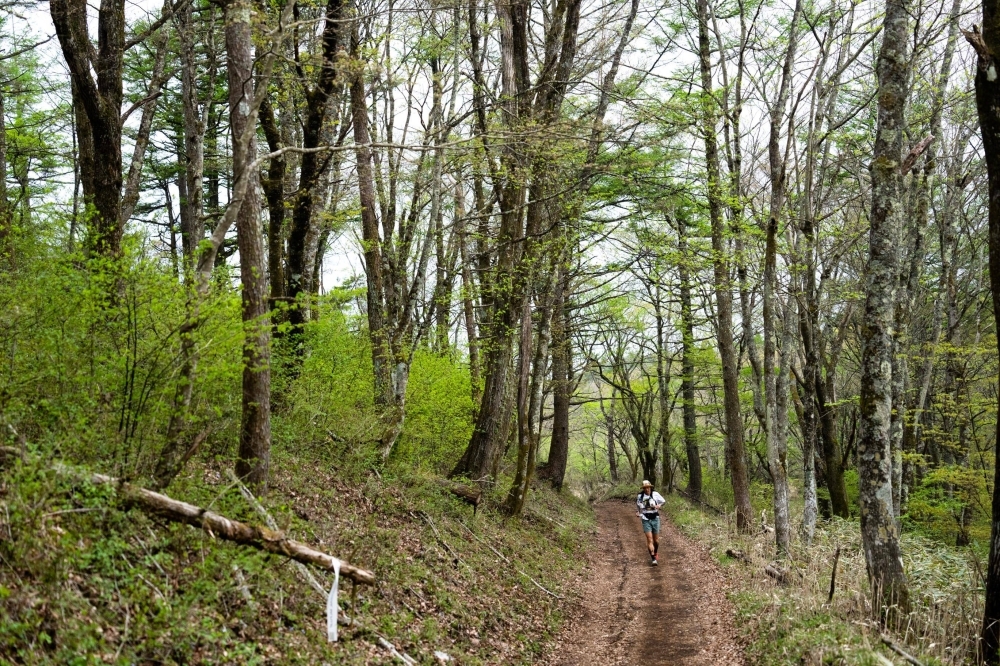
The men’s side lacks a clear-cut favorite, with several candidates in the field seen as front-runners, including last year’s second- and third-place finishers, Japanese runners Yuya Kawasaki and Tomonori Onitsuka. Another top favorite is Spaniard Andreu Simon Aymerich, who won the Transgrancanaria race in 2023.
In line with its international stature this year, organizers of the Mount Fuji 100 are actively enhancing the race experience for participants and spectators worldwide. In addition to being able to follow athletes' progress online, plans for live broadcasts in both Japanese and English demonstrate a commitment to engaging a global audience. Future initiatives include expanding broadcast coverage to Chinese-speaking audiences.
Tatsuo Chiba, co-chair of the race’s organizing committee, envisions the race as more than a mere competition — it’s also a place where trail runners from diverse backgrounds converge.
“We will create a place where trail runners from around the world can interact with each other in the shared language of trail running against the backdrop of Mount Fuji, which is a symbol for us Japanese,” Chiba said.
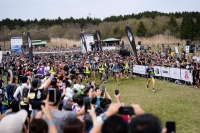
In a time of both misinformation and too much information, quality journalism is more crucial than ever. By subscribing, you can help us get the story right.

IMAGES
VIDEO
COMMENTS
Climb the highest and most iconic mountain of Japan, hassle free! We sell and run Mt. Fuji 2-day/1-night hike tours (via popular Fujiyoshida route) everyday from 2024 July 1 until September 10 (Sep 11 return). All departure is guaranteed so once you are booked, you are going (unless we have to cancel the tour due to a typhoon or very strong ...
TOUR DESCRIPTION. This incredible, one-of-a-kind adventure is a Hike and Bike Japan exclusive. We take you from the ocean (0 meters) all the way up to the summit of Mt. Fuji (3,776 meters) in two days. While doing the sea-to-summit has gained traction in recent years, most routes follow the roads, which turns the exercise into a a long ...
June 25 - Oct 15. The 1 Day Mt. Fuji tour will begin in Tokyo or the Mt. Fuji area, guiding you up and down Mt. Fuji and back to your accommodation, all within 24 hours. Available exclusively as a private tour option, we offer custom pick up and drop offs in the Tokyo, Mt. Fuji and Hakone areas. Learn More. Accepting 2024 tour reservations.
Guided tours with onsens. Duration: 10 hours 30 minutes. Best for: Onsen enthusiasts & relaxation retreats. Ticket: ¥10,000. Get convenient pick-ups and drop-offs from Tokyo to Mt. Fuji with this expert-led guided tour. Capture stunning views of Japan's tallest peak at the 4,000-year-old volcanic valley: Owaku-dani.
JUN 25 - SEP 10. IN SEASON 2-DAY MT. FUJI TOUR. ¥55,000 +13% tax/fees (¥62,150 tax incl) In our most popular summer offering, the 2-Day Mt. Fuji Tour, will give ample time in your pursuit to reach the summit of Mt. Fuji. After a long hike the first day, participants enjoy a hot dinner and rest over night in a mountain hut at 3400 meters ...
11:30am - Arrive at Mt.Fuji 5th station (Prepare to climb) 12:30 Leave Mt.Fuji 5th station via ascending route. 5:00pm~6:00pm - Arrive at 9th station (3,460m). Stay at Mountain Hut (Dinner and Rest) Day 2: 9th Station - Top of Mt.Fuji - 5th Station. 1:00~2:00 Wake Up (Eat Breakfast) 2:00~3:00 Leave Mountain Hut for the summit.
Trails to Climb Mount Fuji. There are four trails, each with ten stages, that you can take to the summit of Mount Fuji though most hikers typically start from the fifth station. Each of these trails is color-coded for convenience: Yoshida (Yellow Trail): This is the most popular trail to climb Mount Fuji and starts at the Fuji-Subaru Line 5th ...
Spend the night in a mountain lodge before heading to the summit's highest point, Kengamine Peak, to greet the sunrise. activity guided hiking. Details. Available. Summer (Jun to Aug), Autumn (Sep to Nov) Duration. 2 nights, 3 days. Cost. Adults (age 20 and over) and children (age 10 and over): 49,000 yen.
"Experience Mt. Fuji's Exceptional Nature on a Non-Summit Hike Tour - Visit Shiraito Waterfalls & Fujisan World Heritage Center"Join our Mt. Fuji Nature Tour for a chance to hike Mt. Fuji and experience its exceptional nature without summiting.Discover the climbing route and atmosphere up until the 6th station, then explore Mt. Fuji's rare natural beauty with a visit to the Shiraito Waterfalls ...
Visit one of Japan's most magnificent natural monuments on a 2-day trip to Mt Fuji from Tokyo. Accompanied by a knowledgeable guide, ascend to the summit of the magnificent mountain during the night to watch an enchanting sunrise over the spectacular urban landscape of Tokyo. Soothe aching muscles in the steaming serenity of outdoor hot springs and revitalize with flavorsome and fulfilling ...
Fuji Subaru Line 5th Station (Yamanashi Prefecture) Yoshida Trail Altitude: about 2300 meters Ascent: 5-7 hours Descent: 3-5 hours This is the most popular base for the climb to the summit, and the most easily accessible 5th station from the Fuji Five Lake region and central Tokyo.Lots of mountain huts line the trail around the 7th and 8th stations, and there are separate trails for the ascent ...
by Kayla Gallocher. Updated: March 6, 2024. In the Fuji-Hakone-Izu National Park sits Japan's highest peak, Mount Fuji. It is a dormant stratovolcano that reaches 3 776m above sea level and has not erupted since the year 1707. Mount Fuji has been deemed a UNESCO World Cultural Heritage Site and is considered sacred by the people of Japan.
2. Mount Fuji and Hakone 1 Day Tour with optional return by bullet train Highlights. This 11-hour tour found on Viator will take you to Mount Fuji highlights such as Mount Fuji Subaru Line 5th Station, Lake Ashi, and the Hakone Ropeway.All places from where you can enjoy beautiful views of Mount Fuji.
Mount Fuji was once free to climb. The donation-based entrance has since turned into a mandatory fee, helping to protect and maintain the trails. The climbing pass now costs around ¥1,000 - less than $10. Buses from Kawaguchiko train station to the 5th Station cost 1,500 Yen one-way (Around $11).
Day 1: Fujinomiya Trail to the Ninth Station. Mount Fuji is divided into 10 stations, of which the first 5 are paved. Your hike begins at the Fujinomiya fifth station, the head of the Fujinomiya trail at 7,874 feet (2,400 m) above sea level. After some time to get used to the altitude, start trekking on the rugged trail, the Suruga Bay opening ...
Mount Fuji is made up of 10 stations, and each station is an indication of a hiker's present altitude on a mountain, with the first station at the foot of the mountain and the 10th at the summit. The usual starting point for many hikers is the 5th station, which in the case of the Yoshida trail, is the Fuji Subaru Line 5th station.
Here we walk among ancient trees at the foot of Mt. Omuro, one of the satellite volcanic mountains on the west flank of Mt. Fuji at 1200 meters. Tour about 7 hours. Maximum 7 people. 40,000 yen per person/30,000 under age 12. Solo travelers 60,000 yen.
This final twilight climb offers a secluded, spiritual experience, offering you a stunning sunrise over the clouds. The summit of Mt. Fuji is approximately a 2 hour climb from Akaiwa Hachigo at a relaxed, steady pace. 3:30-5:30 am | Arrive on Mt. Fuji peak The sunrise atop Mt. Fuji is known as goraiko or "Buddha's Halo".
The trail stretches approximately 20 km (12 mi) round-trip. Starting from the fifth station at an altitude of 2,300 m (7,545 ft) , climbers usually take about 6 hours to reach the summit and about 4 hours to descend, making for a total of 10 hours of hiking. The Yoshida Trail is, without a doubt, the most popular route to the summit of Mount ...
The trail starts from Fuji Subaru Line 5th Station, and it's particularly favored for those aiming to watch the sunrise from the summit, as it has great vantage points. b) ... After visiting Mount Fuji, the tour typically proceeds to Hakone, an area known for its hot springs, traditional inns, and Lake Ashi. A boat cruise on this picturesque ...
From the towers and gadgets of Tokyo to the serenity of sacred shrines, this trip provides the perfect blend of guided excursions and free time to explore this fascinating region at your own pace. Linger in the gardens of Kyoto, shoot through the mountain air on a Shinkansen bullet train, and stay in a traditional ryokan for the ultimate in ...
Welcome to Mt. Fuji National Park, the stunning natural oasis located in Japan known for its diverse landscape and rich cultural history.From its picturesque forests and serene shrines, to its breathtaking waterfalls and rejuvenating natural hot springs, this national park has something for everyone.Mt. Fuji is also a popular destination for climbing enthusiasts, with its iconic peak rising to ...
For the iconic Mount Fuji 100, April 26 marks the start of 3,400 runners' grueling slogs around Japan's highest peak — and the dawn of a new era. Founded in 2012, the Mount Fuji 100 ...